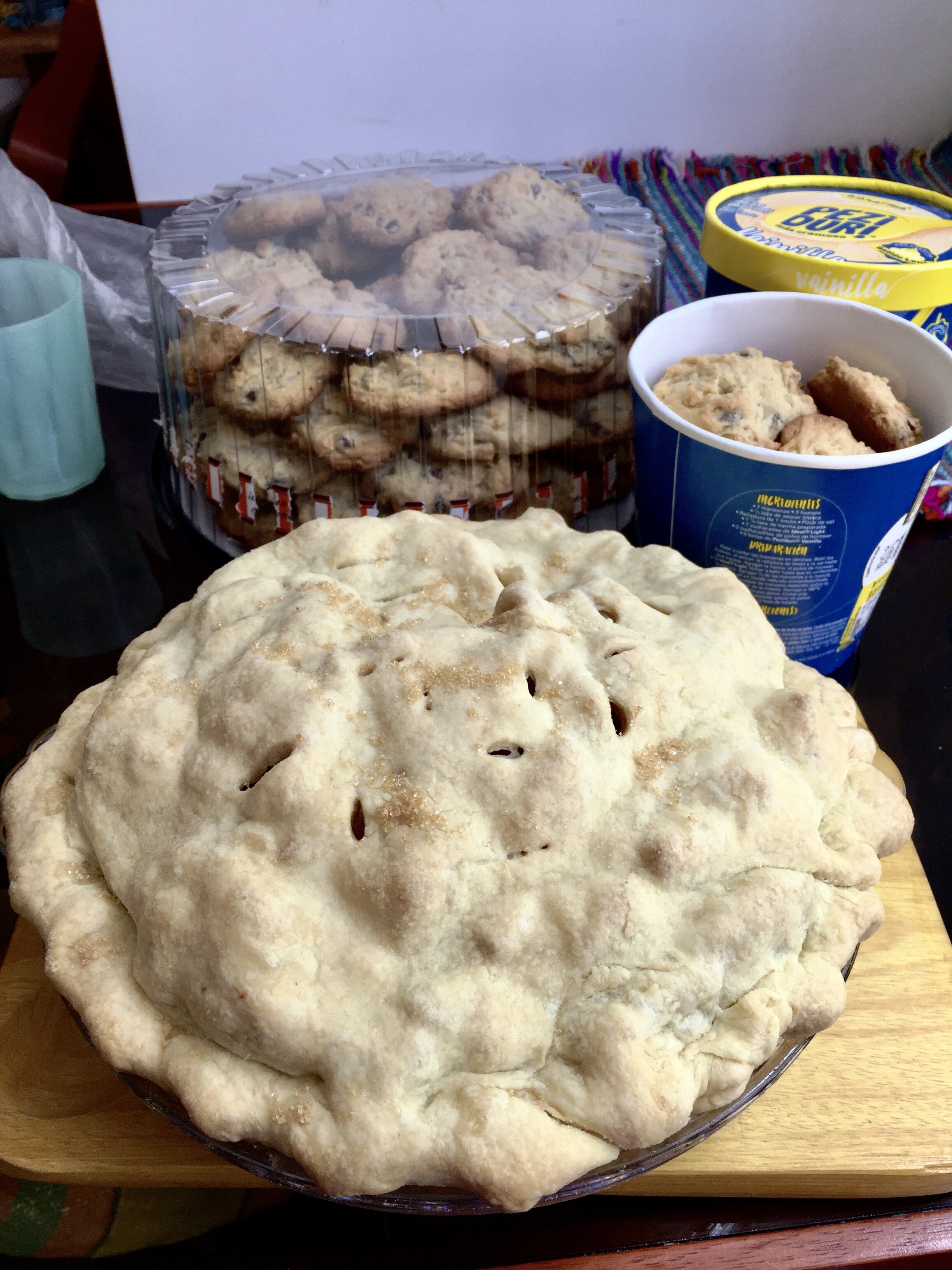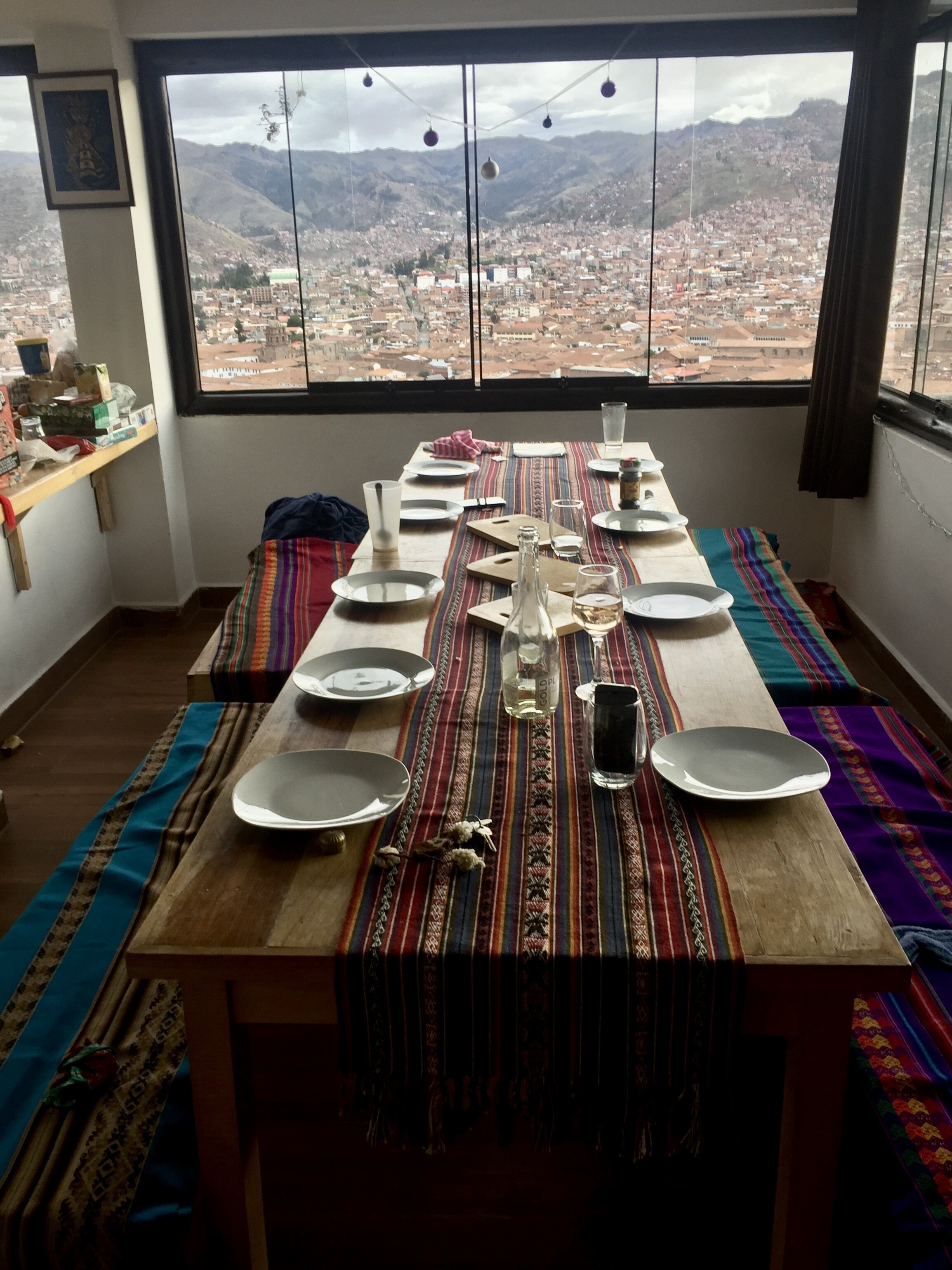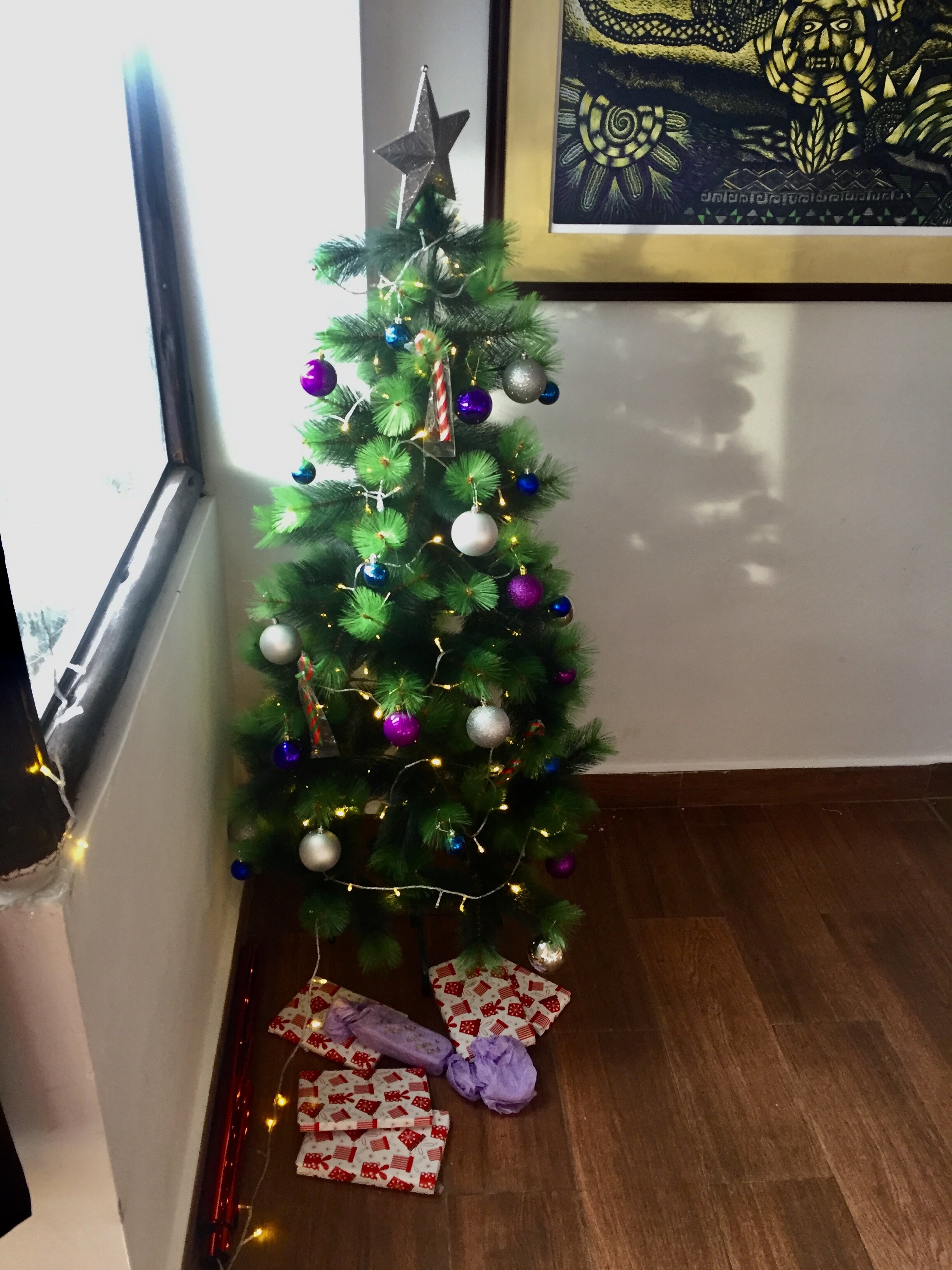Covid in Cusco: Week 41
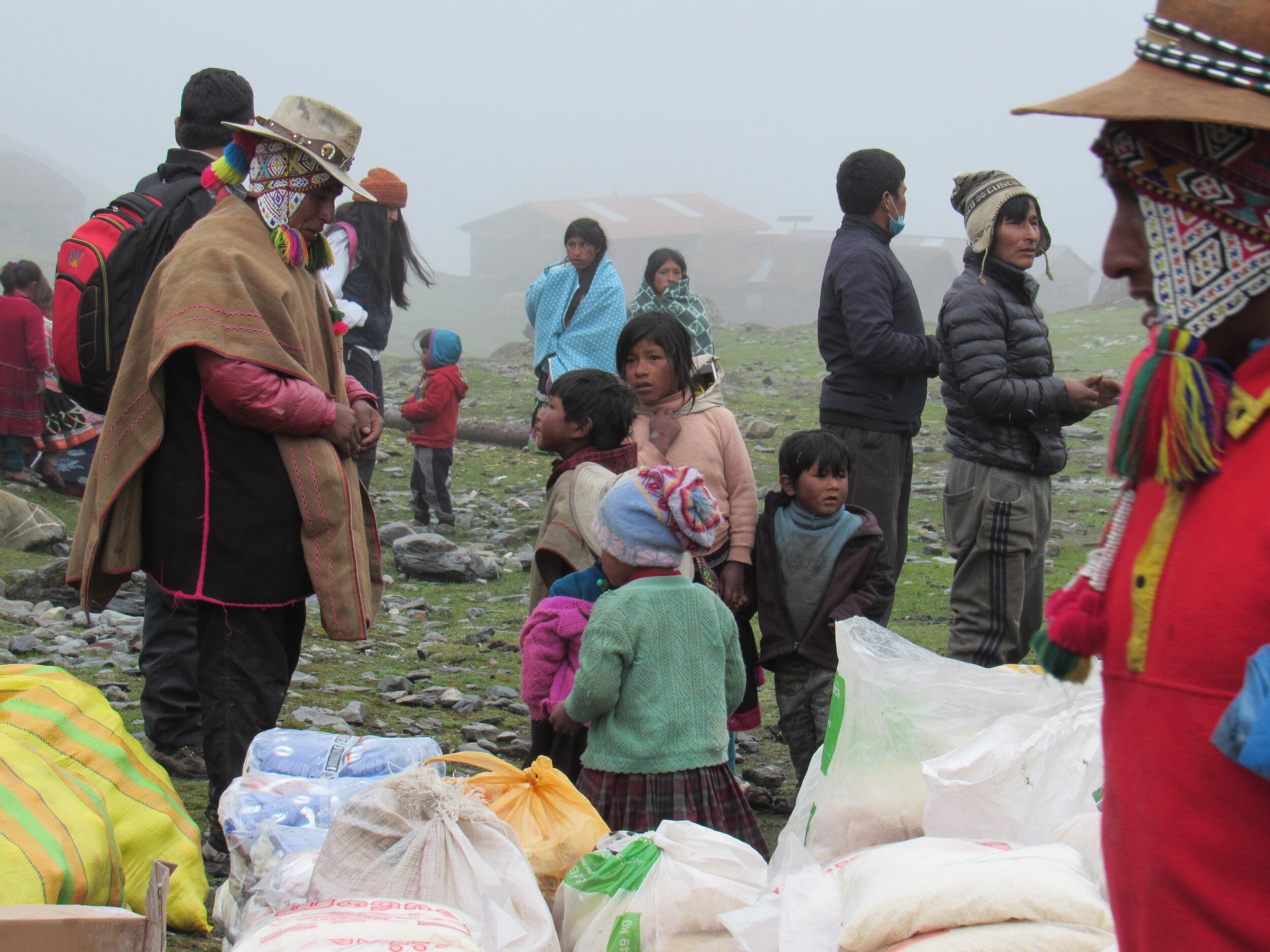

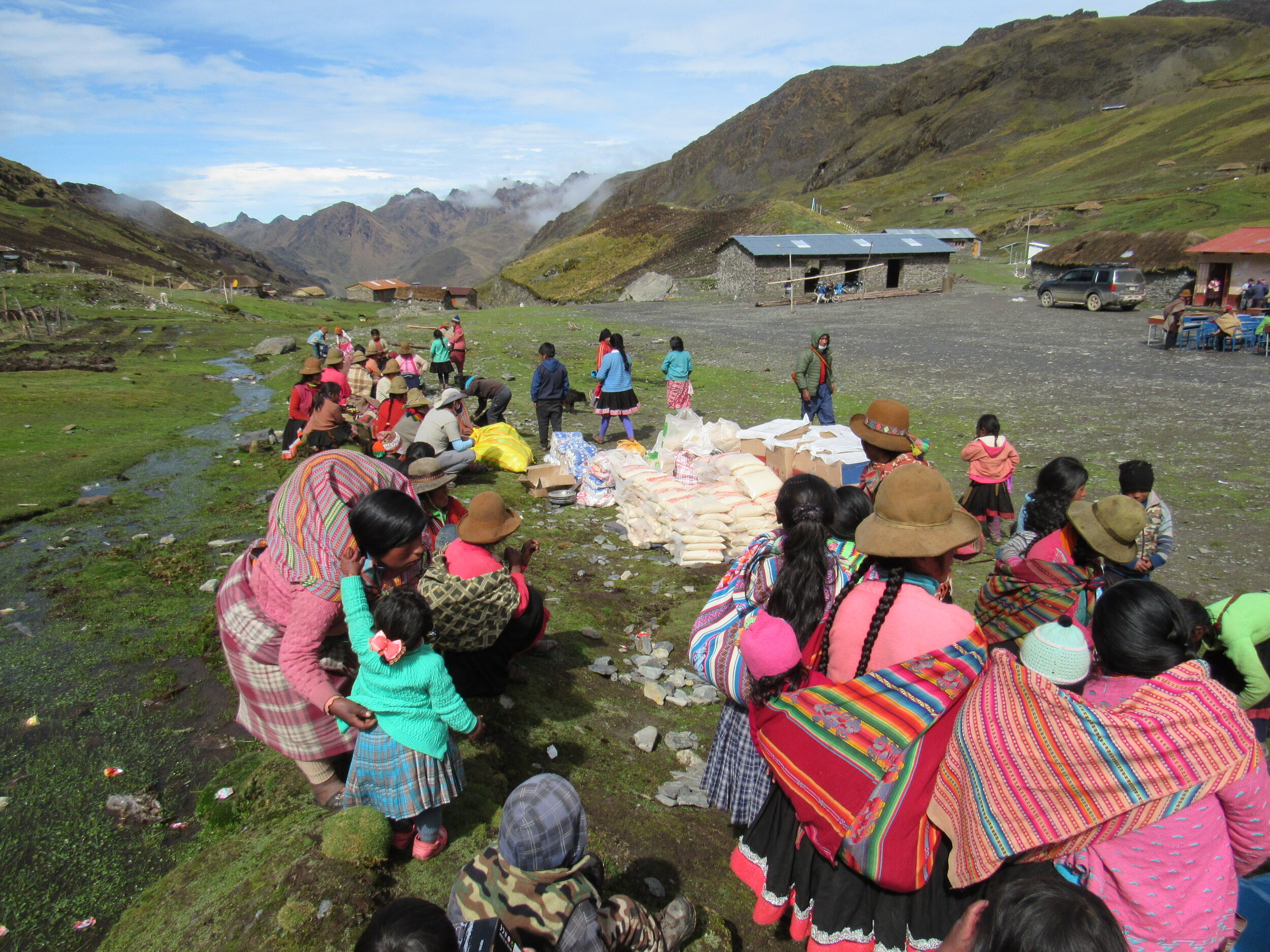
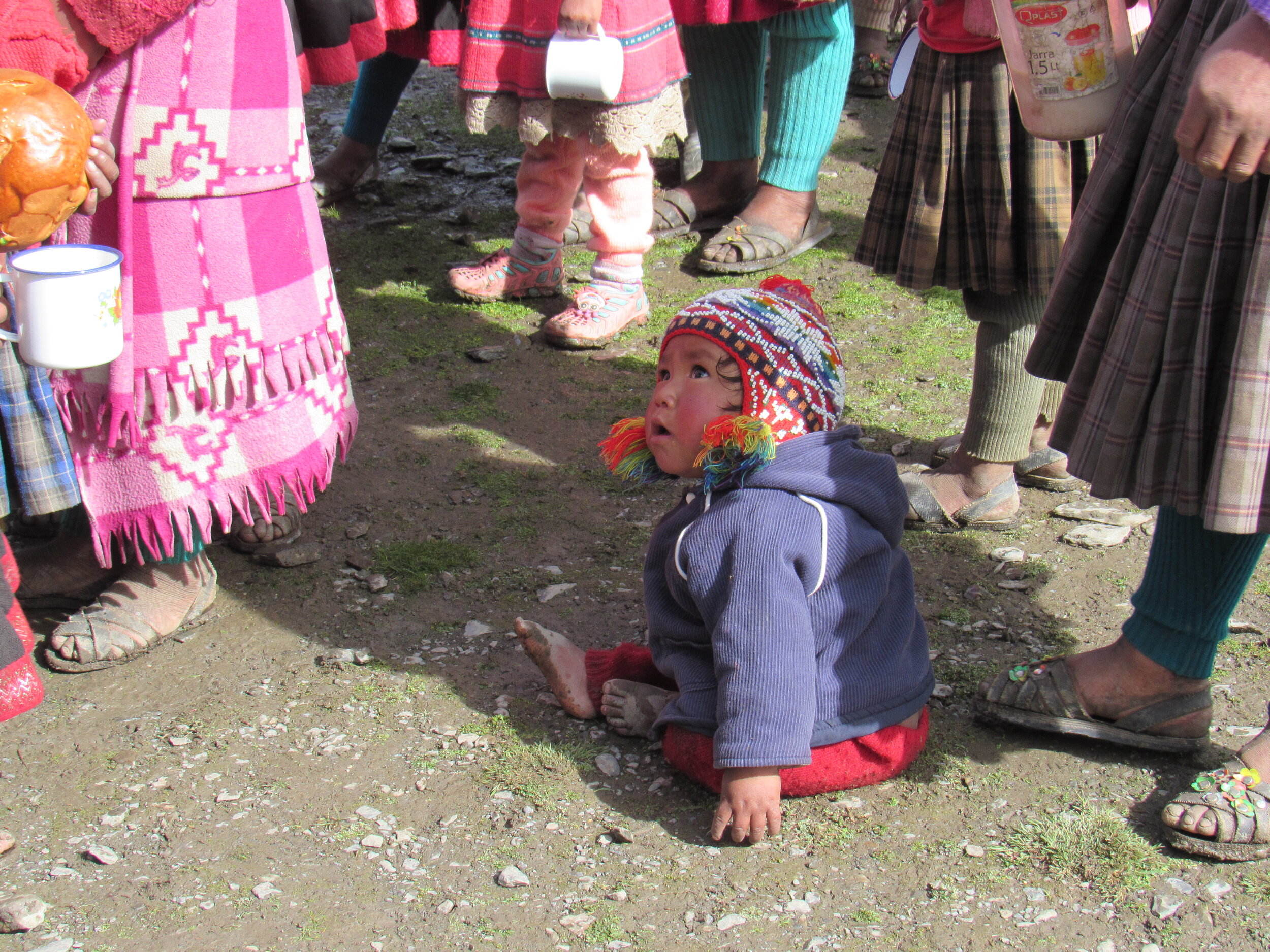
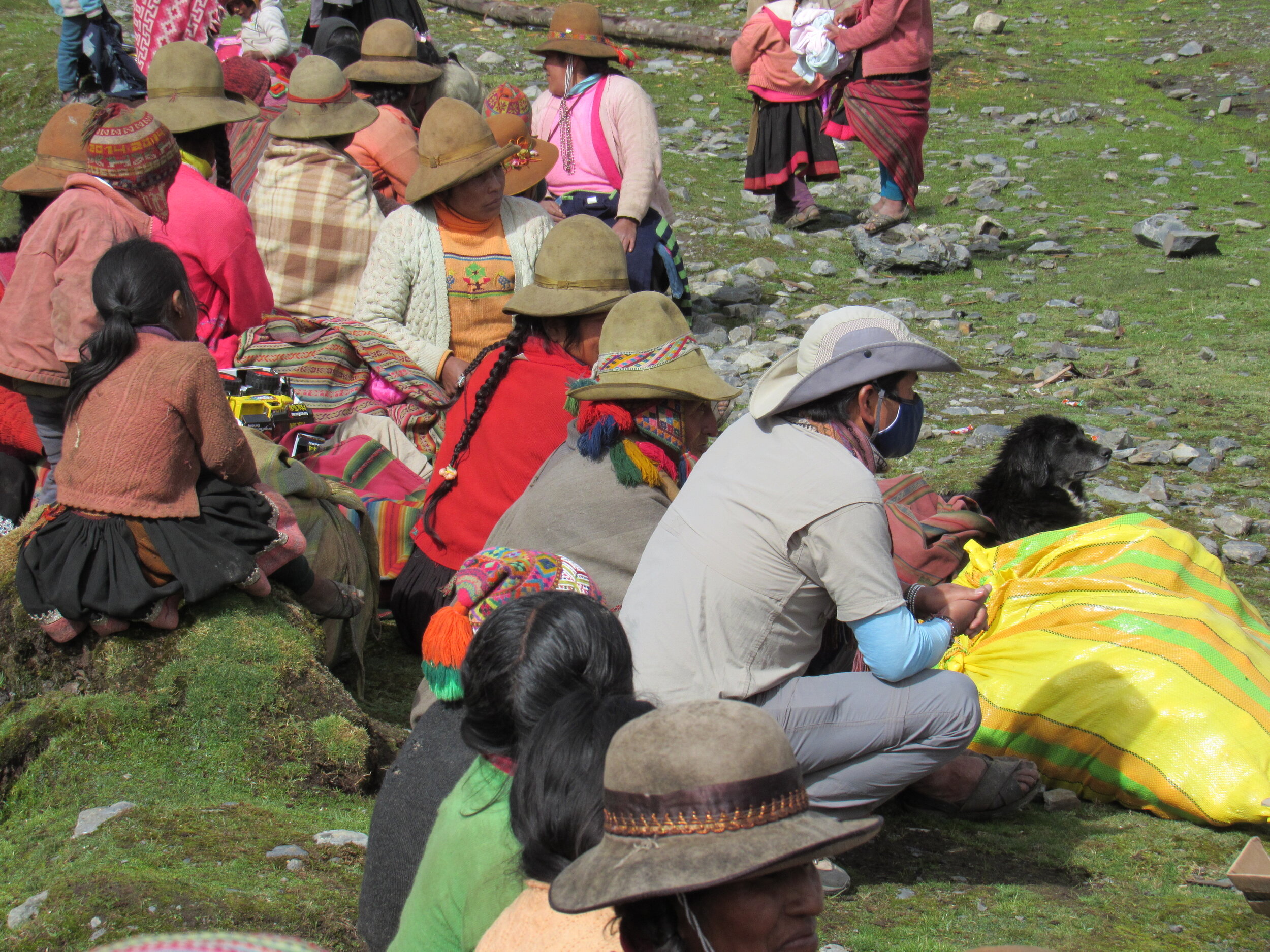
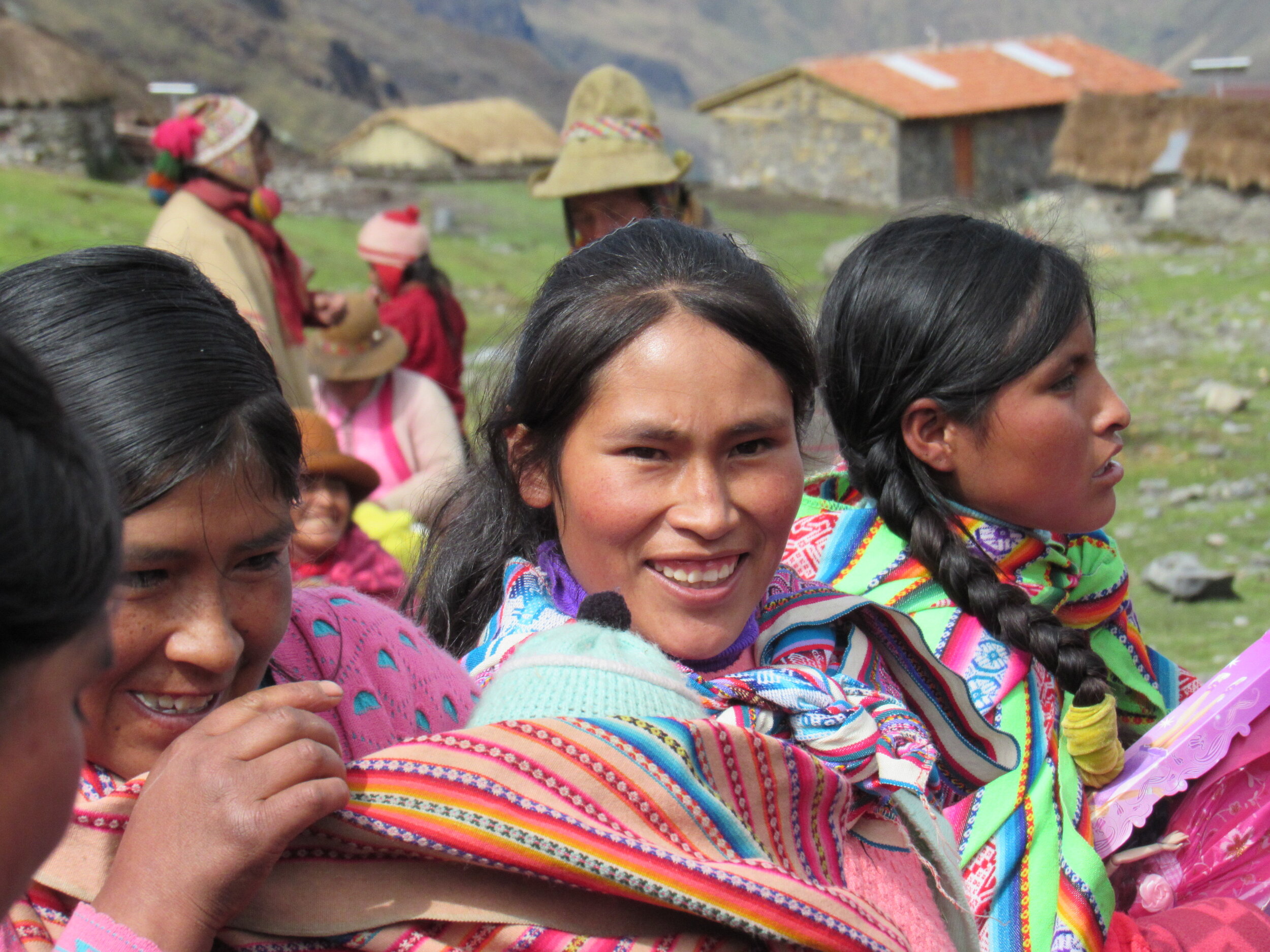
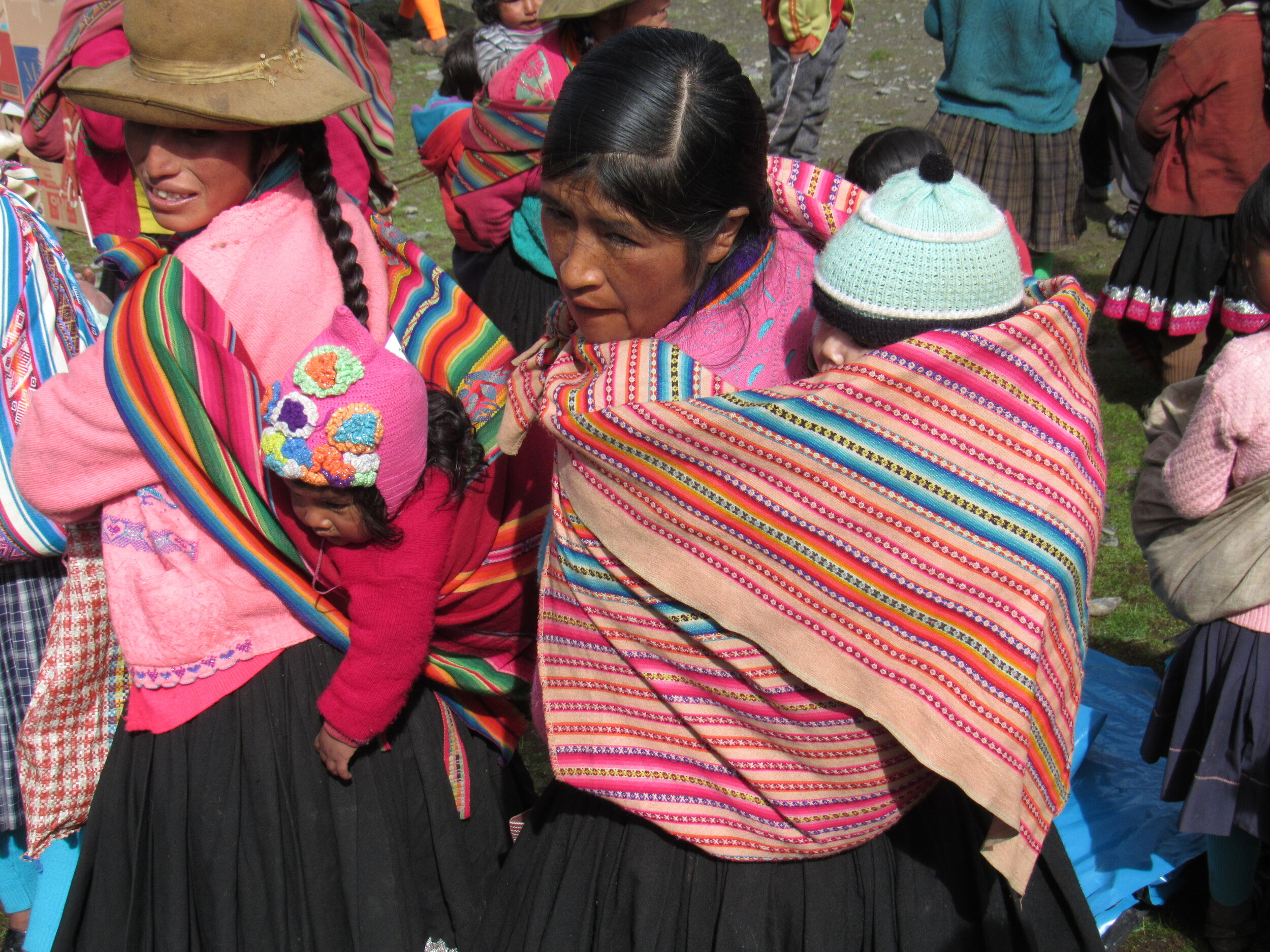
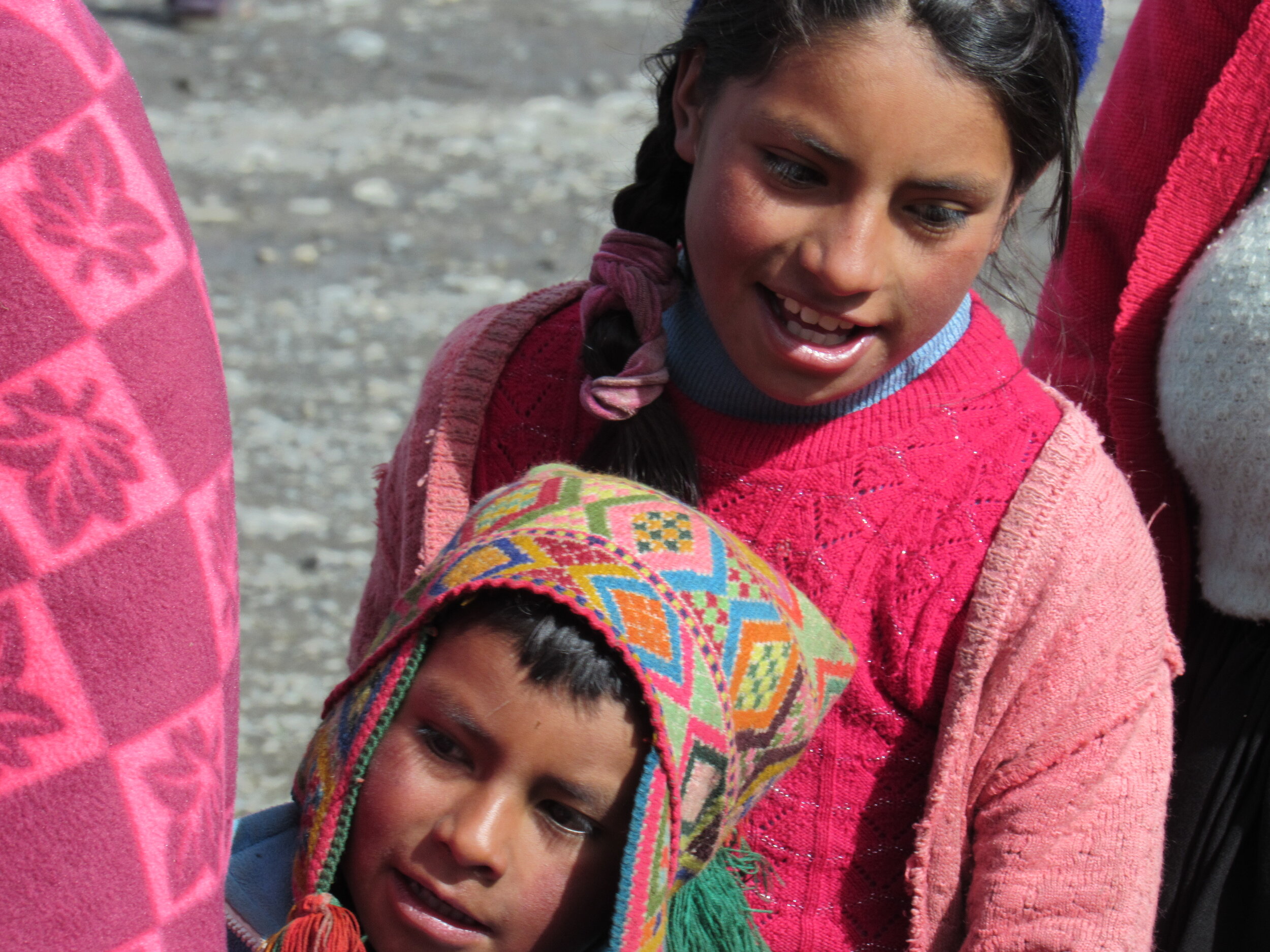
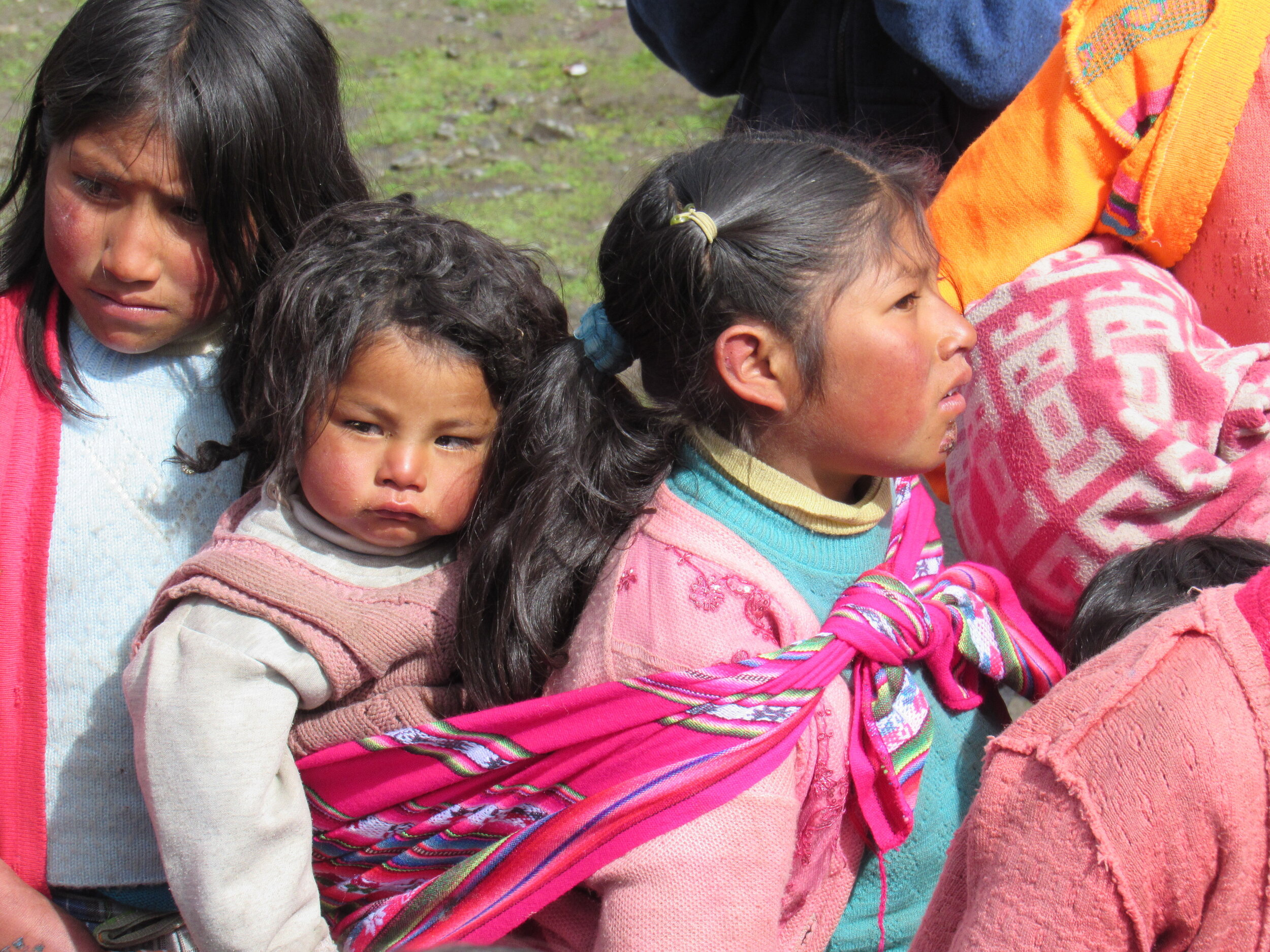

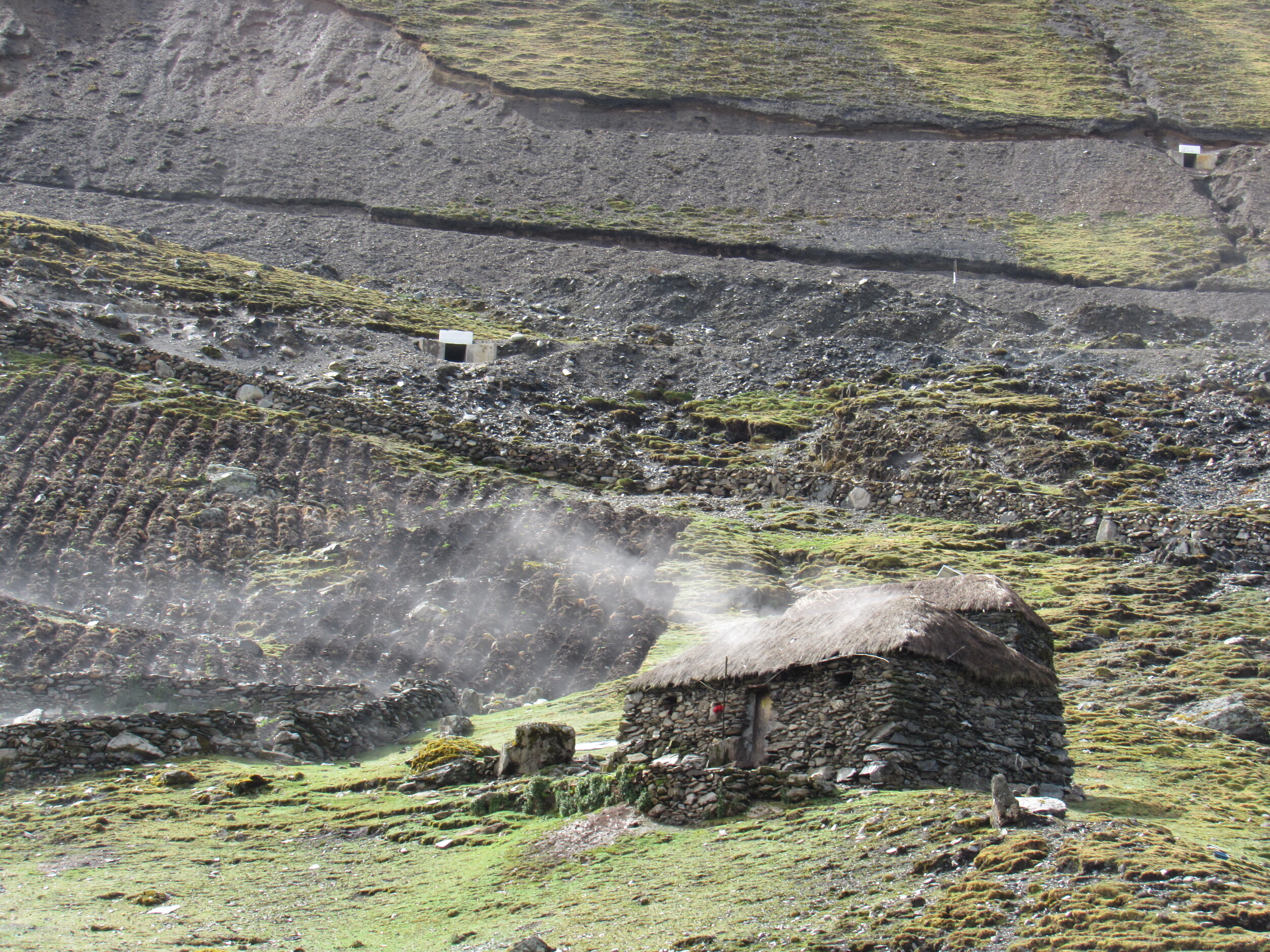
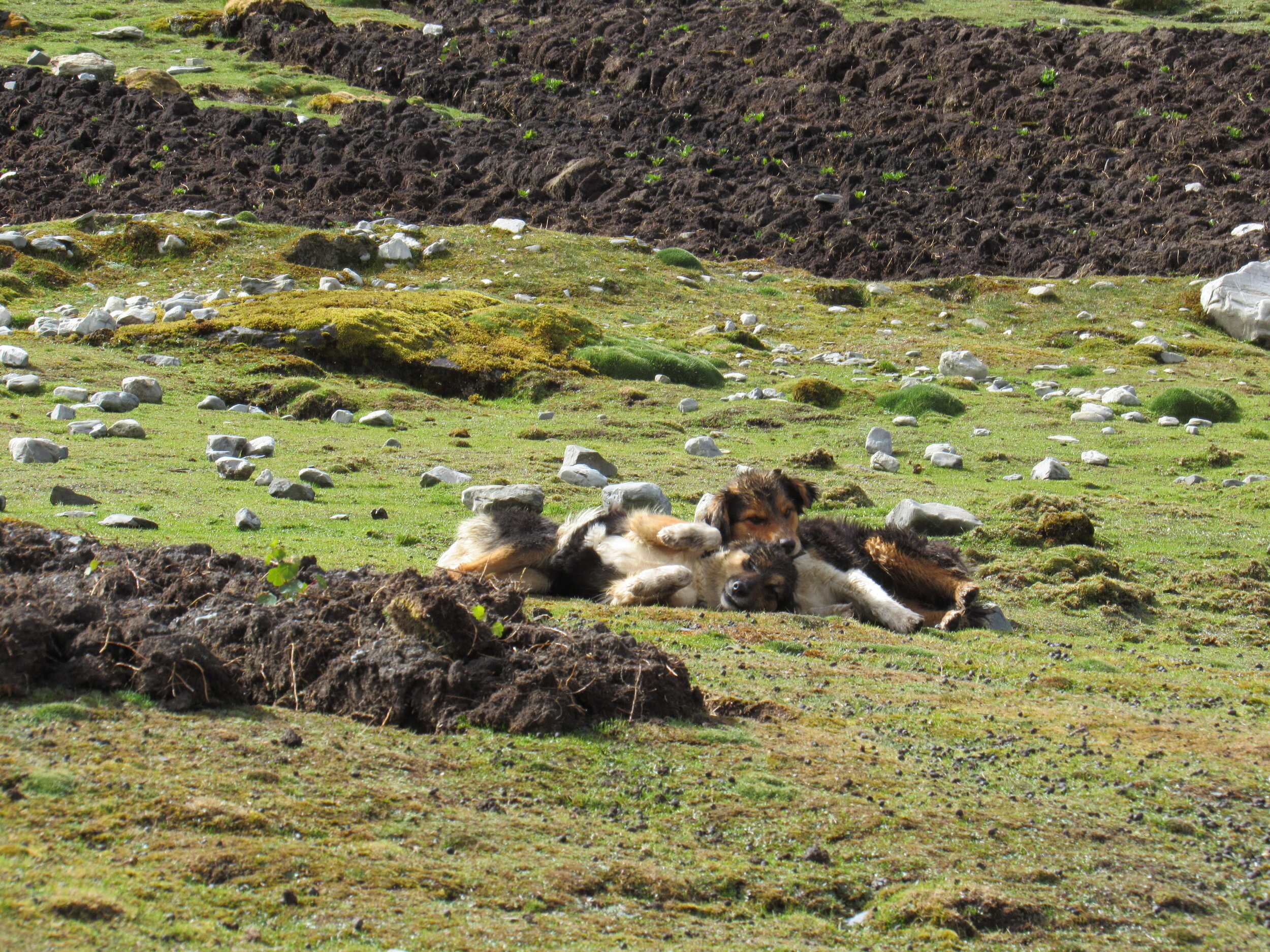
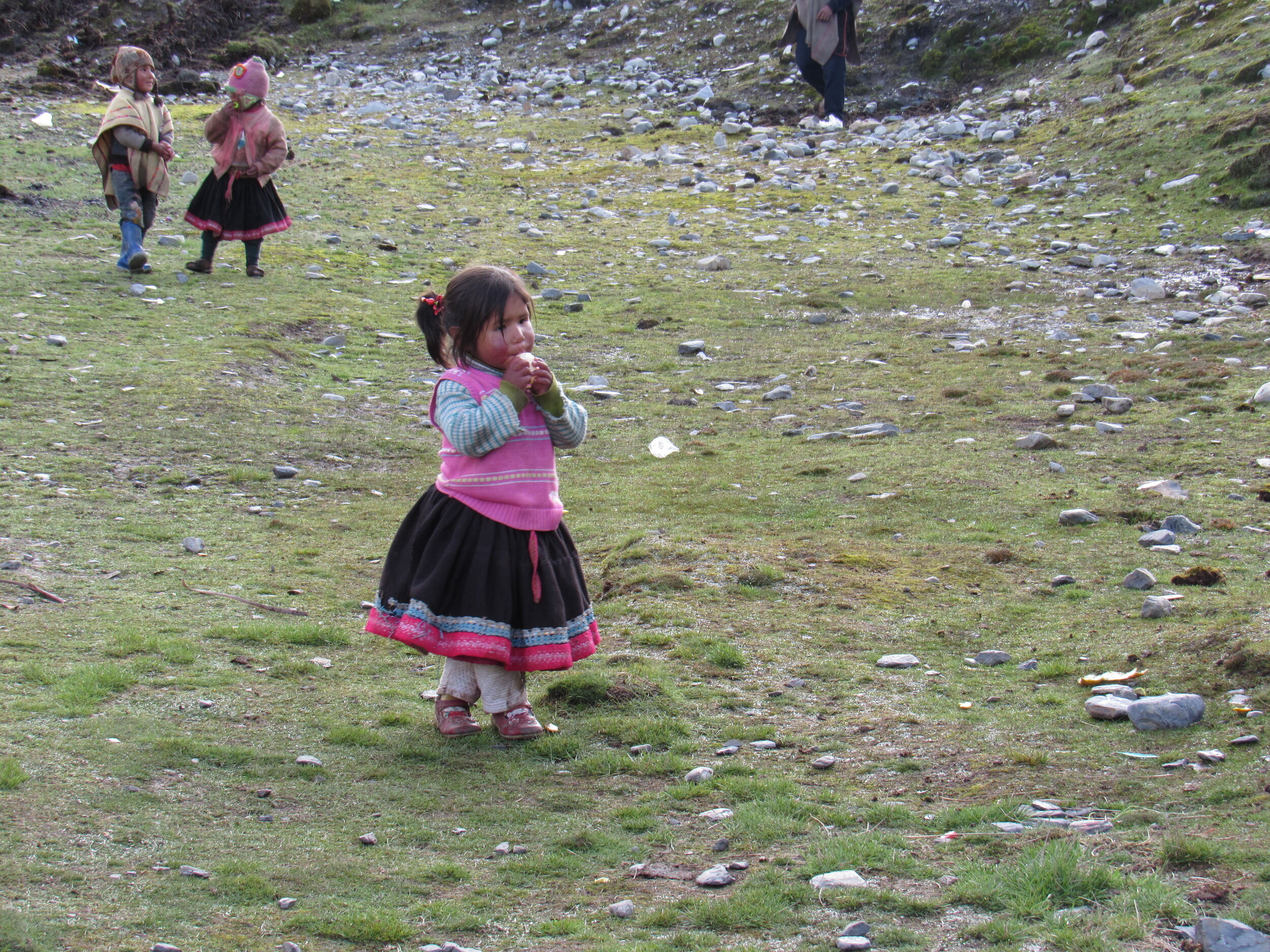
Sunday, 20 December, 2020
Hatun Q’ero is about a six hour drive from Cusco, which is why we asked the mayor of Paucartambo to send transportation that could pick us up at 5am. The night before he had sent a large truck to pick up twenty desks which were generously donated by the school where Henry’s sister teaches. Of course, the school has been closed all year due to the pandemic, so nobody has gotten to use these desks in 2020.
All of the villages of the Q’ero Nation are part of the district of Paucartambo. Last Sunday, Sofia, who works in the Paucartambo’s mayor’s office, organized everything for our visit to Japu. Unfortunately, she was not available this weekend and we didn’t have anybody like her to help everything go according to plan. We were at the Maytaq Wasin, ready to load the food and clothes, at 5am. When Auqui called to check how close the trucks were, we were told that they were just leaving Paucartambo. That meant, the best case scenario would be that they would get to Cusco two hours late.
Henry, Auqui and I have gotten used to long hours on twisty mountain roads, and very long days, but I was a bit worried about our other volunteers. Kara and Katie were visiting from the US and had barely had 24 hours to acclimatize in Cusco. I wished that they had been able to get another two hours of sleep. Wilbert and his daughter Miska, Auqui’s brother and niece, were also joining us for the first time. We wanted them to enjoy the day, which was already going to be long, even without the extra two hours hanging out near the hotel. Henry’s niece Lucero was with us, but she’s already come to both Mayubamba and Marampaqui, so this wasn’t her first impression of how things go with the Covid Relief Project.
Eventually, two extended cab 4 wheel drive pickups arrived. We piled 160 bags of rice, two sacks of 300 oranges each and the two cans of 30 liters of fresh milk in the first pickup. The second pickup got 160 bags of salt, 320 bags of oatmeal and eight sacks of children’s clothes. It was almost 8:00 when we left, which meant that we didn’t get to Hatun Q’ero until almost 2pm. Nothing had been open in Cusco so early on a Sunday morning, so none of us had eaten breakfast. The community hadn’t prepared any boiled potatoes or anything else for us, plus there wasn’t really any time for lunch anyway. I am so thankful for all of our volunteers, who stayed helpful and cheerful during a very, very long day!
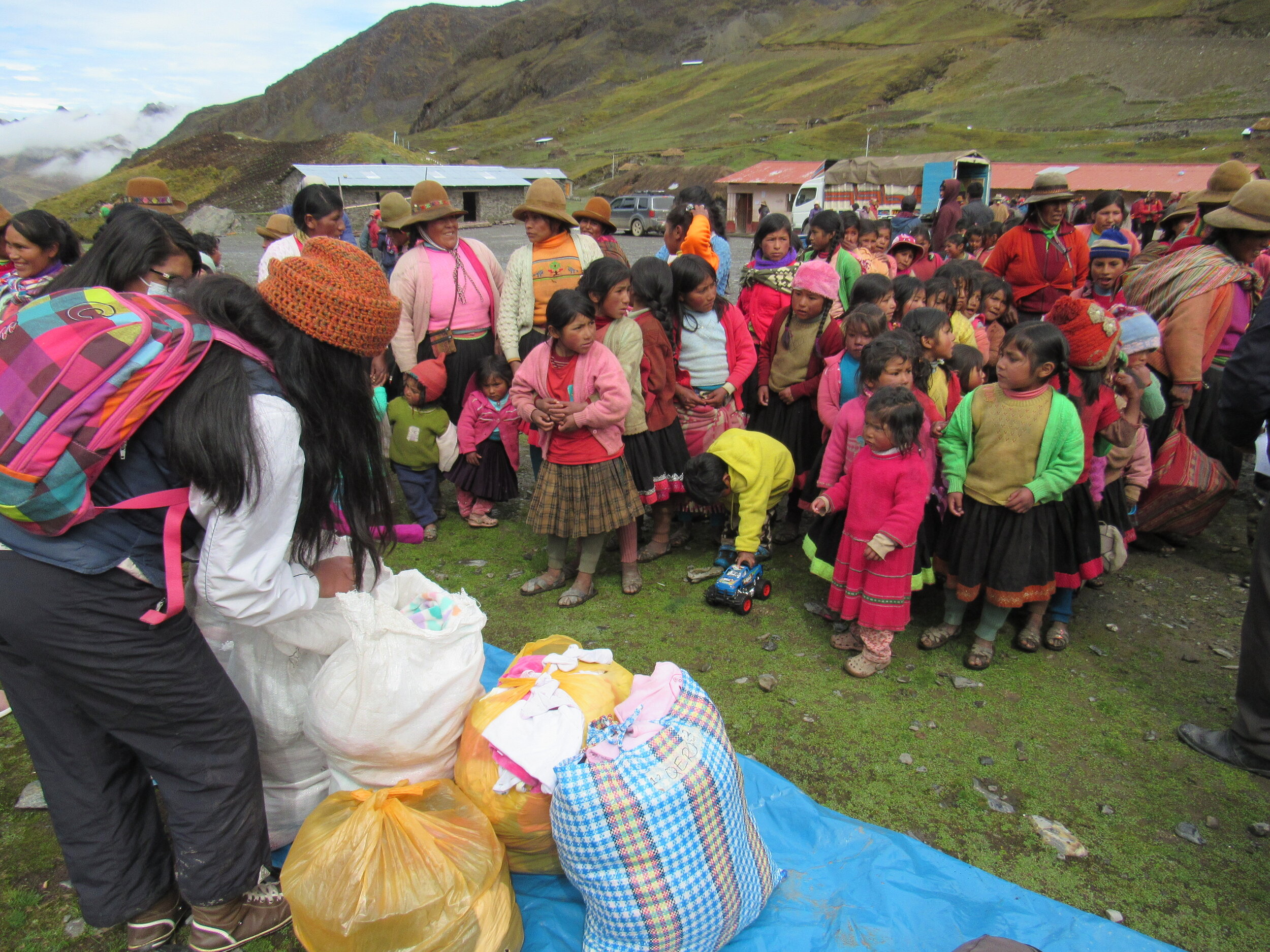
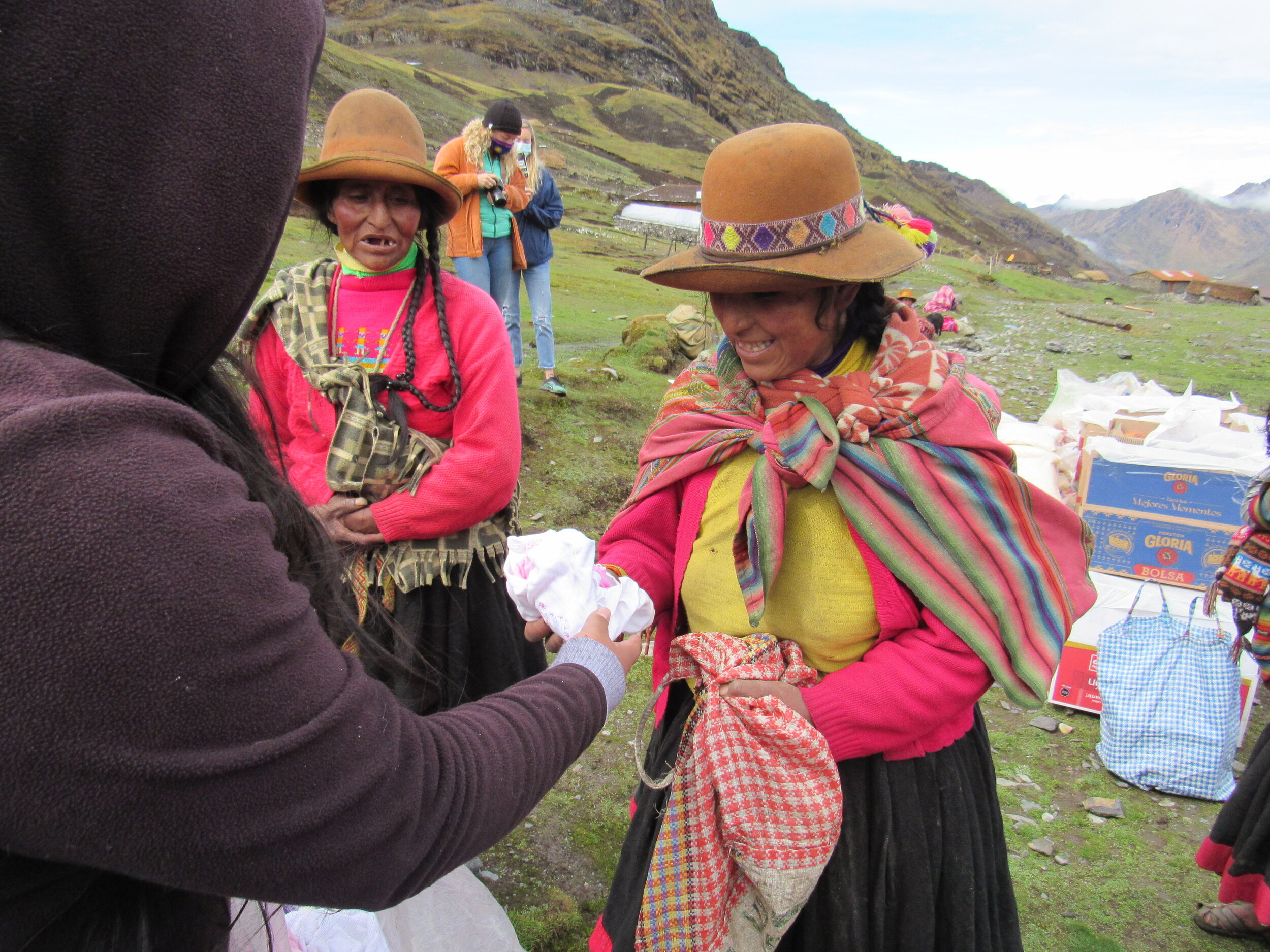
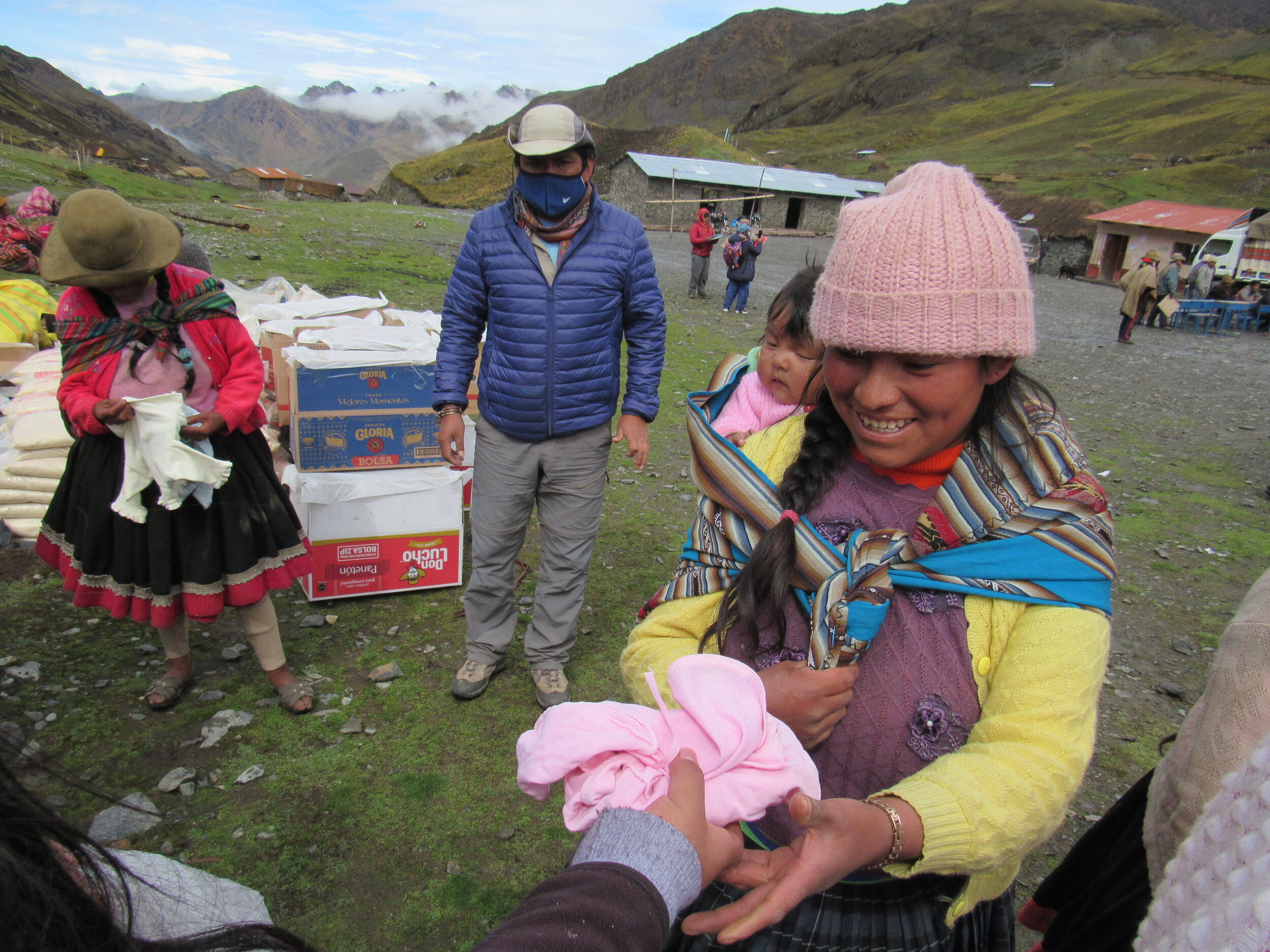
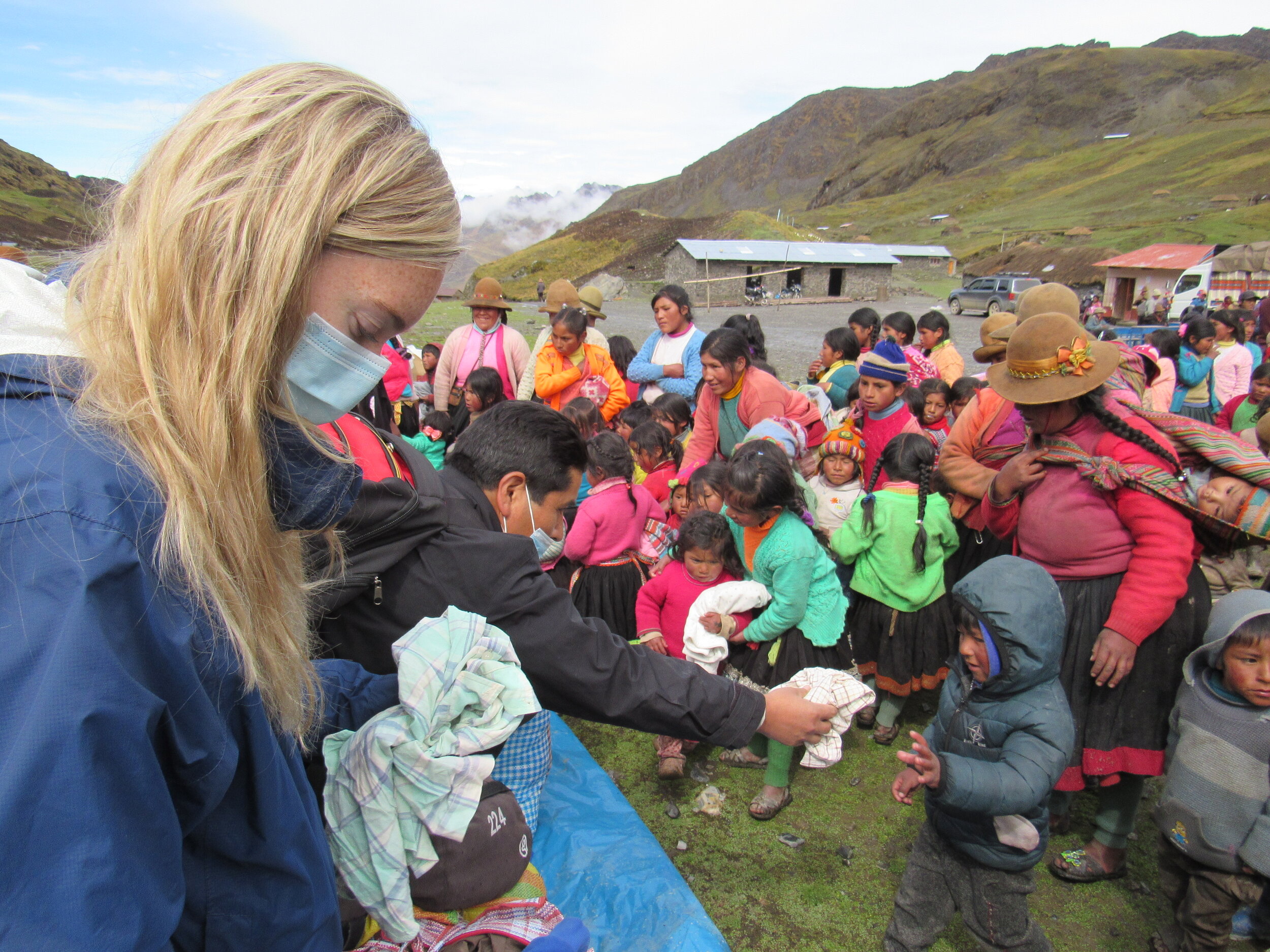
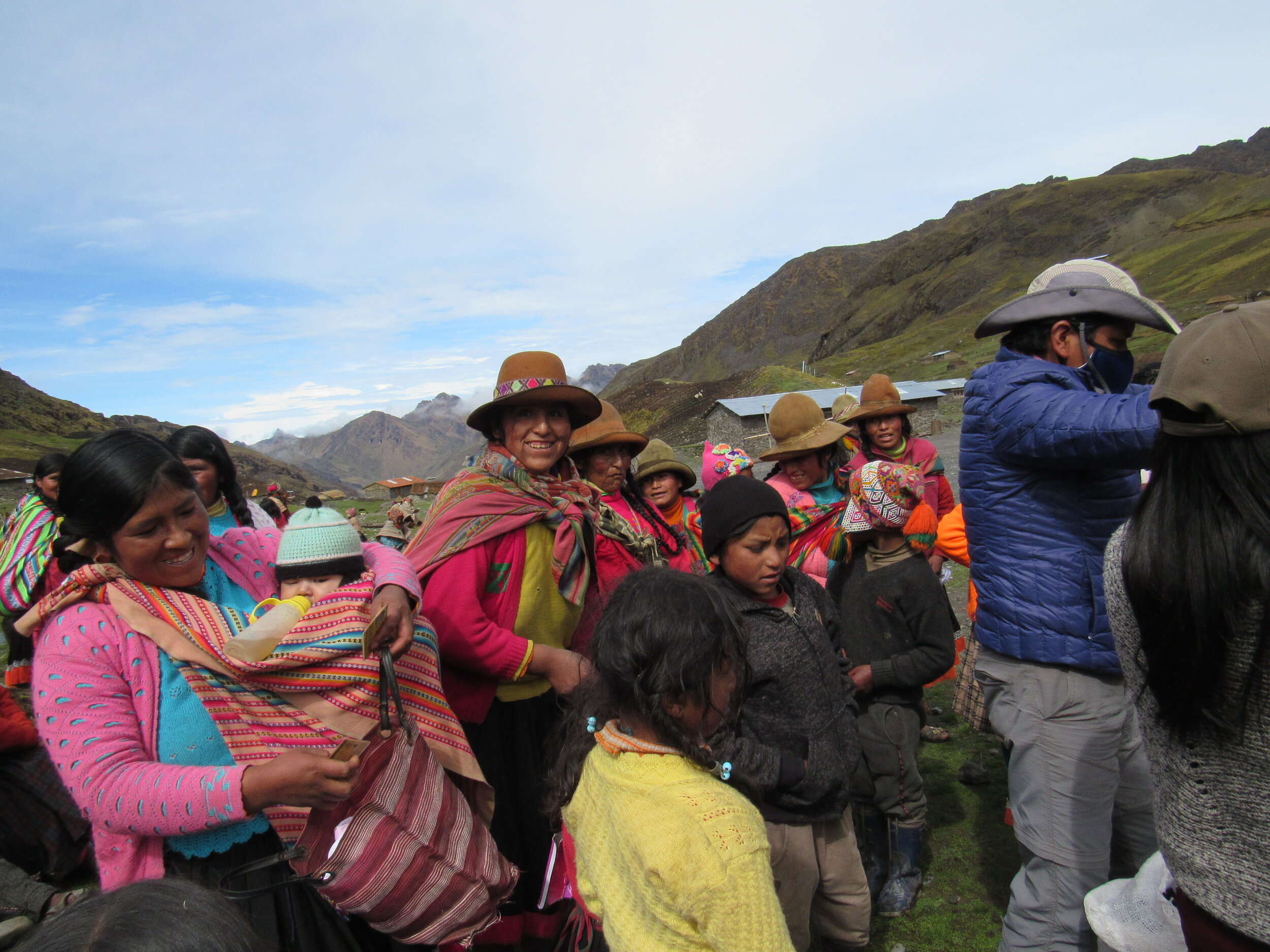
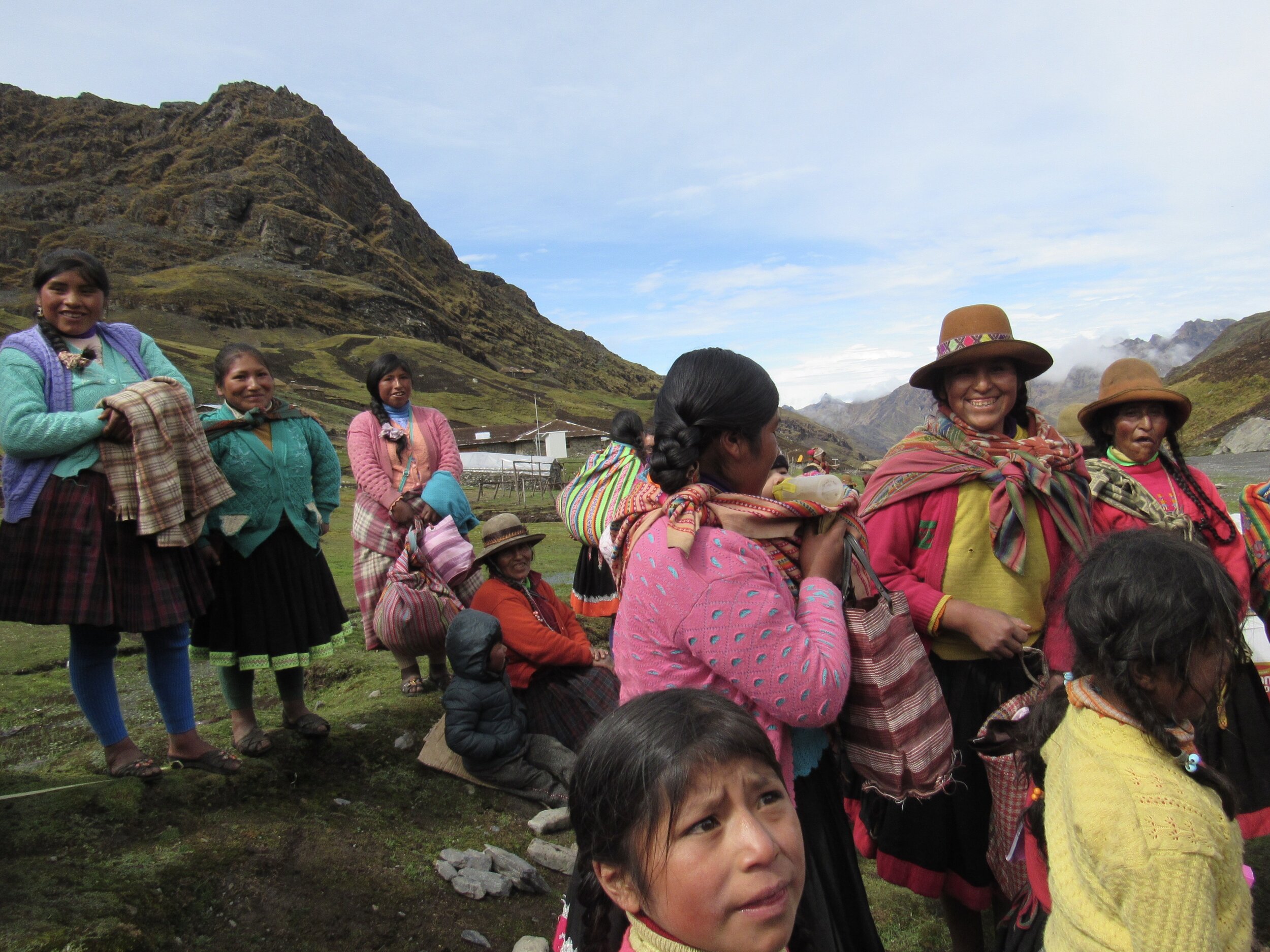
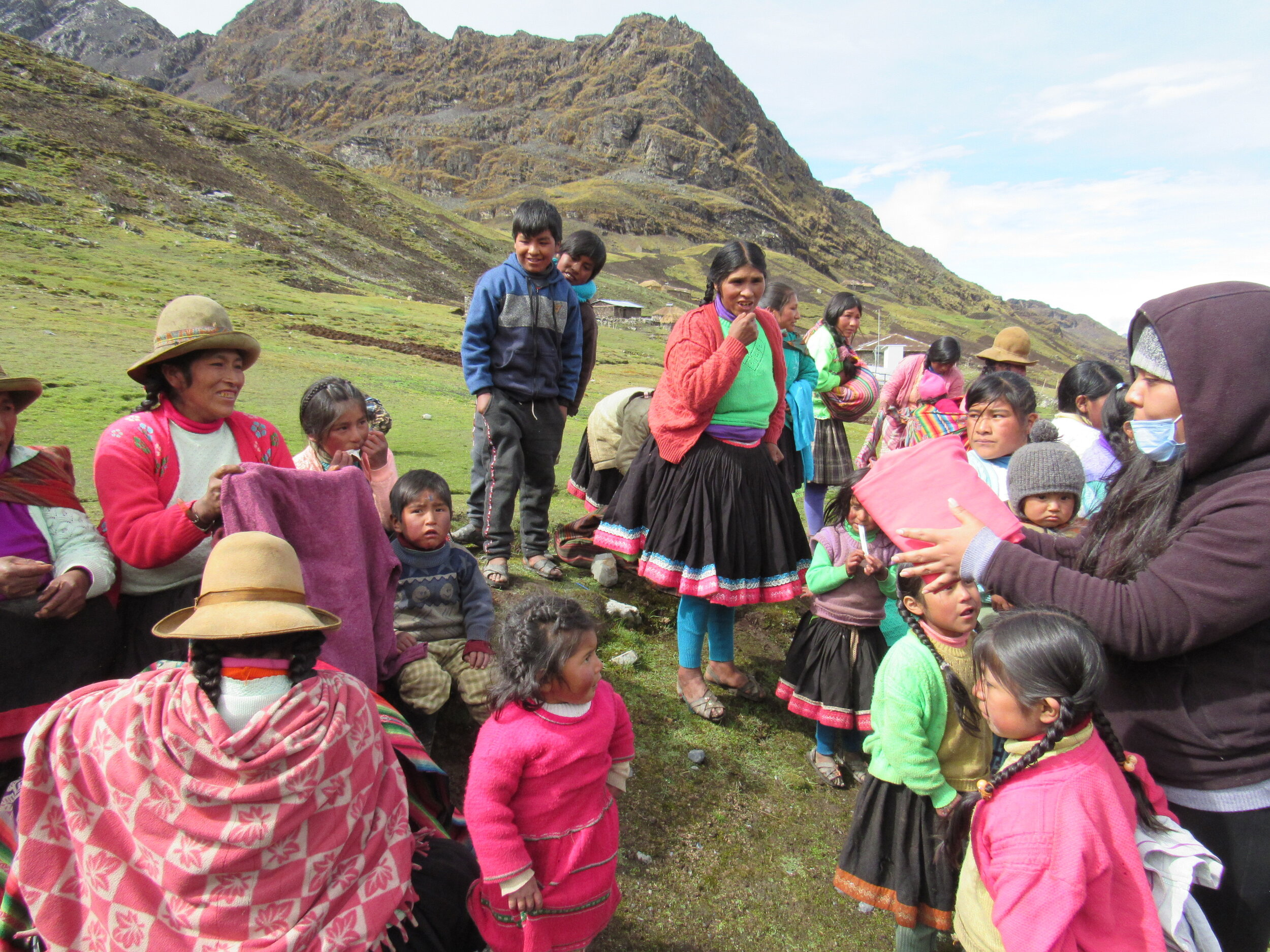
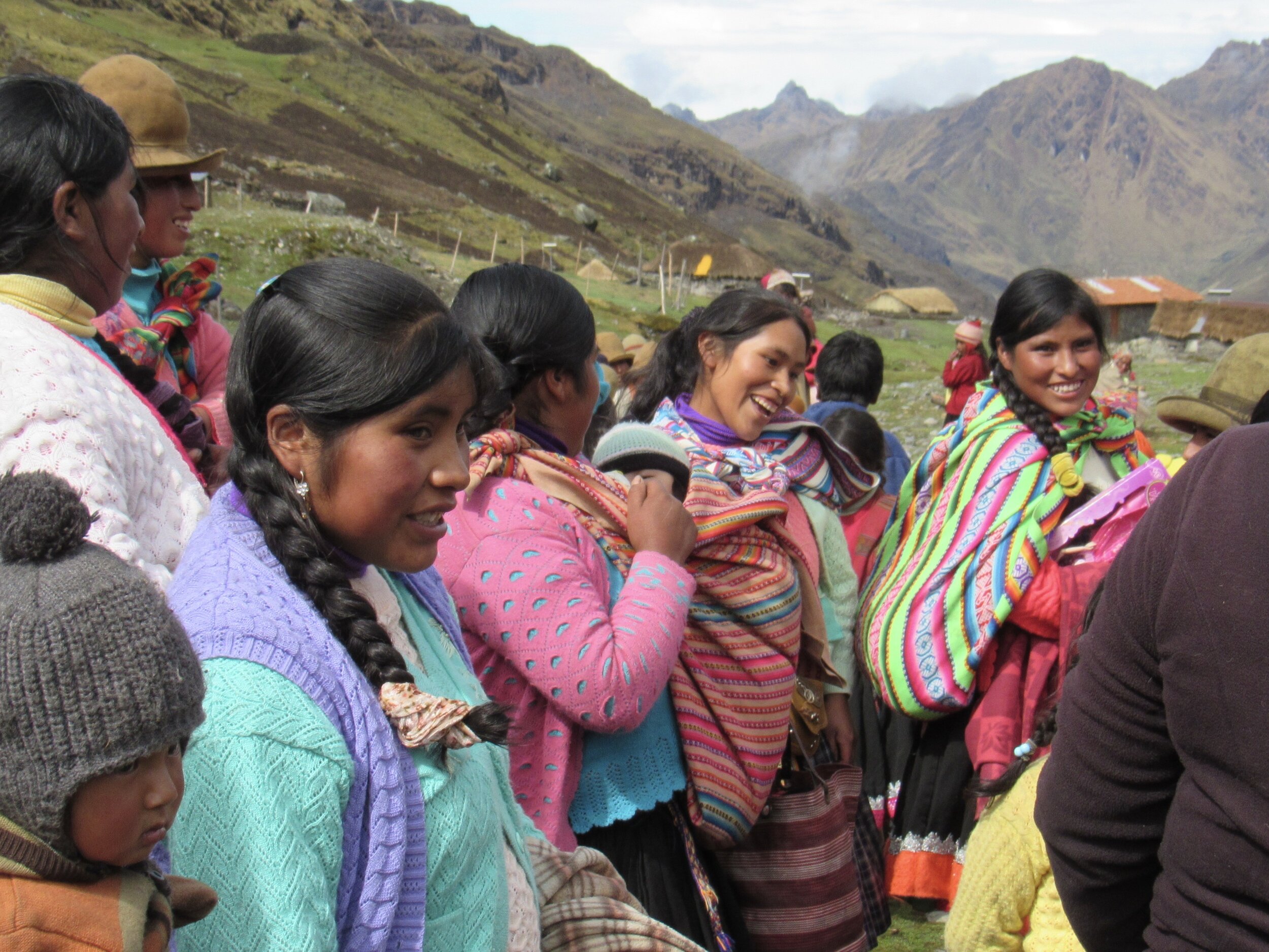
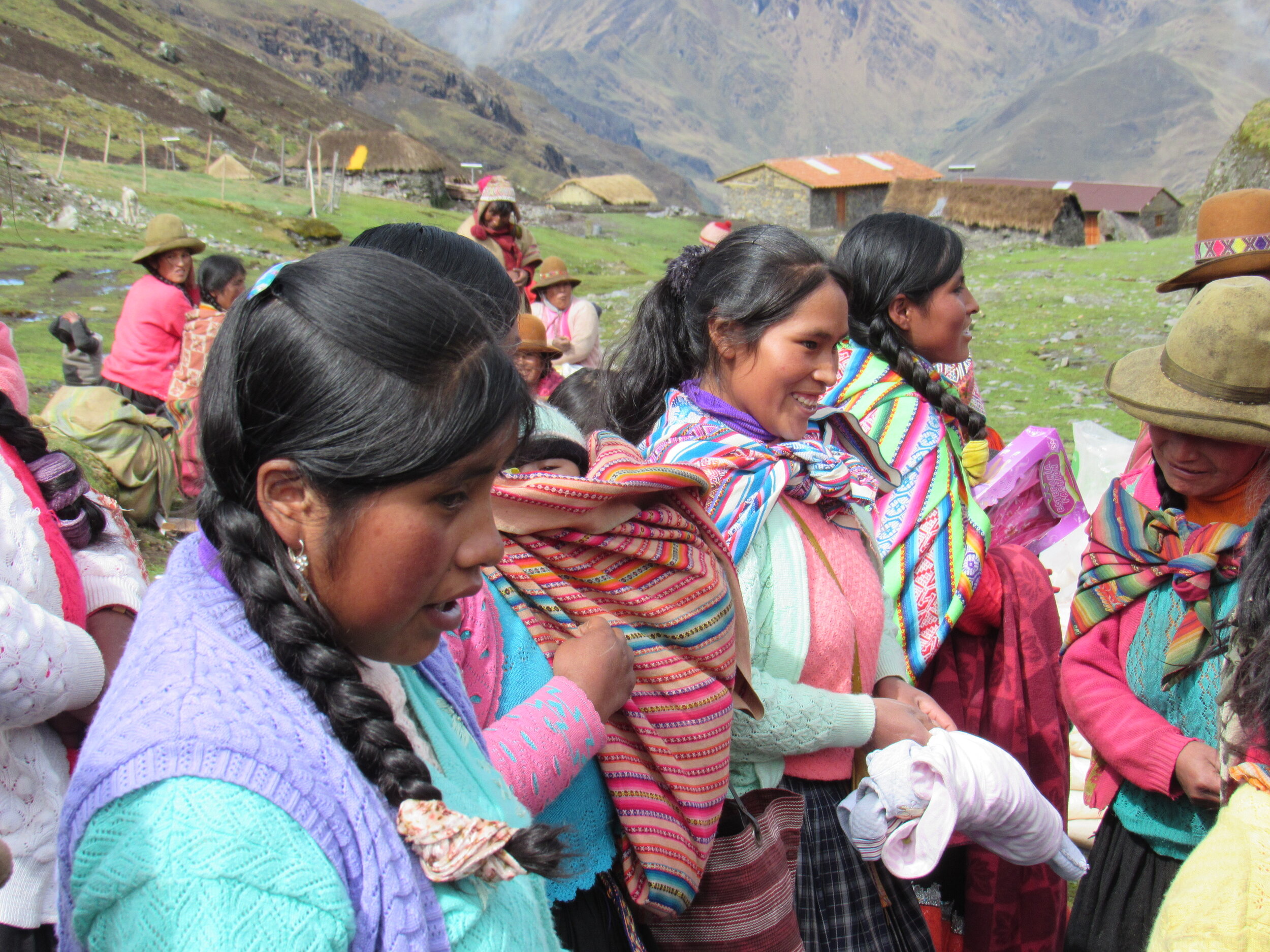

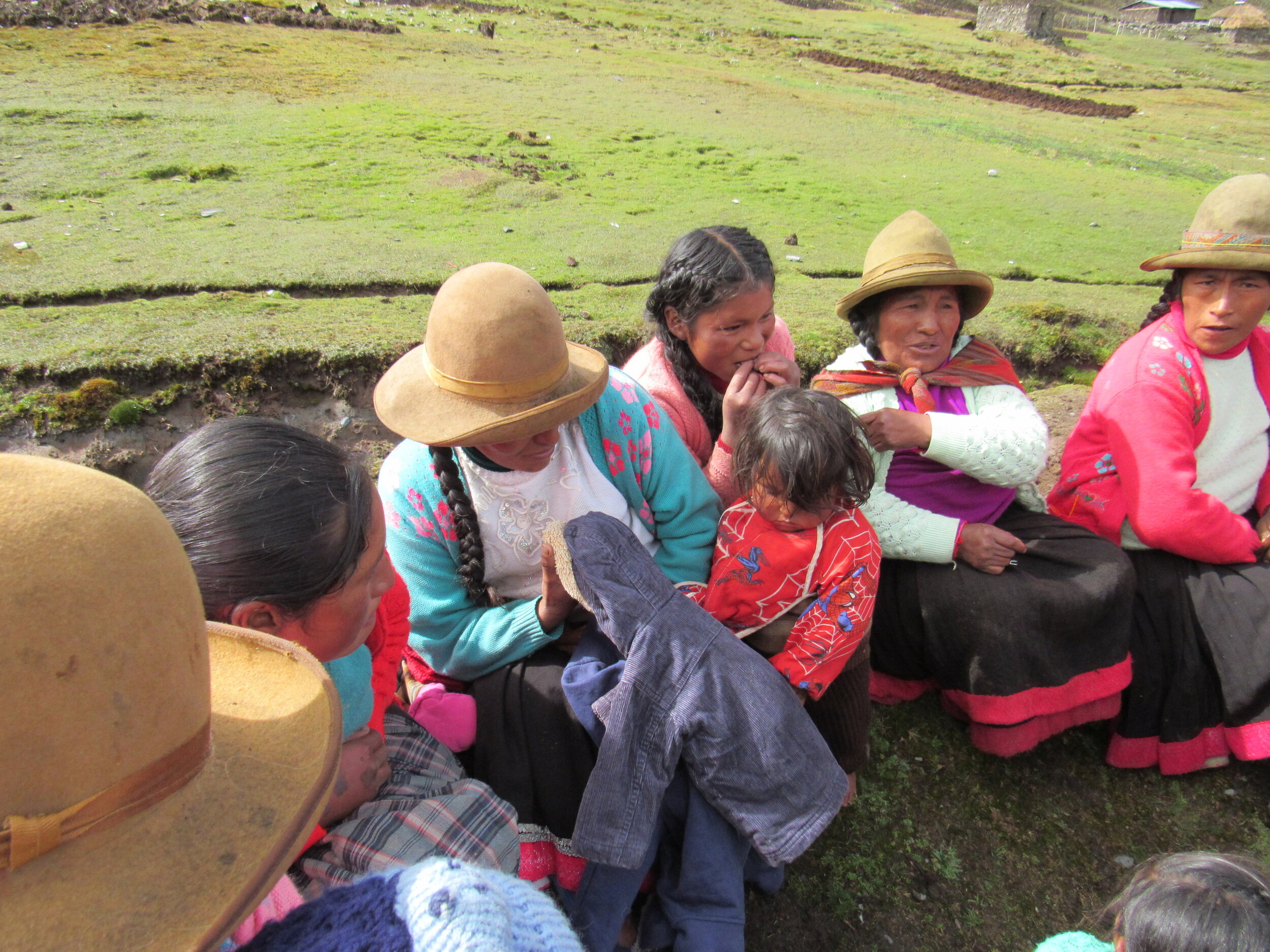
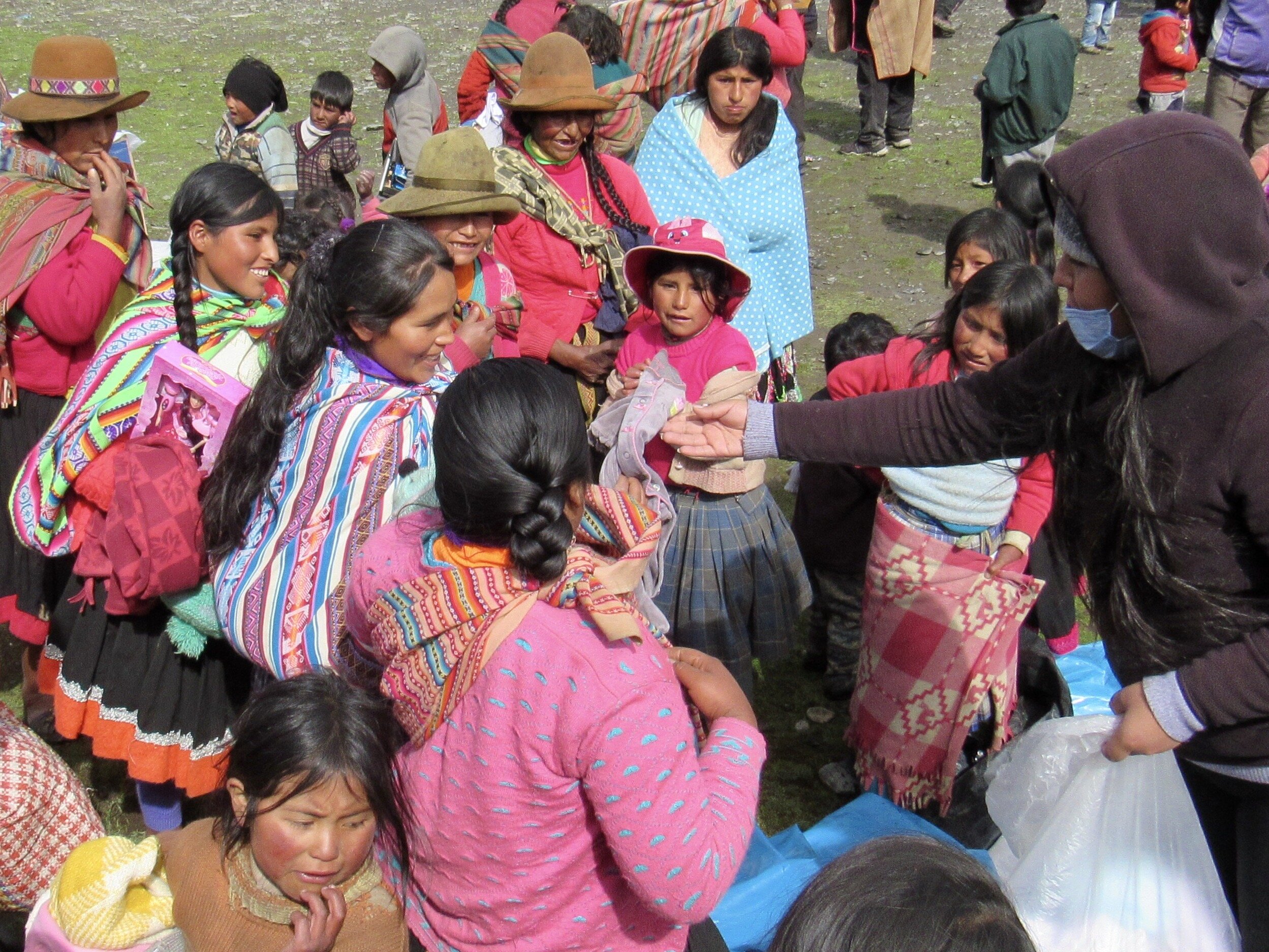
We started with the distribution of children’s clothes while the hot chocolate was being made, like we have done with the previous four chocolatadas. As always, many people did not have a cup, but thankfully somebody had a key for the school and they brought out the cups that children used to use during lunchtime. We served the children first, then Lucero went around to collect the cups from the children to be used again by the adults. Somebody in the community brought us a bucket of water with some bleach in it, to rinse out the cups.
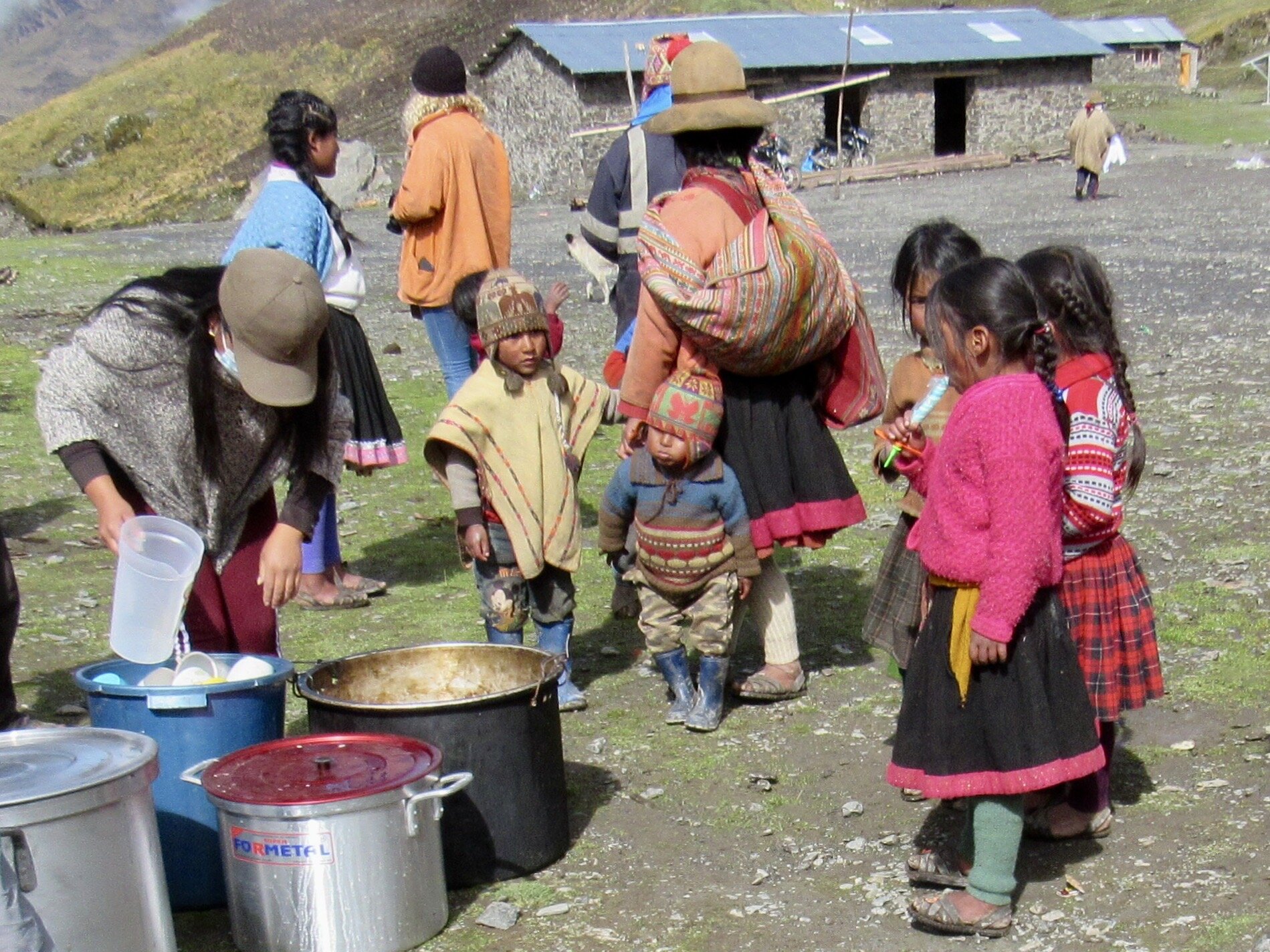
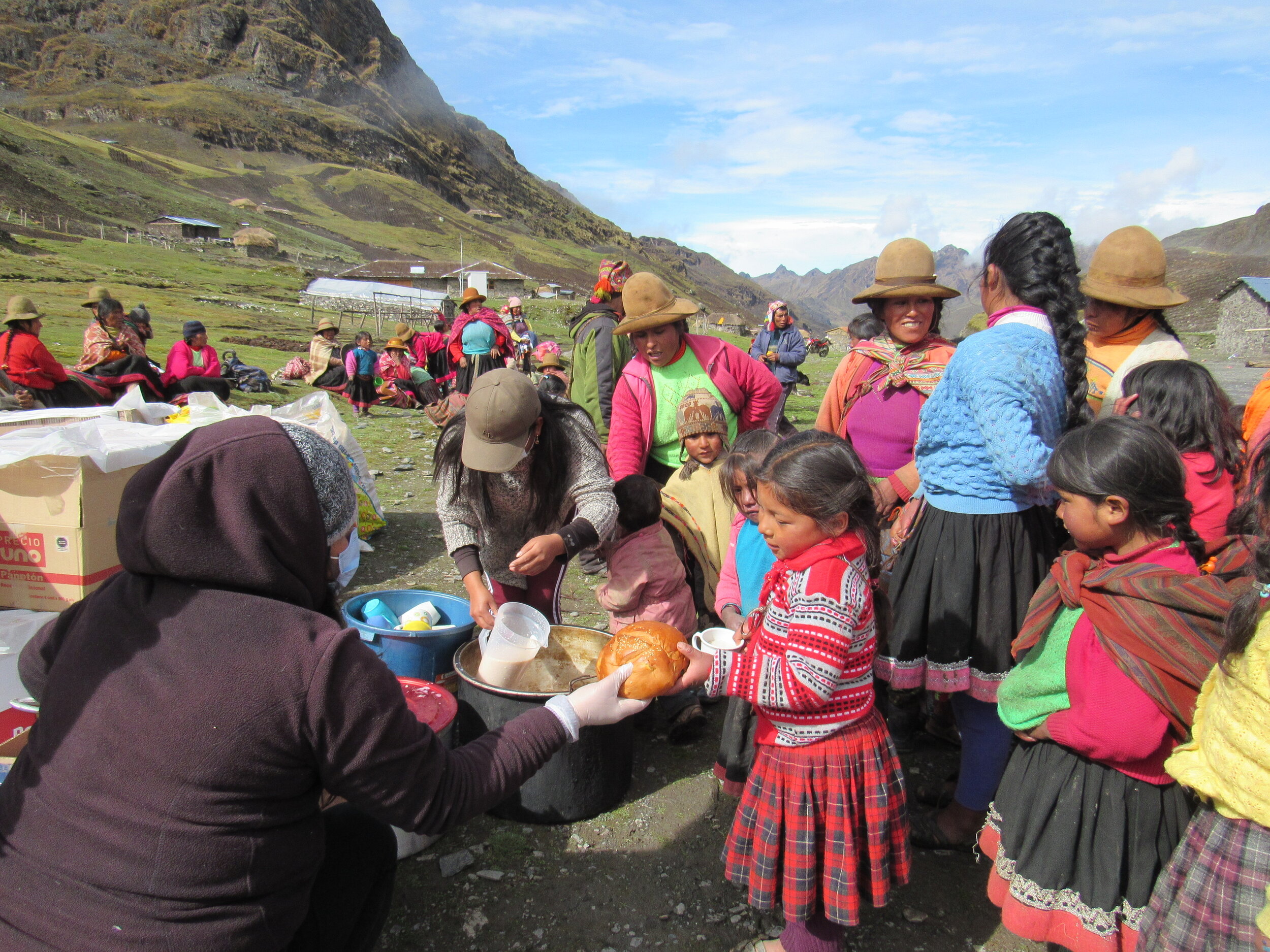
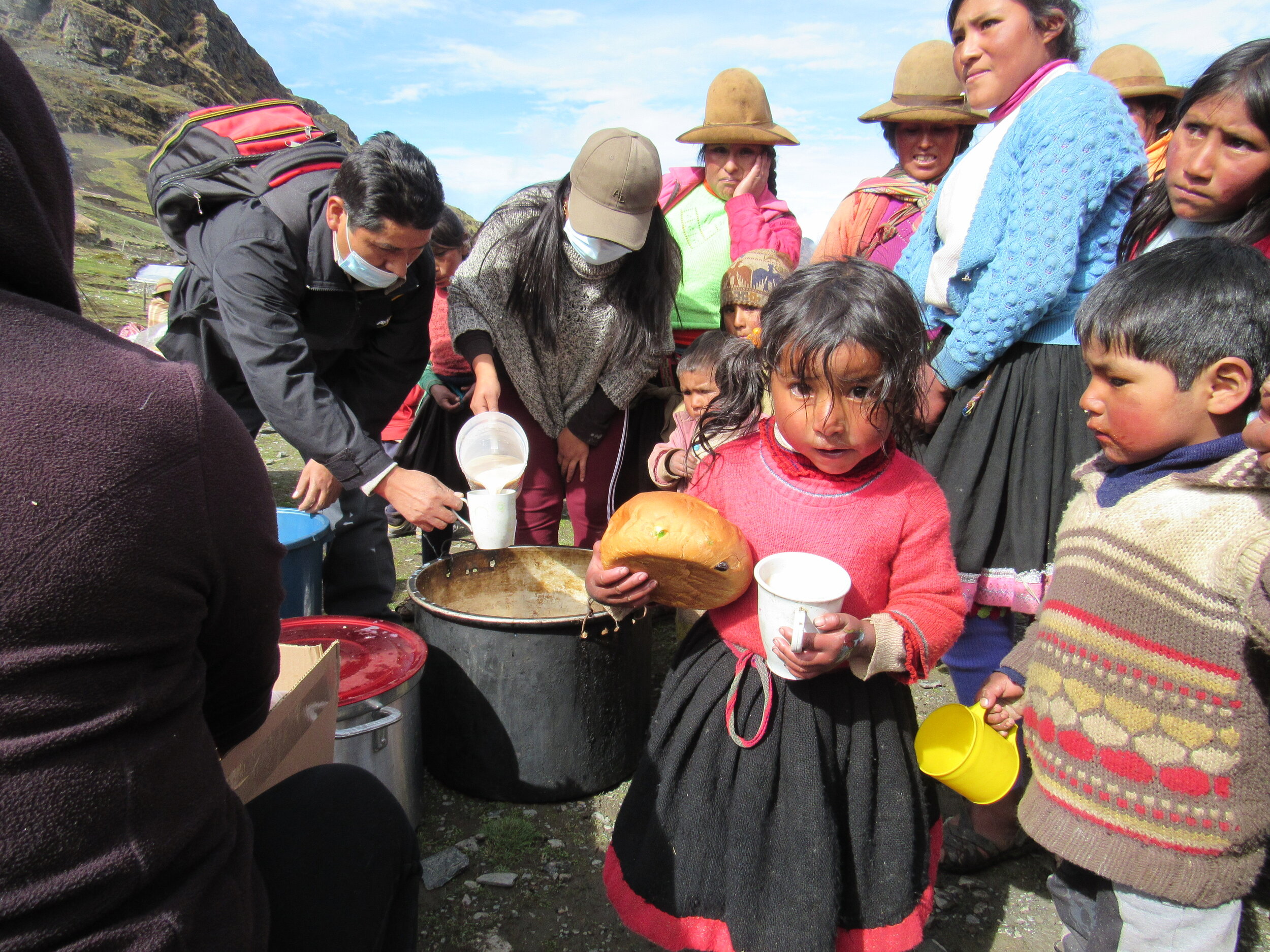
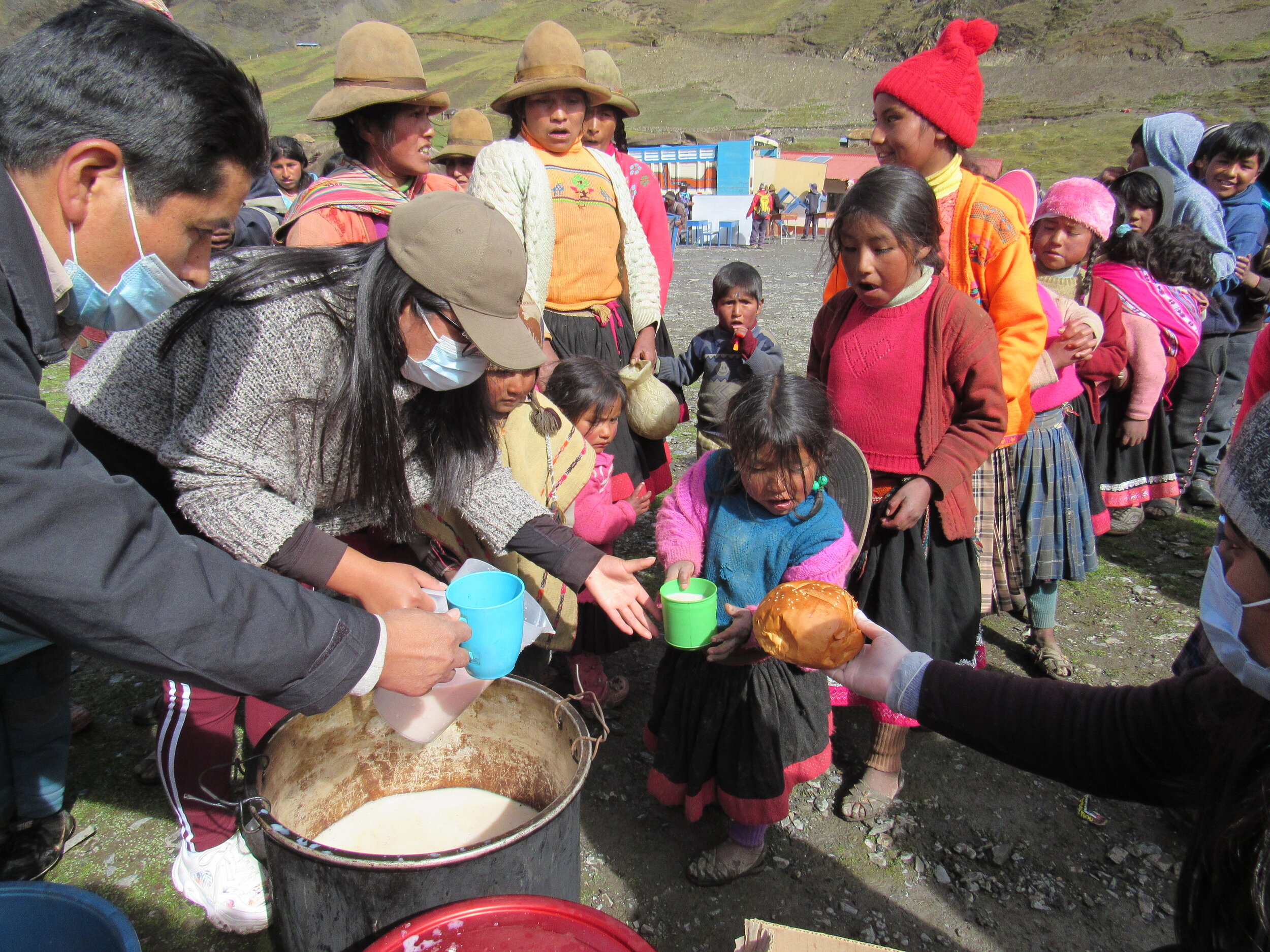
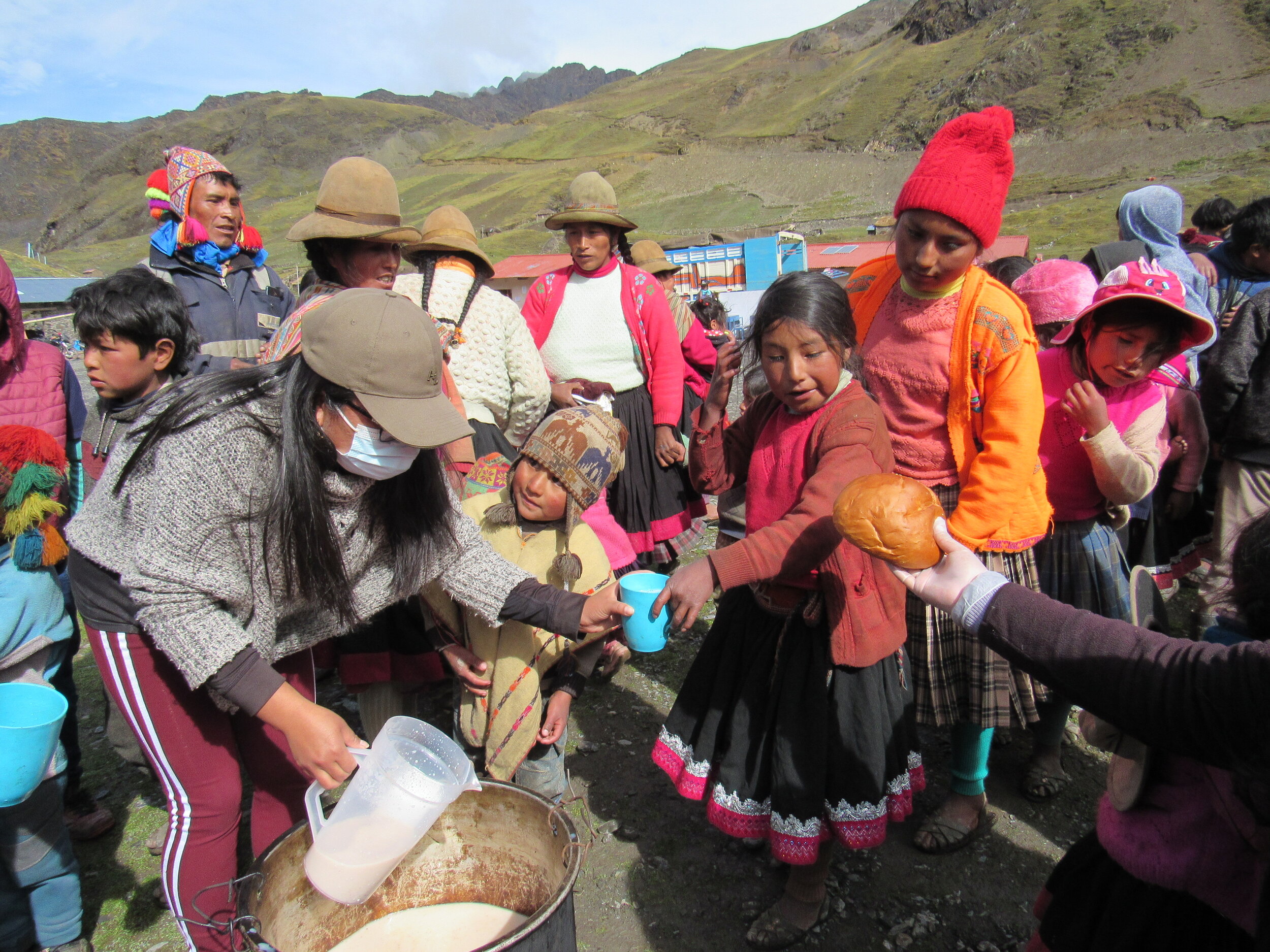

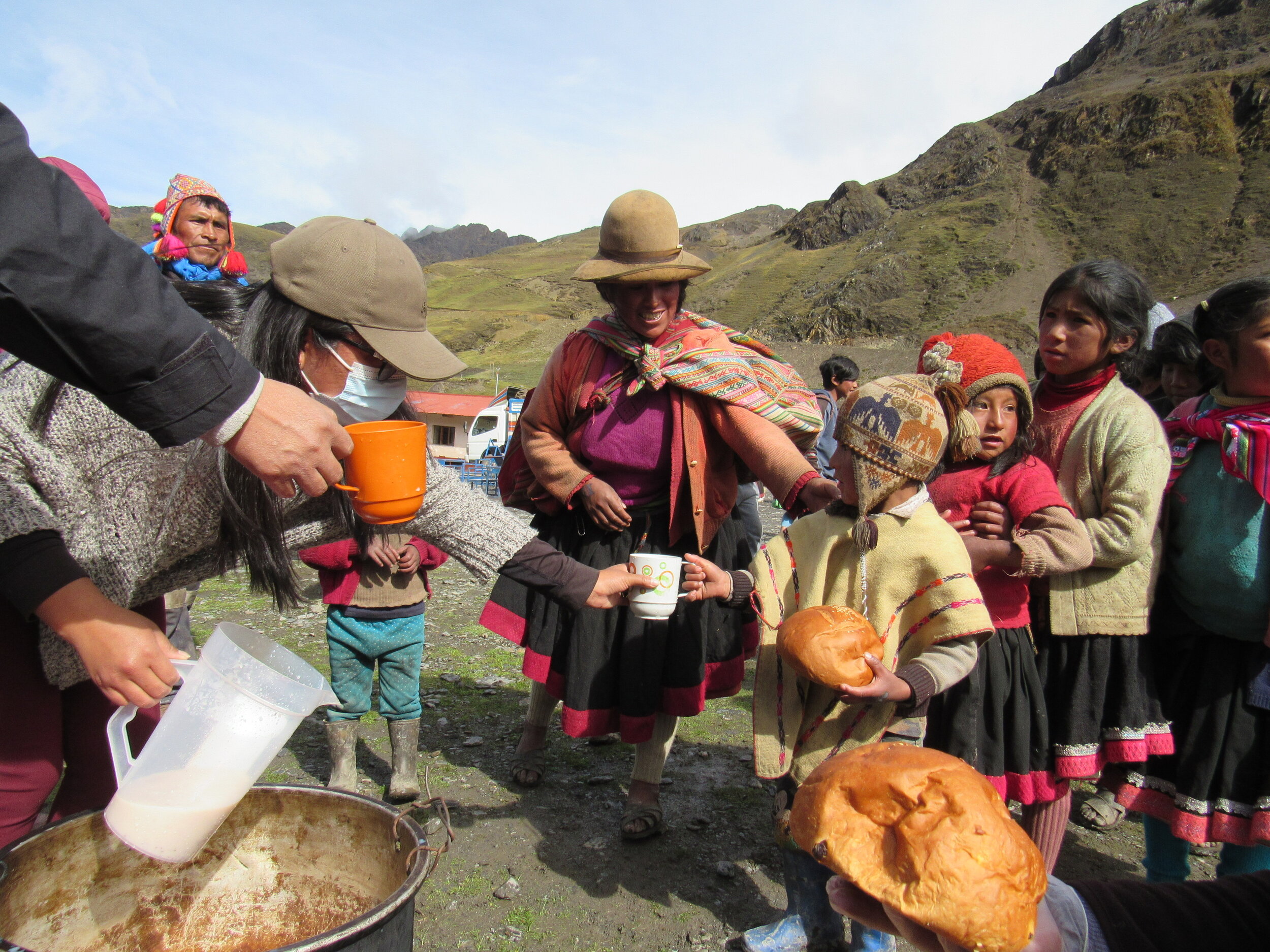
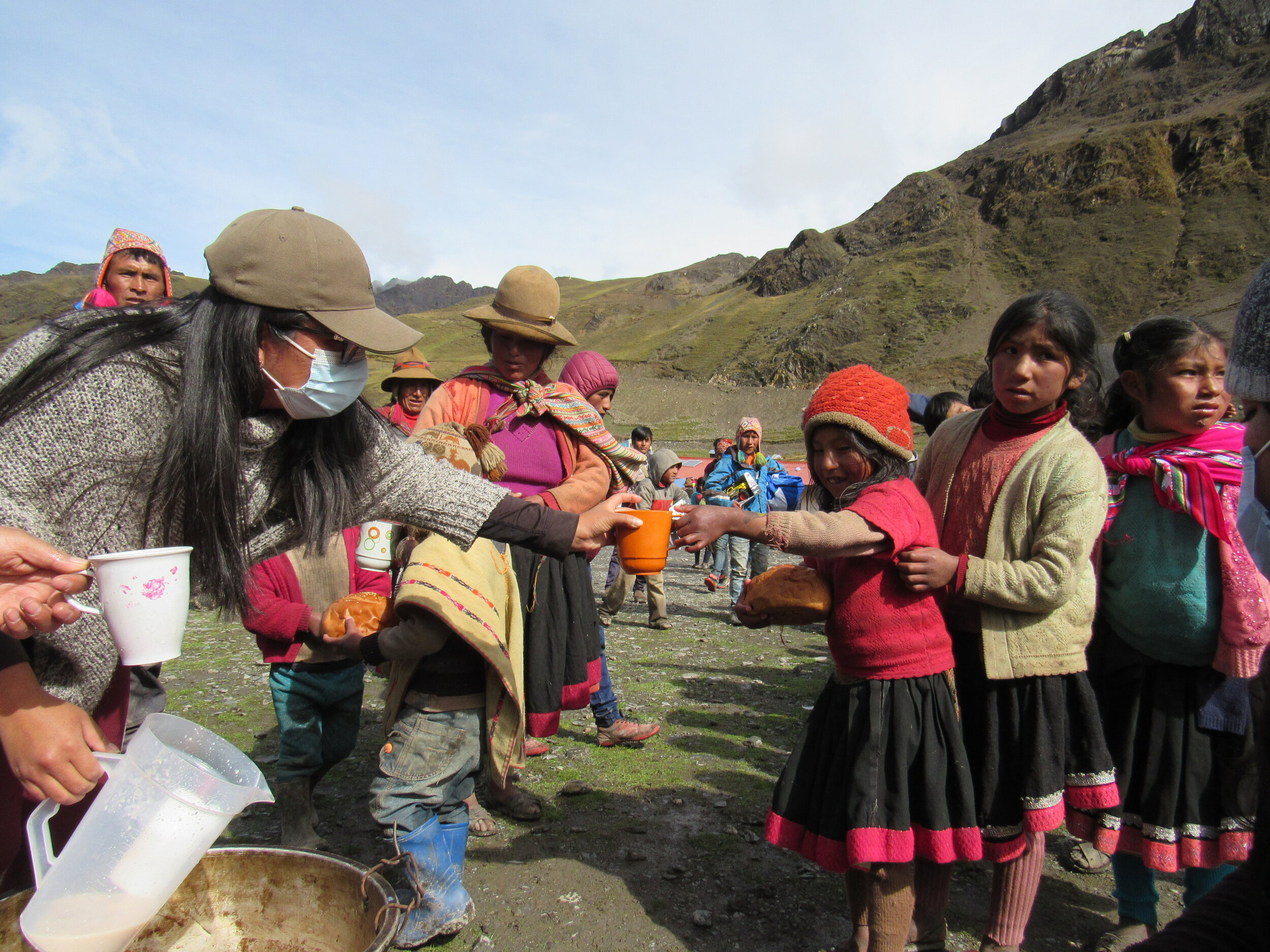
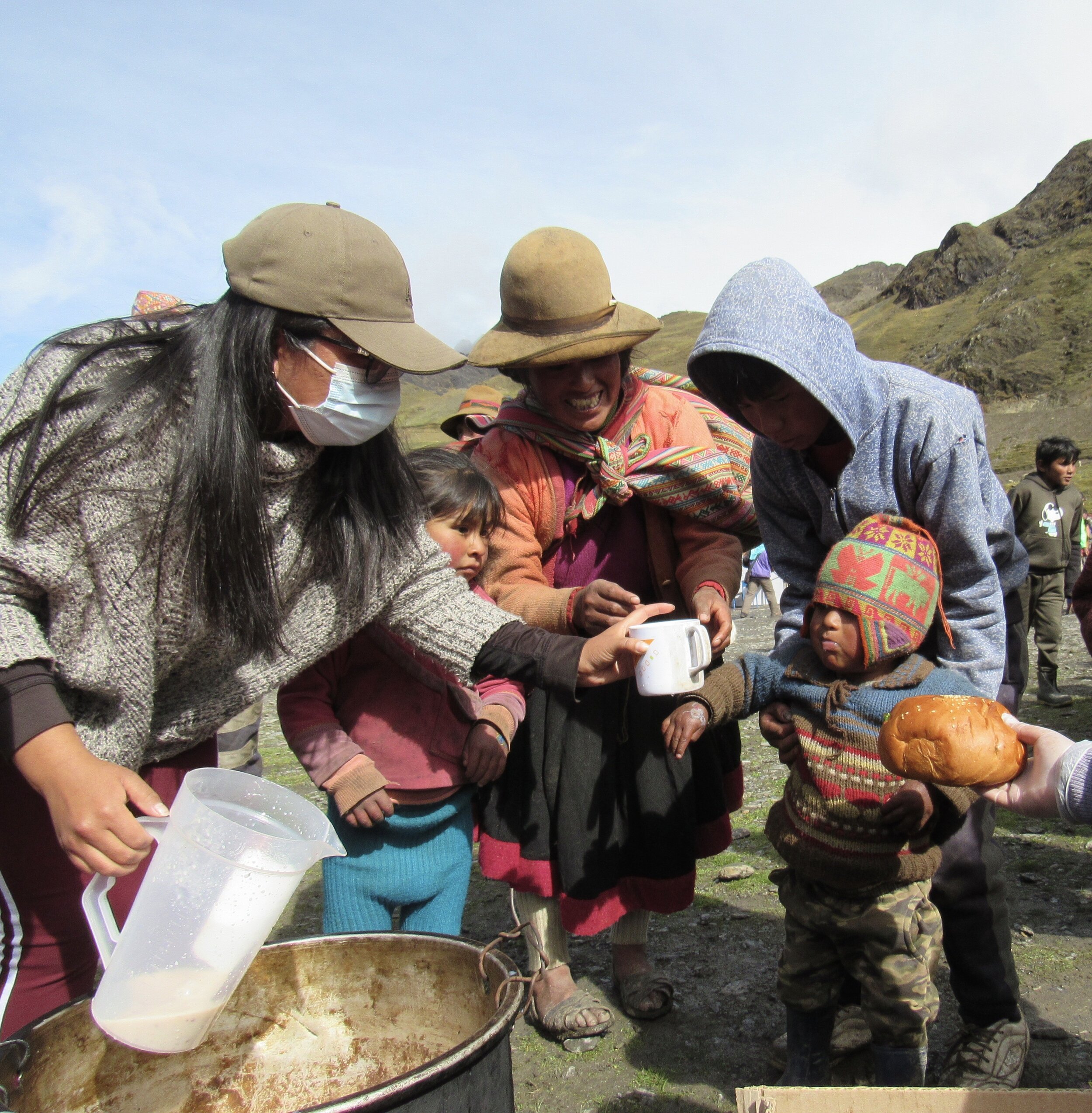
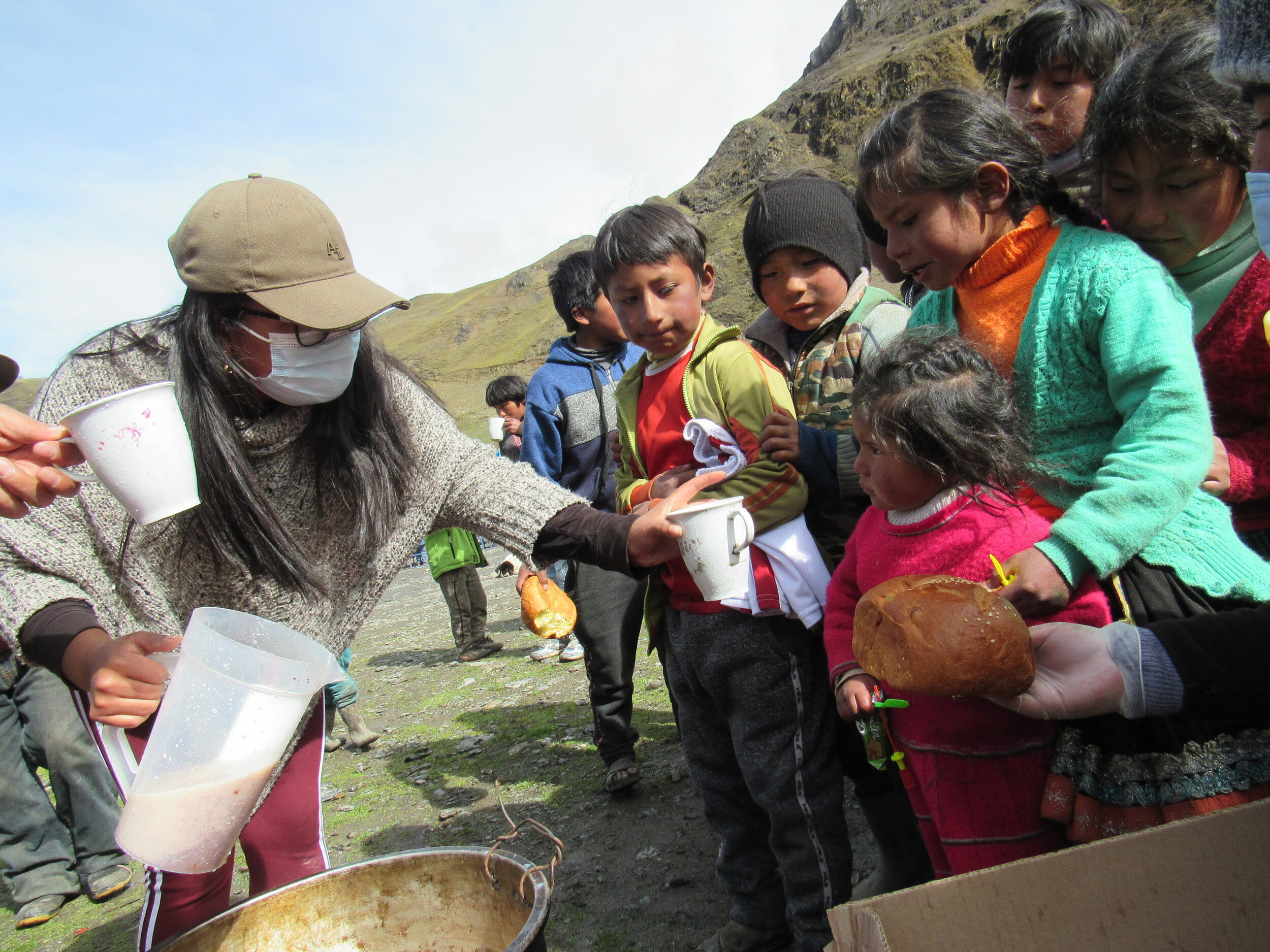
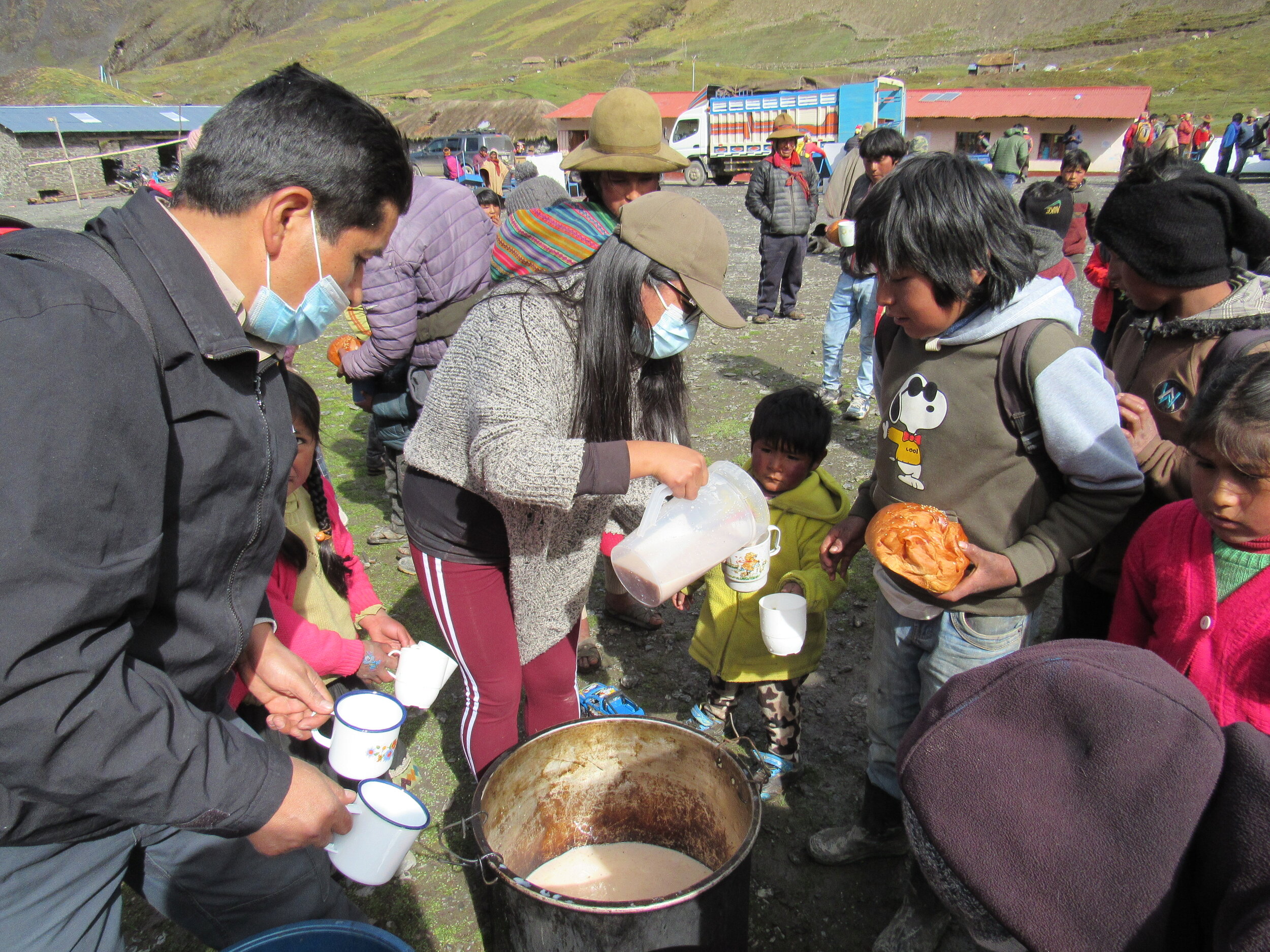
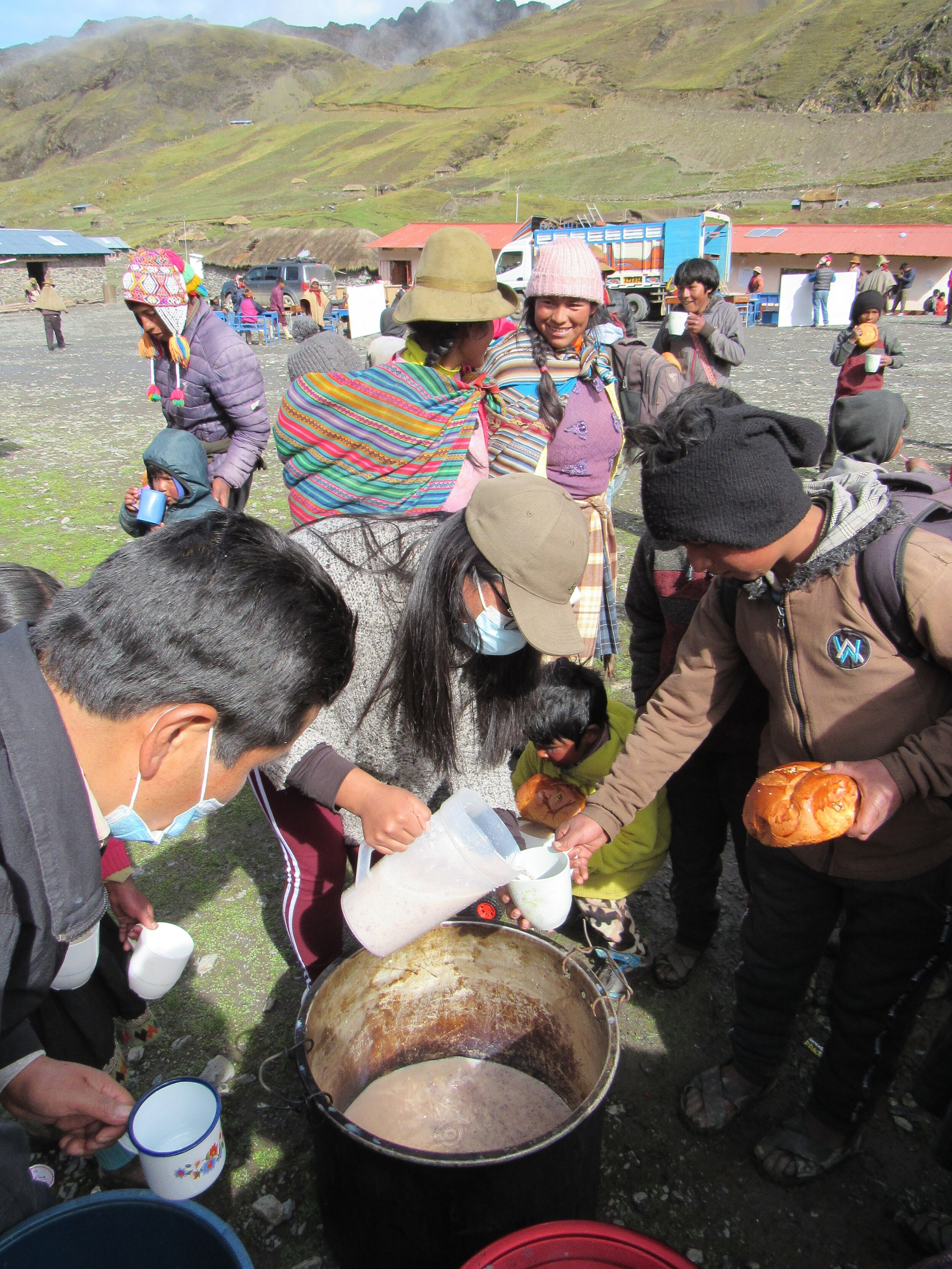
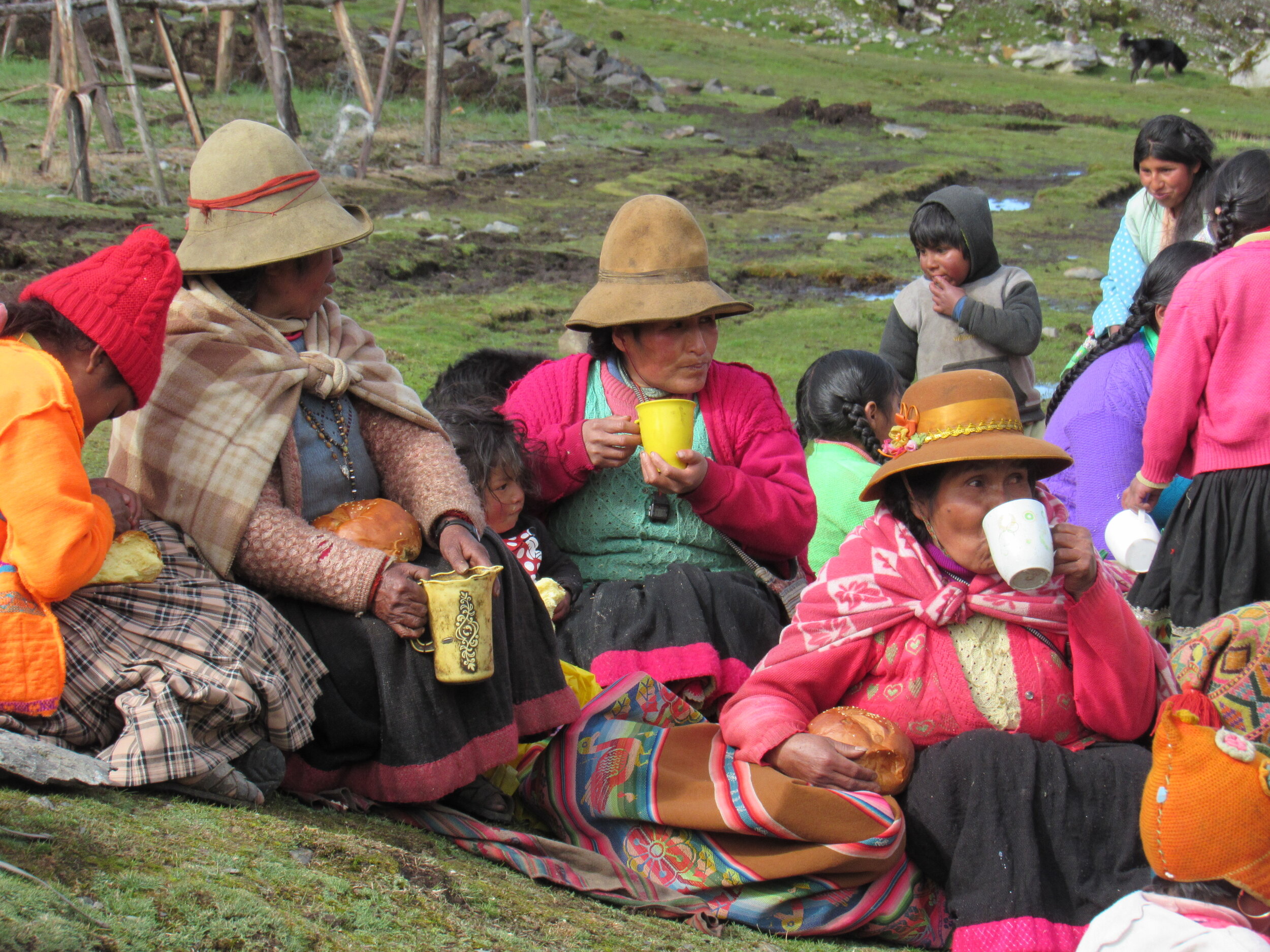
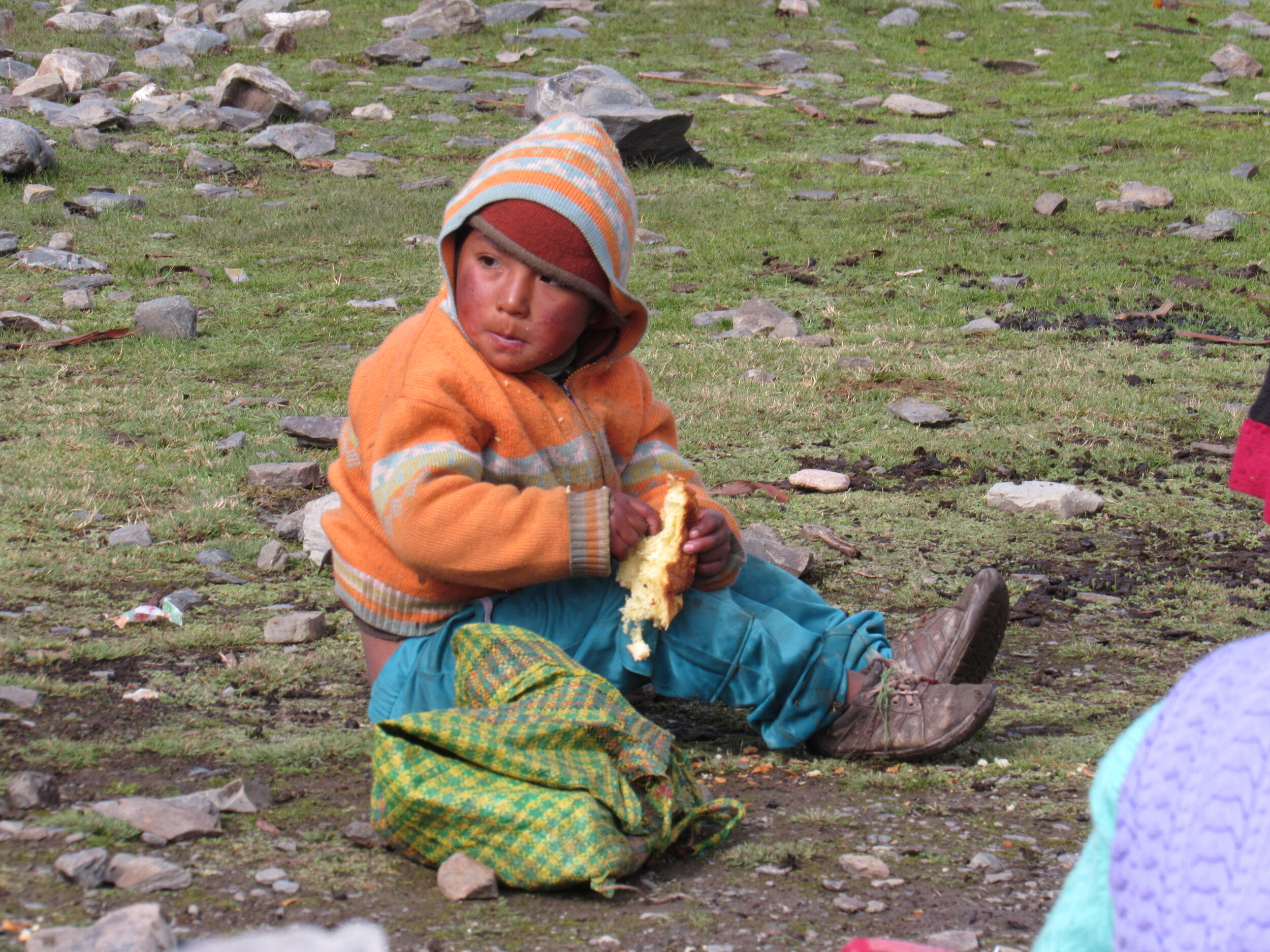

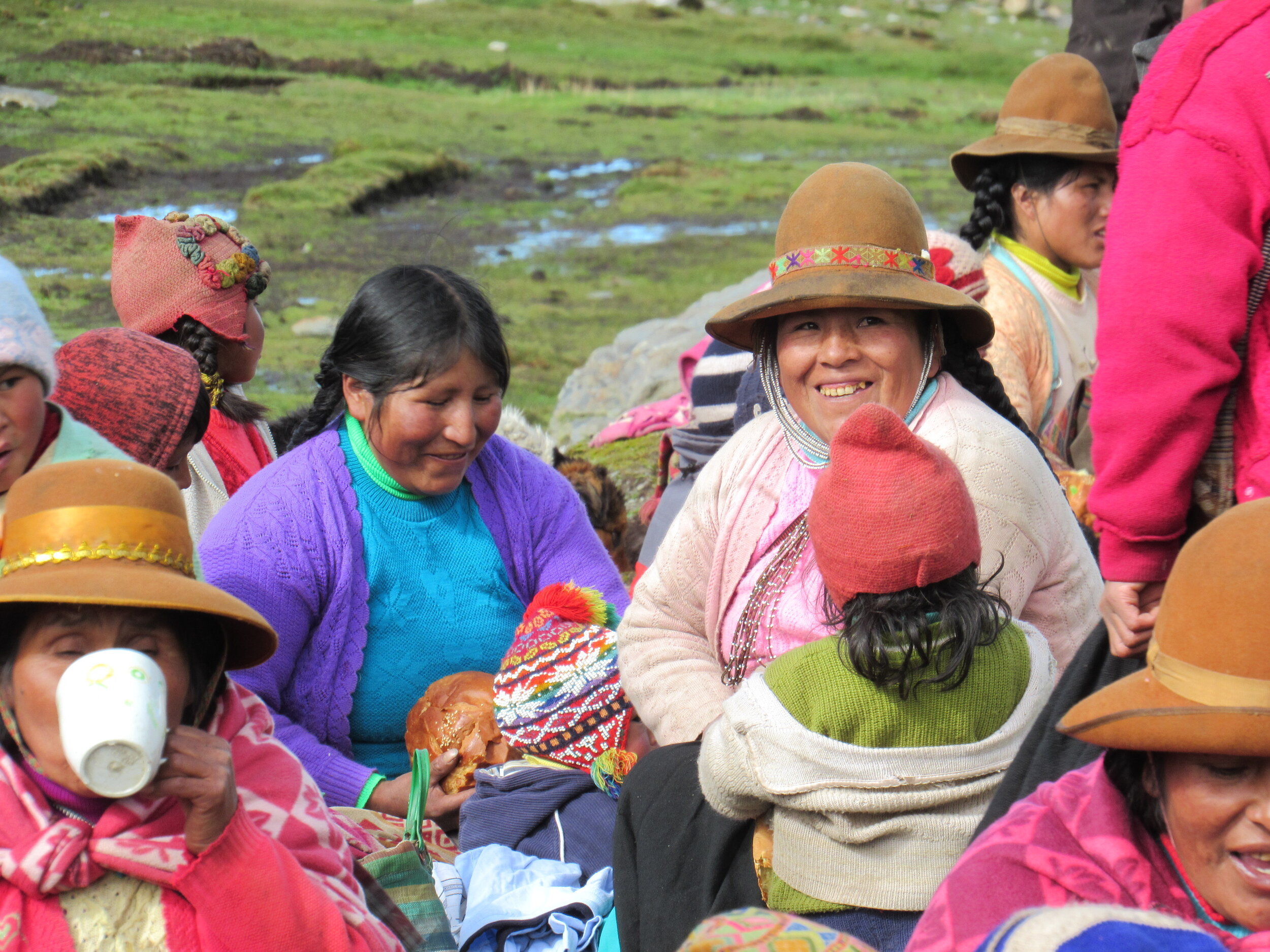

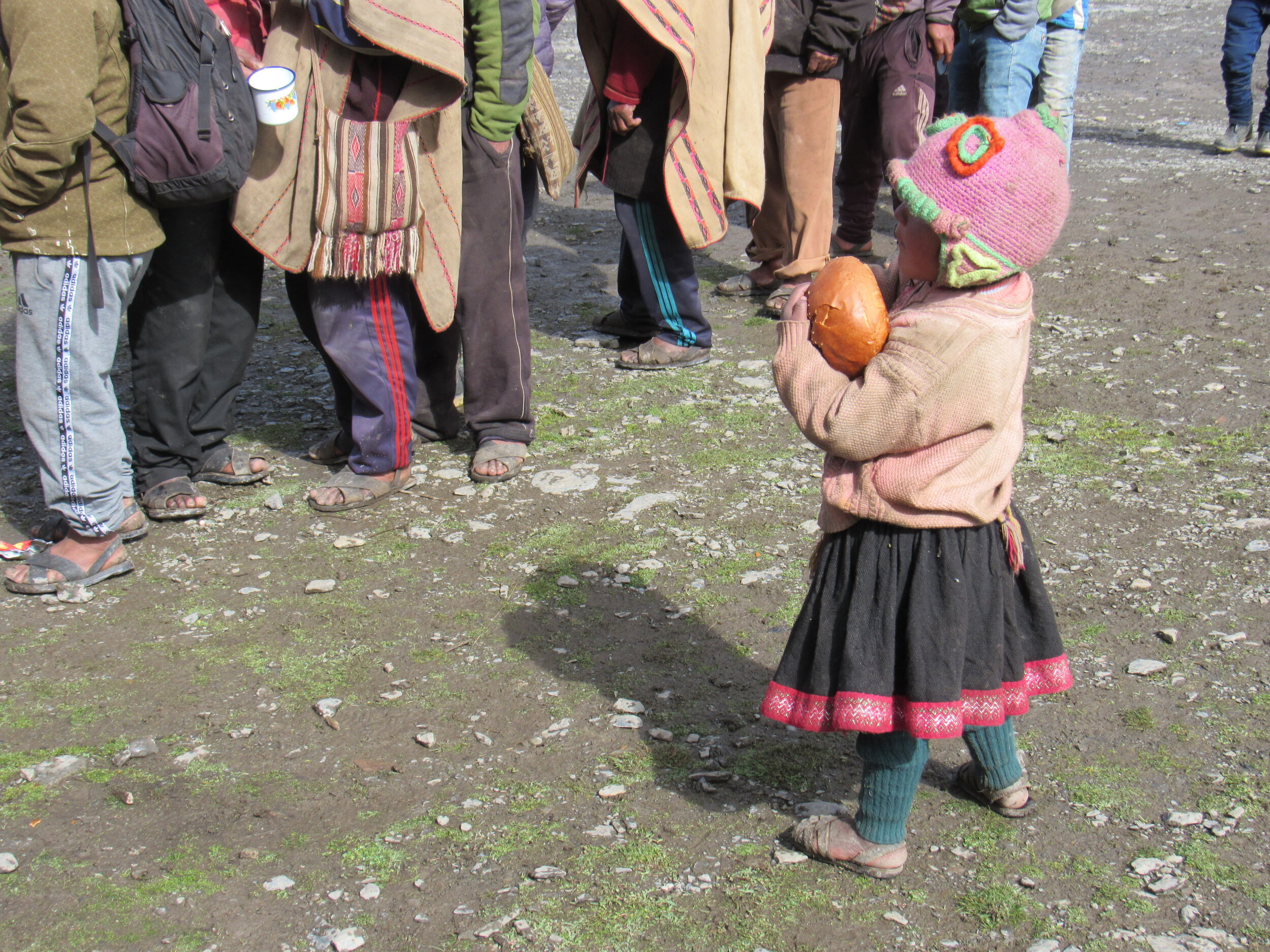
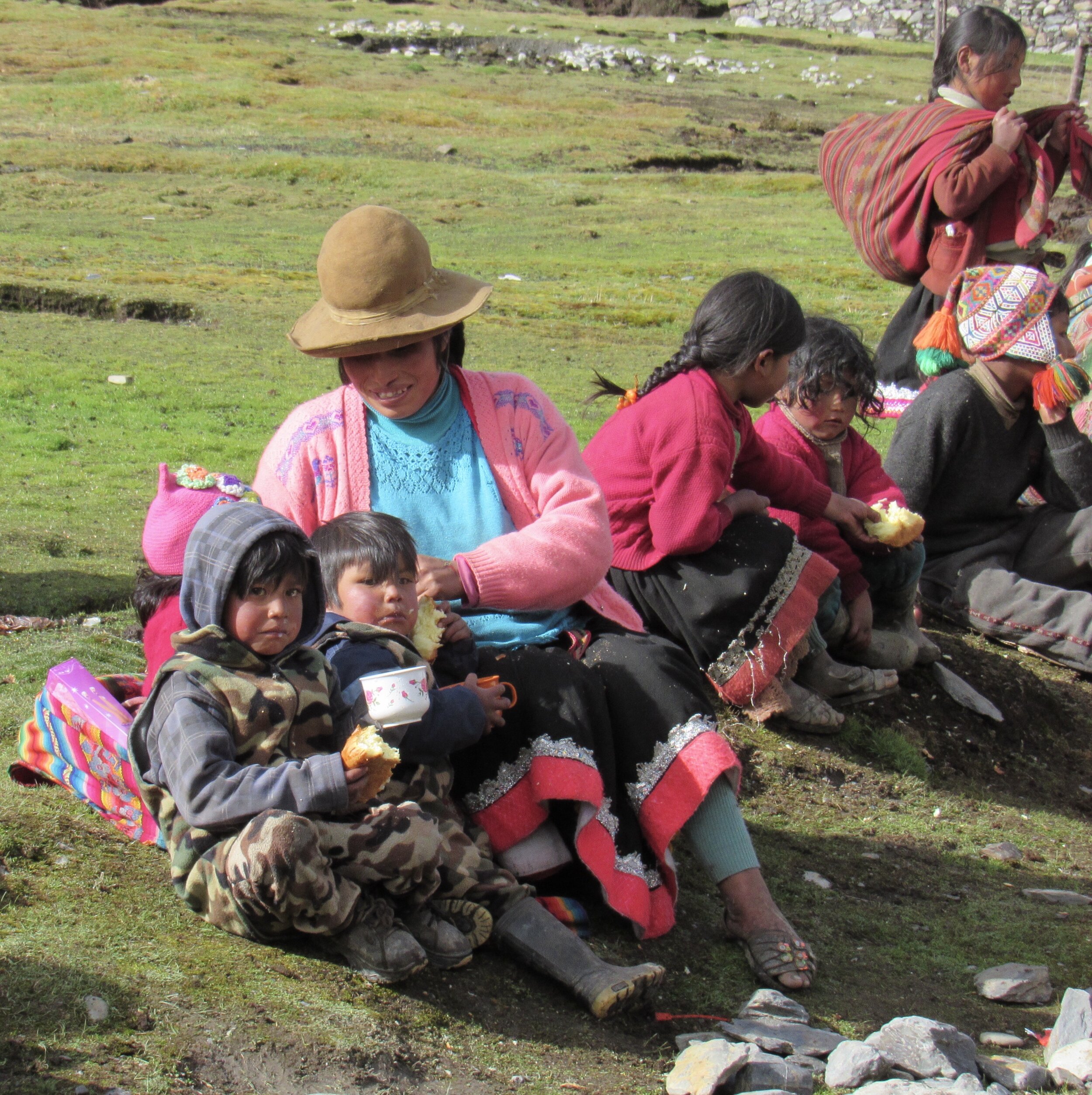
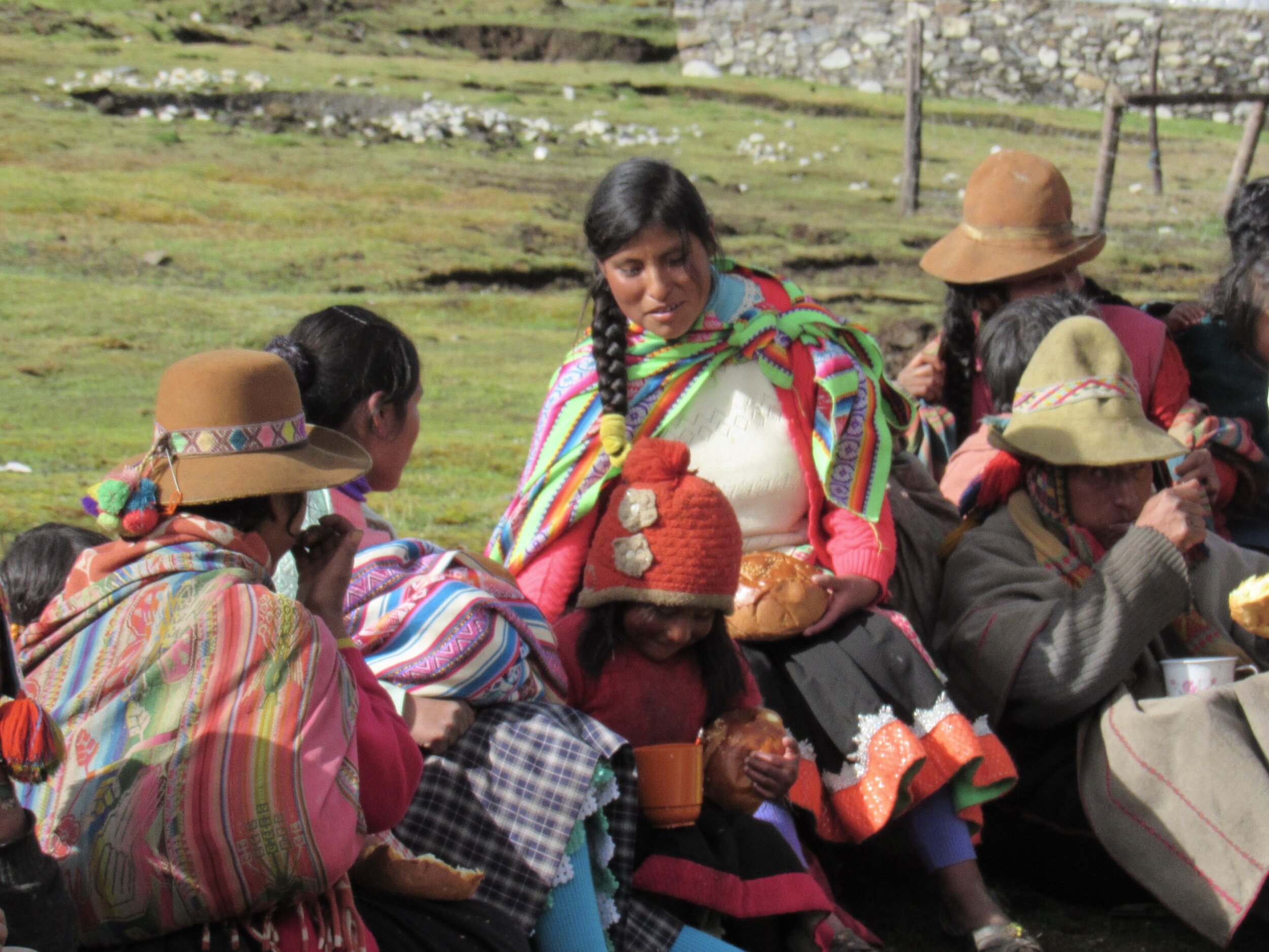
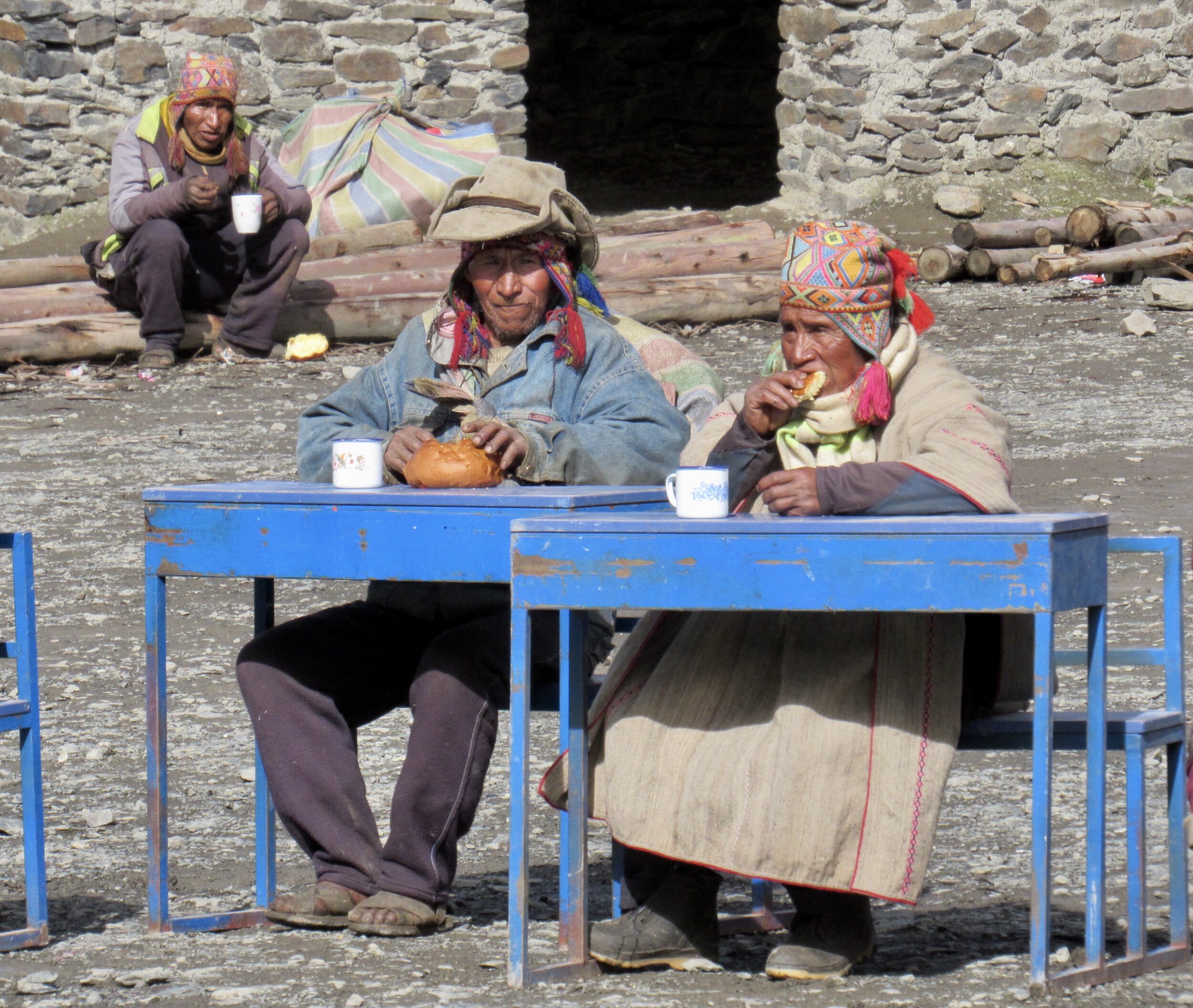
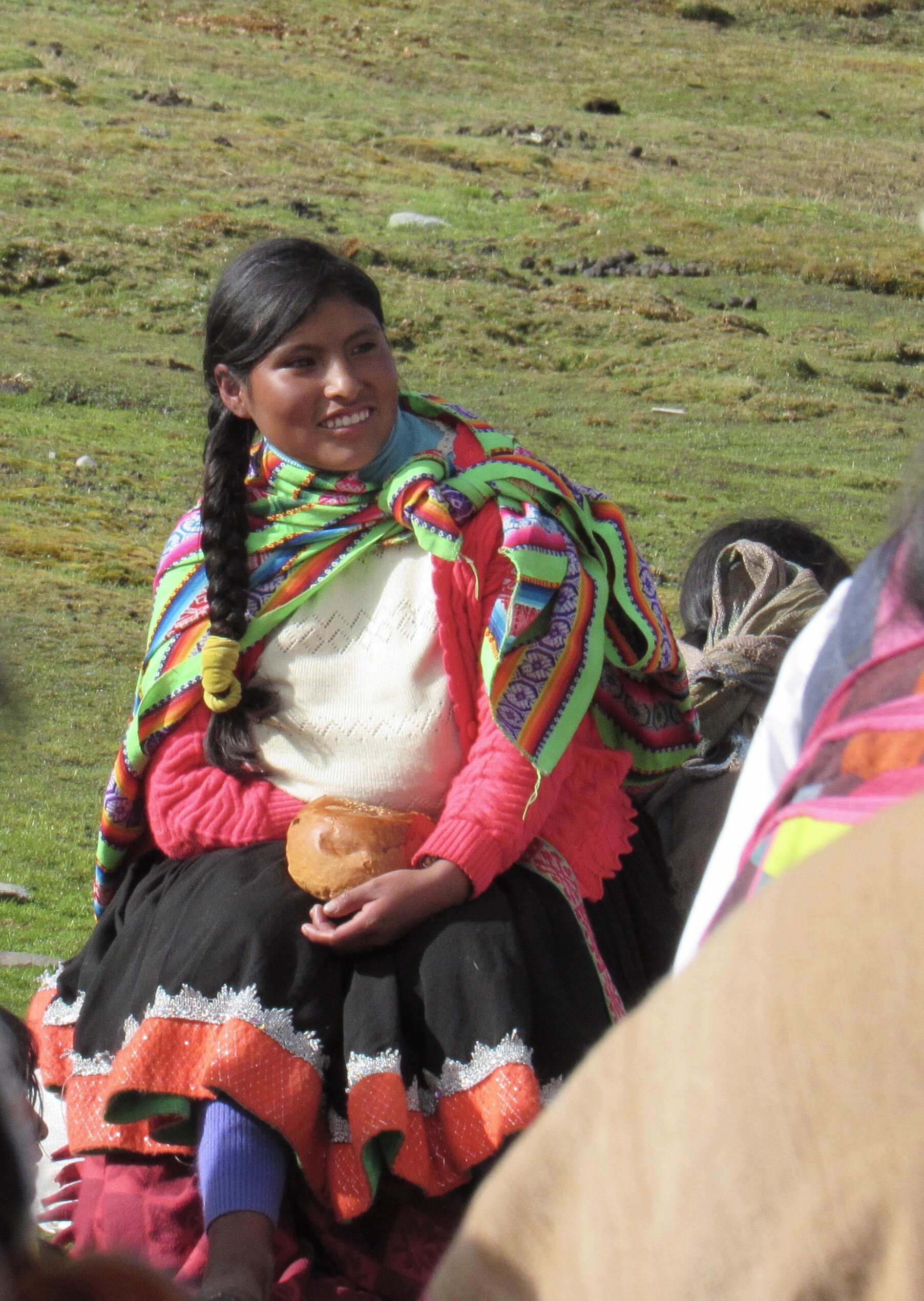
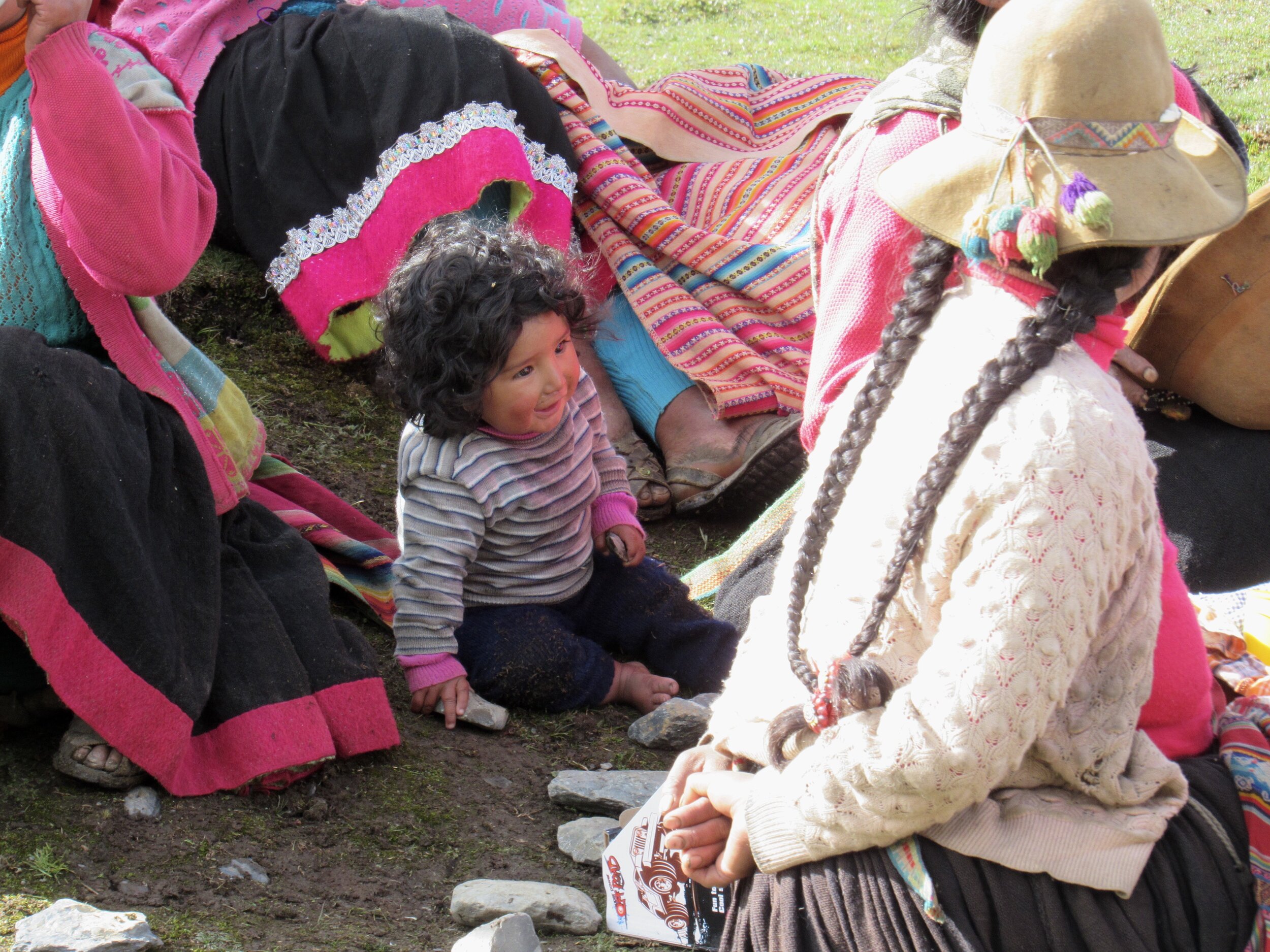
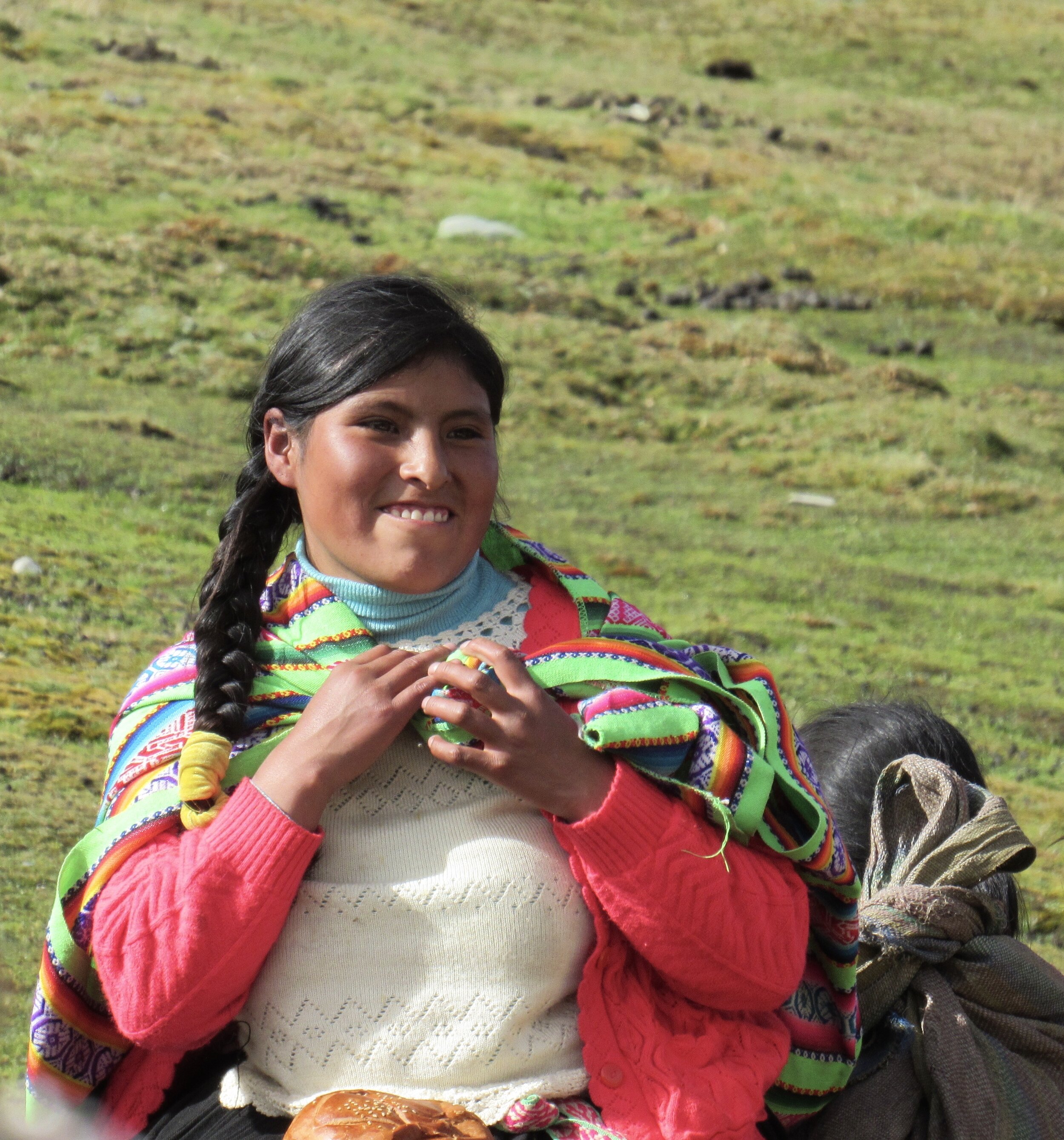
There are no cases of Covid in the area, so the worst they could catch from each other would be the sort of cold that people passed around before the pandemic. Coming from Cusco, we are always very aware that we are the greatest danger they have faced since the pandemic began. We keep our masks on and I make sure that anybody handing out panettone is wearing gloves. Considering that we are outside, as long as we keep our masks on, the risk of one of us spreading Covid to them is very low, even if we are infected and asymptomatic.
After everybody had hot chocolate and panettone, the community president called out names from a list of heads of household while we distributed 4 kilos of rice, 2 kilos of sugar, 1 kilo of salt, 2 bags of oatmeal, 2 oranges and an extra panettone to each person. In theory, one adult representative from each family is supposed to receive the donations. In practice, many elderly people who live alone are not able to walk to the village and somebody has to stay out in the mountains, watching the alpaca. Often, children watch alpaca, but since we were giving out children’s clothes, and since hot chocolate is so popular with children, many parents sent the kids to the village and stayed to watch their alpaca. Several men came through the line four or five times and we teased them about how many families they had, although we knew that they were going to be taking the food to families that were unable to send an adult to the village. Also, there were many elderly people who had come to the chocolatada, but who were unable to walk through the line carrying about 8 kilos of food. Young men came through the line, then took the food over to their elders. I assume that they also helped them carry the food home at the end of the day.
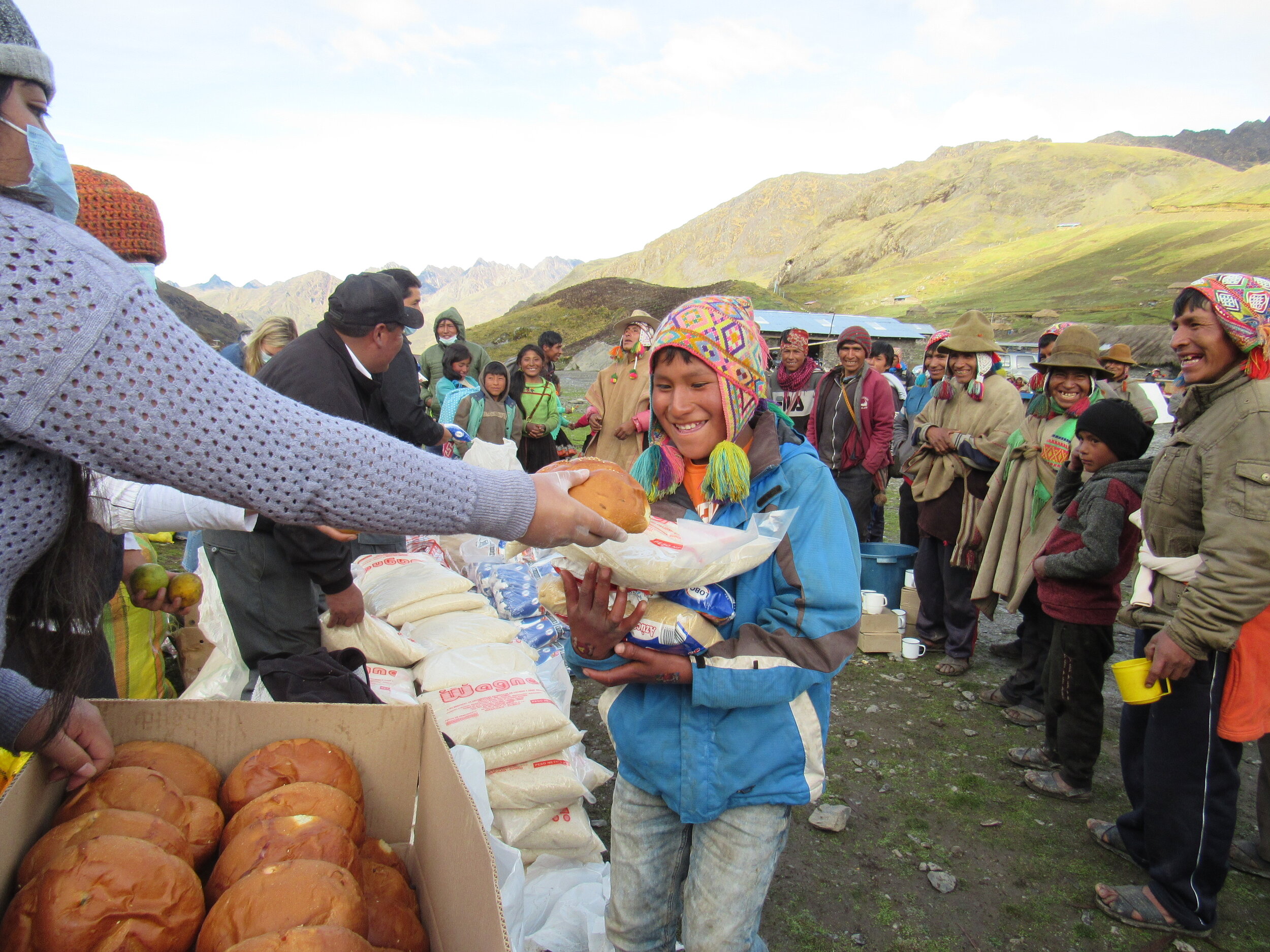
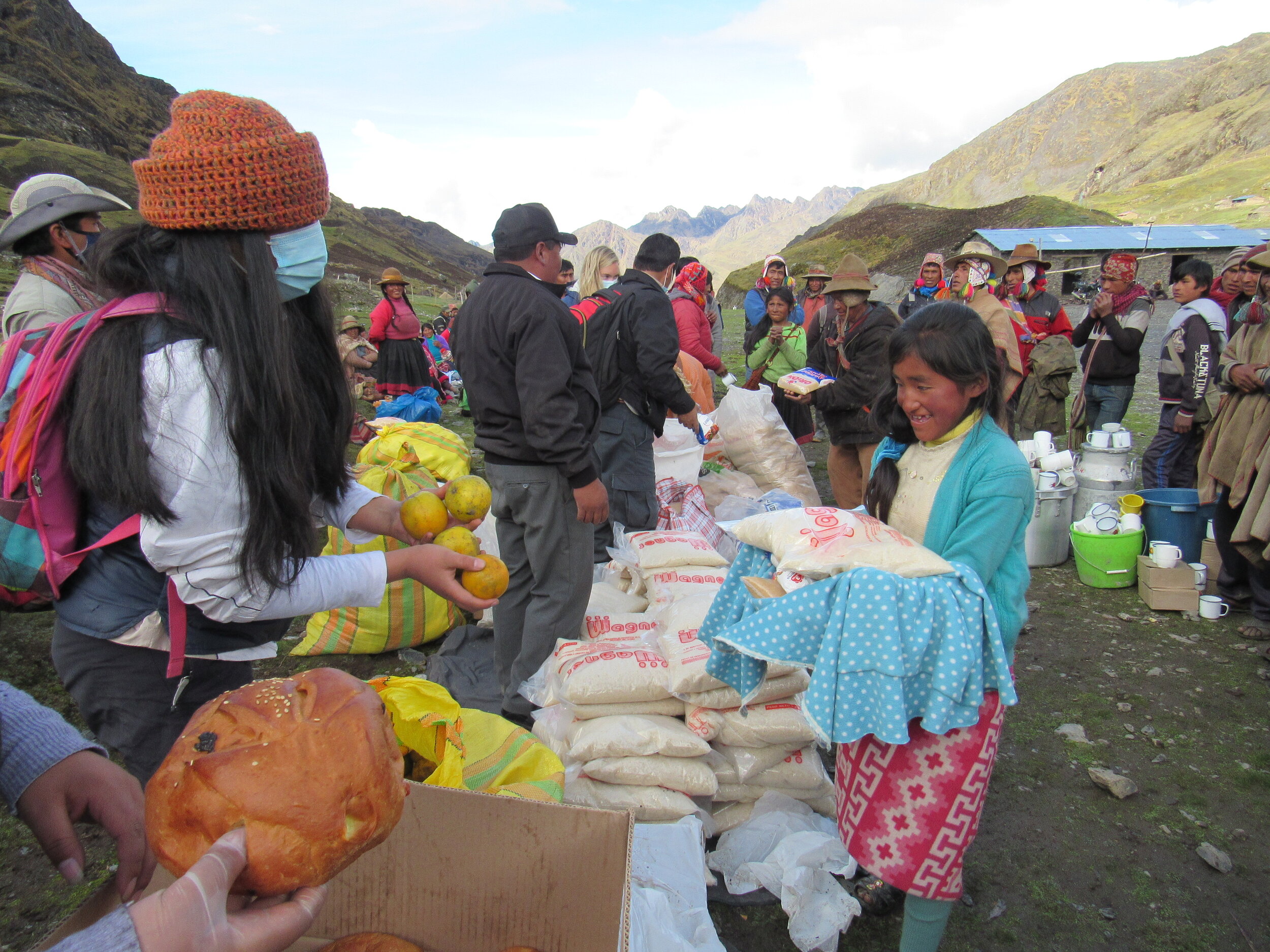
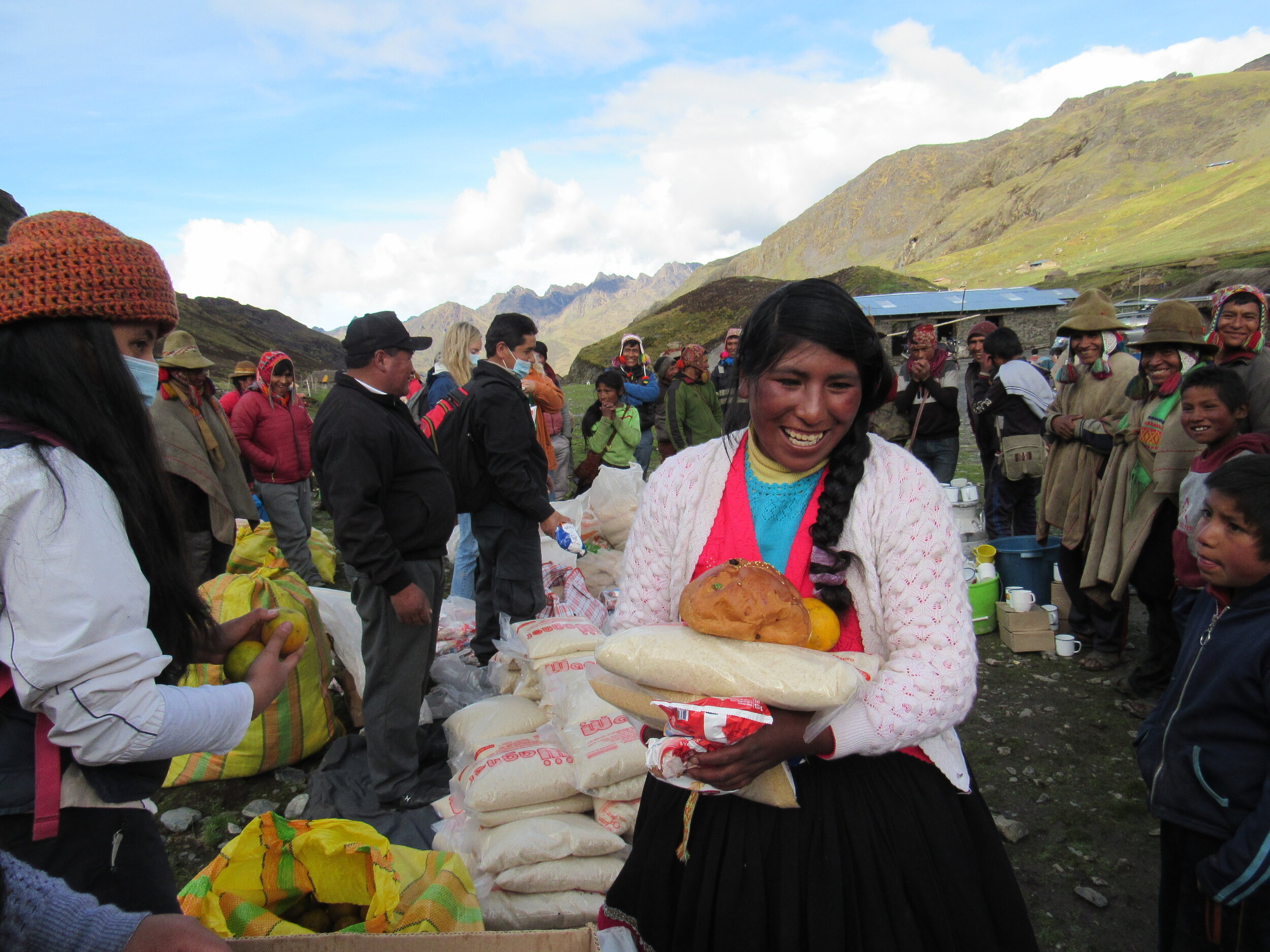
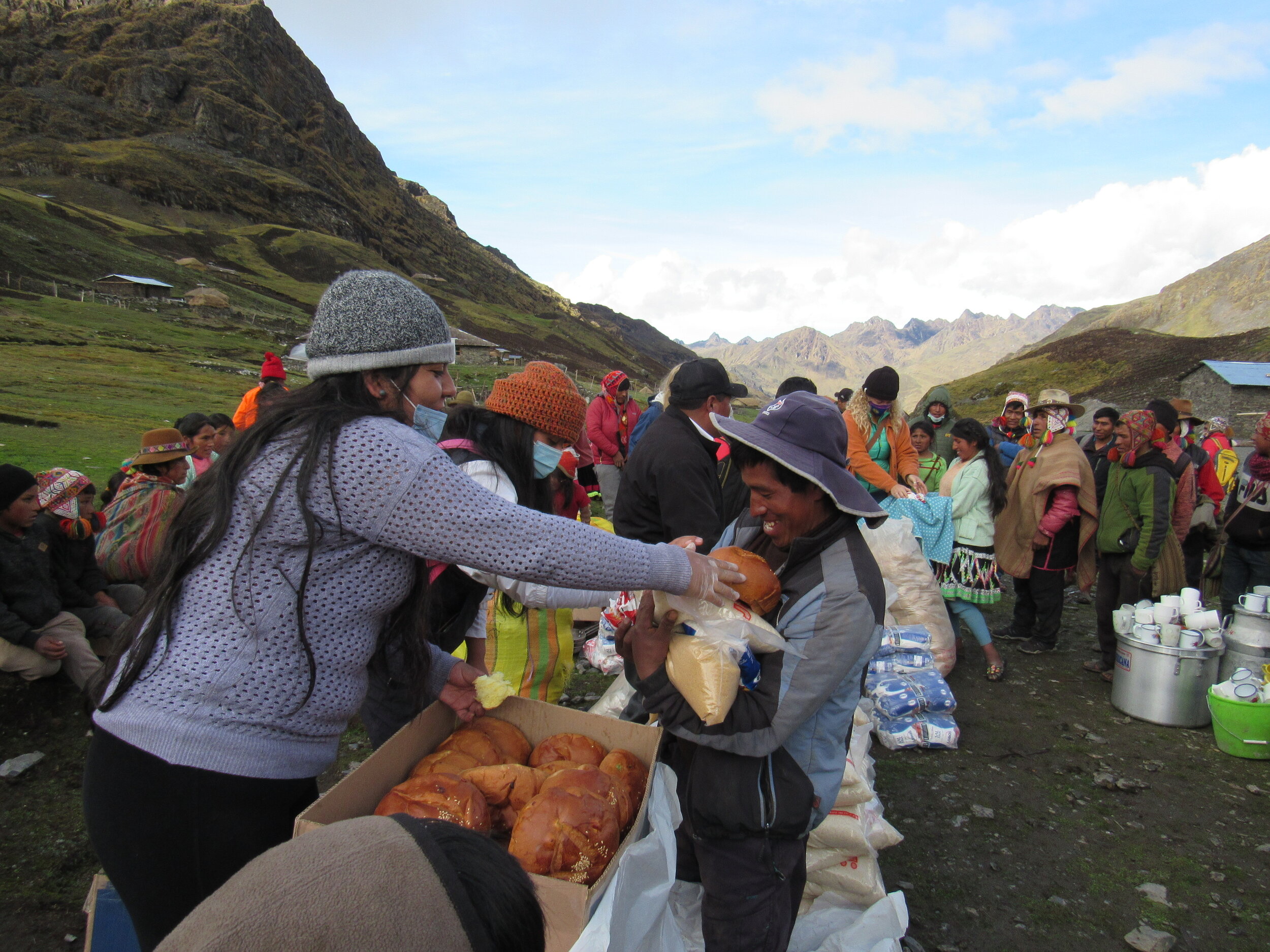
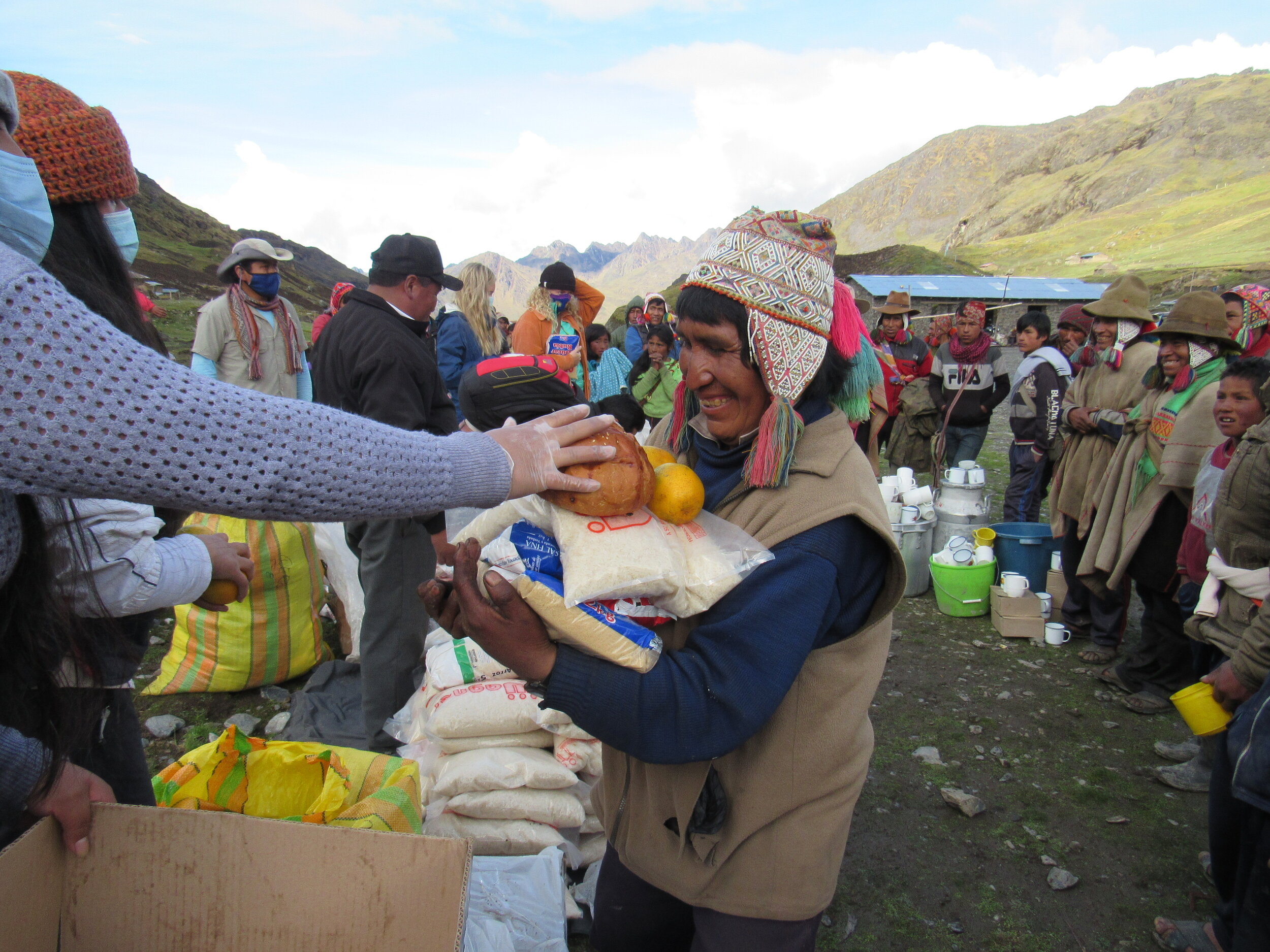
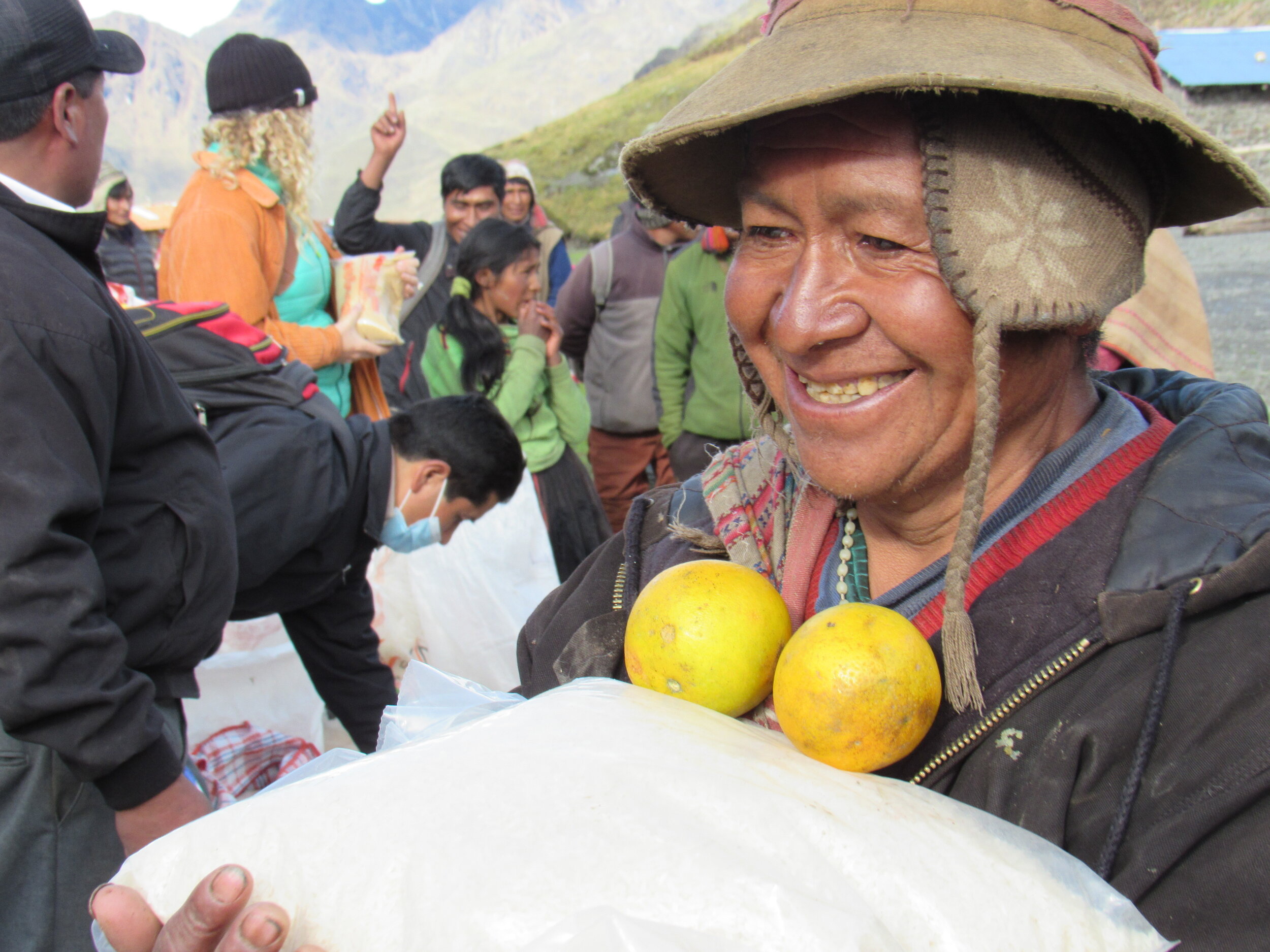

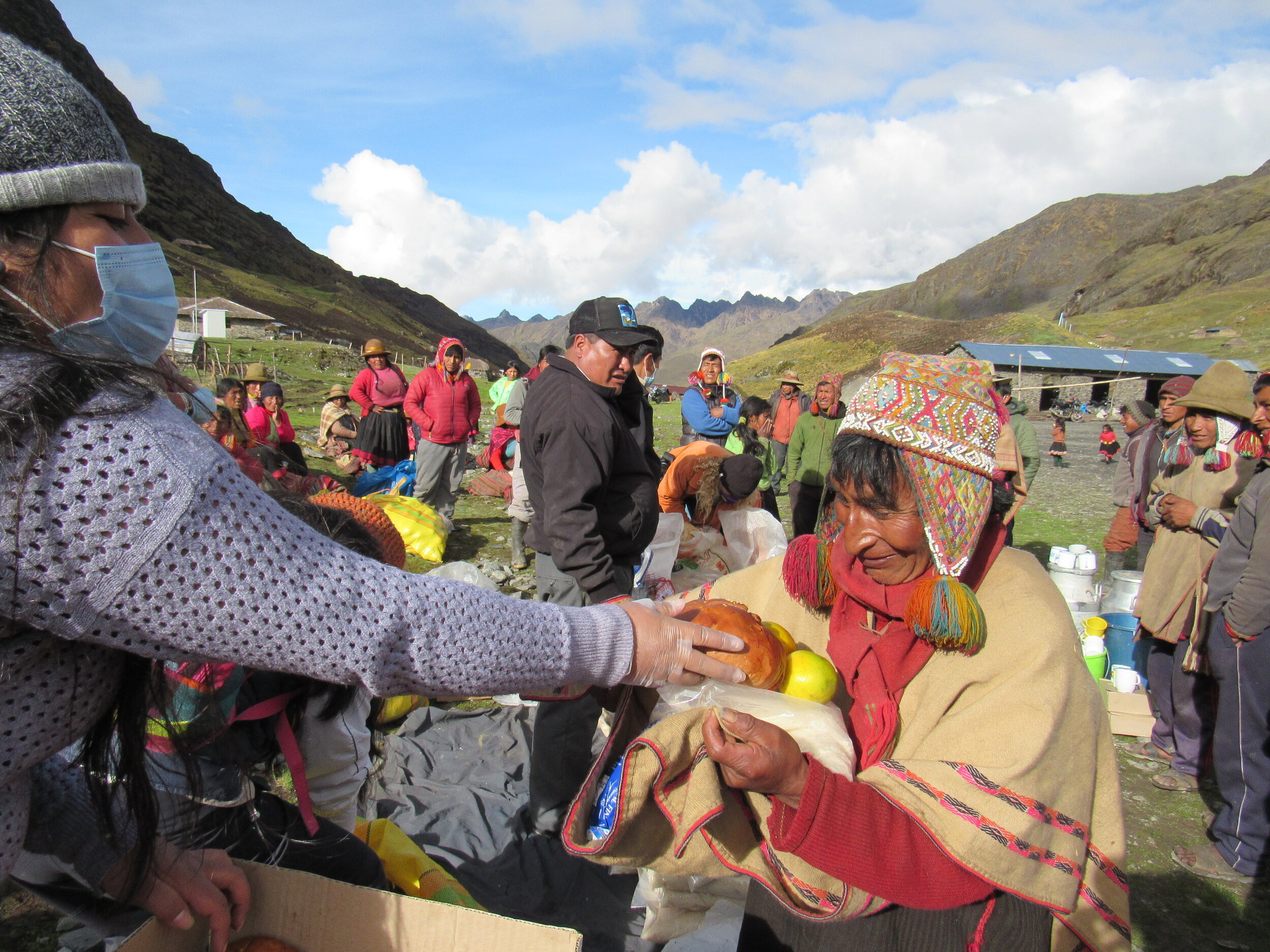
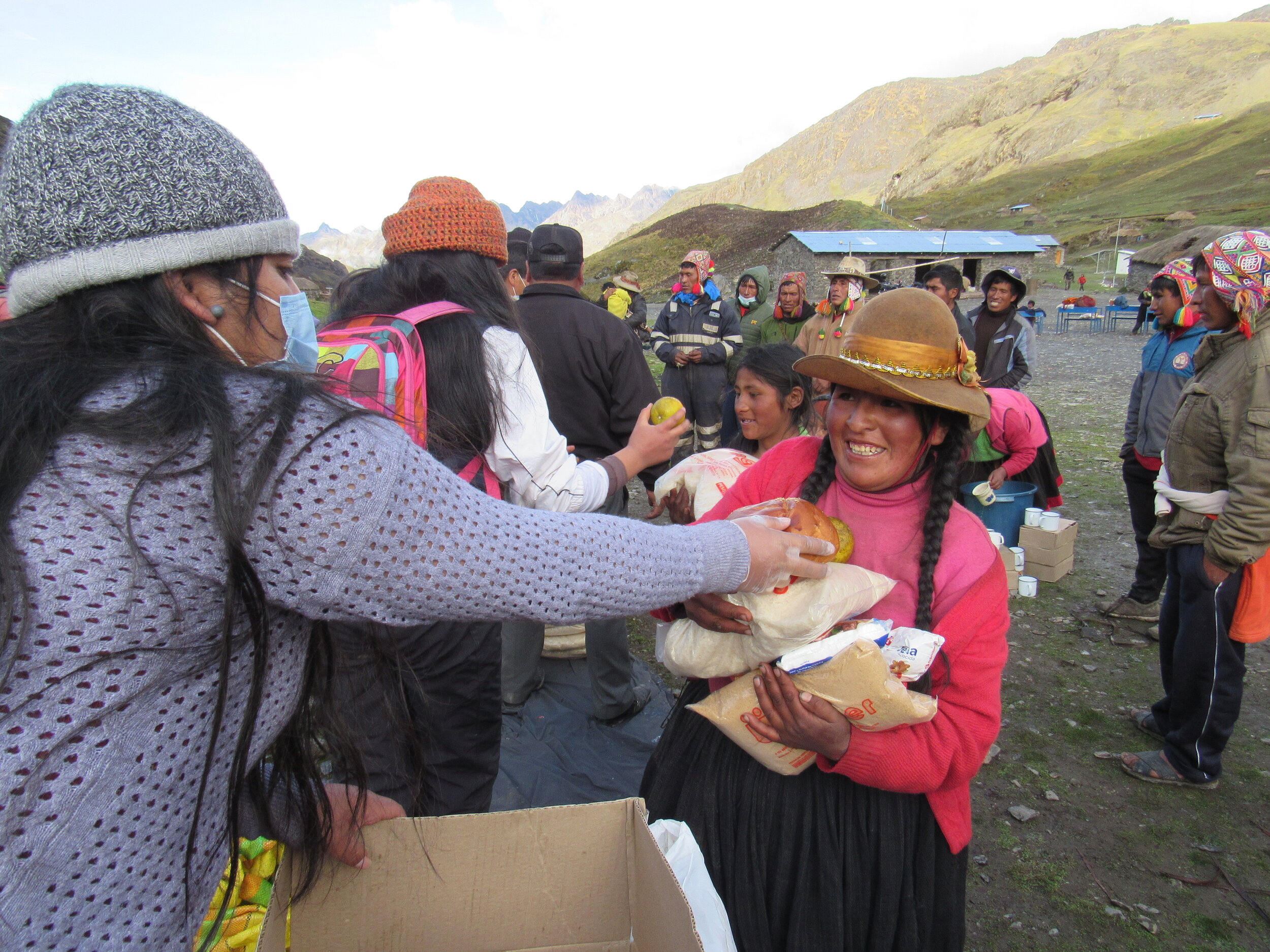
We are used to sitting around after we distribute the donations, sharing food or just chatting with the villagers. Unfortunately, it was already past 4:30 and we really had to hit the road. It’s about two hours on very rough dirt roads from Hatun Q’ero to Paucartambo. From Paucartambo to Cusco the road is paved, but it gets dark not long after 6:00 and those mountain roads are much more dangerous after dark. The dirt roads from Hatun Q’ero to Paucartambo do not have any guardrails when there is a big drop off, or where the road is particularly narrow. The drivers honk when we drive around a sharp corner, in case somebody is coming in the opposite direction that we can’t see, but that only warns people. More than once there were alpaca in the road, which are as unaware as a cow would be of what a car honking around the corner would mean. Thankfully, alpaca are quite skittish and afraid of anything loud, so they generally flee at the sound of a car, truck or motorcycle. Few people can afford a truck out in the mountains and cars really can’t handle those roads, but there are always a couple families who have a motorcycle for going to town. It’s very dangerous to drive a motorcycle on those roads after dark, but sometimes you just can’t get home in the daylight, no matter how hard you try.
It was after 10:00 when we got home, tired and hungry, but happy to have been able to help the families of Hatun Q’ero, despite the logistical difficulties. I do hope to be able to go back some day, perhaps spending the night in Paucartambo so there is less of a drive to the village. I would love to hear from the Q’ero how the pandemic is affecting them and how they are experiencing the effects of climate change.
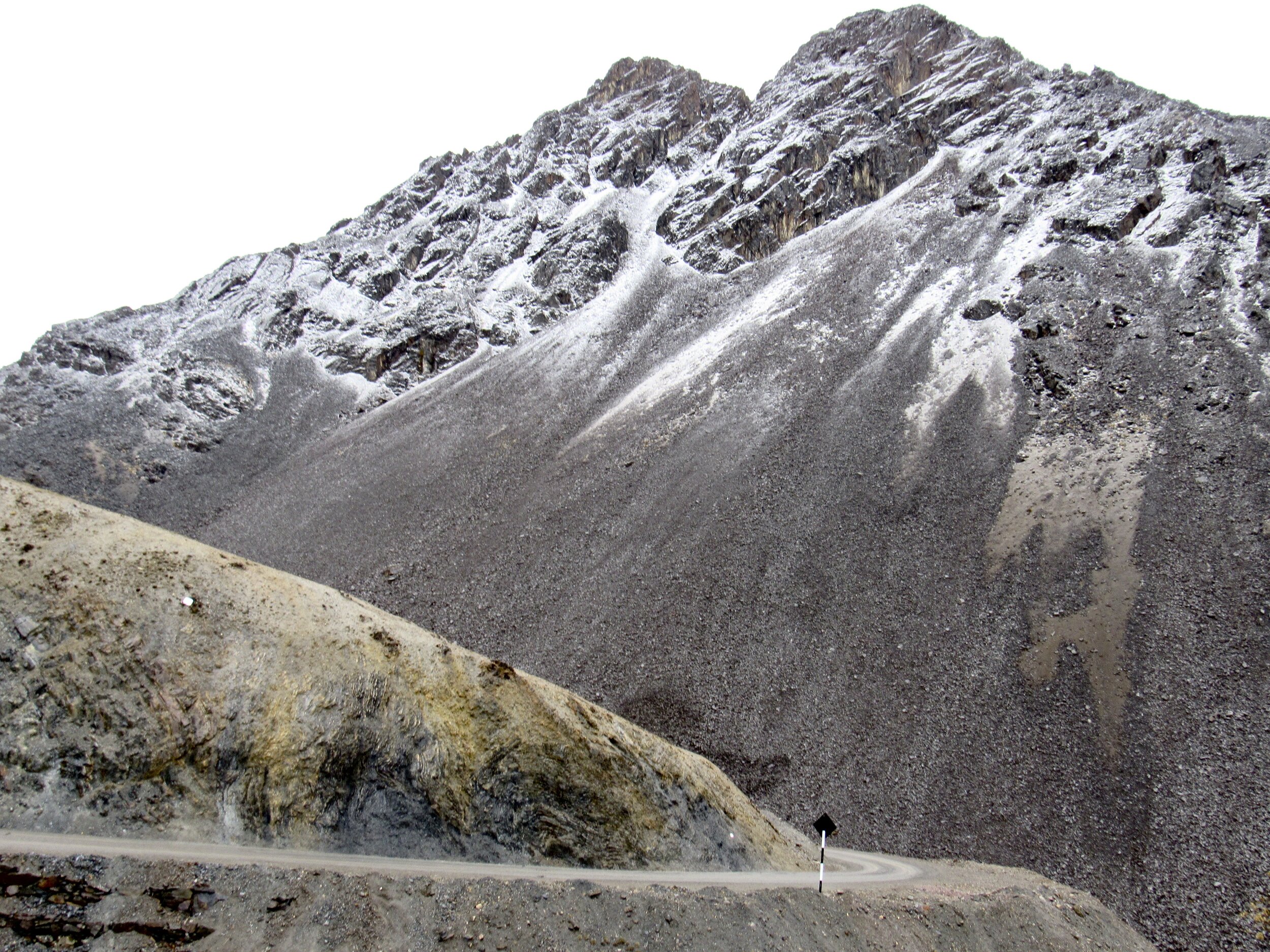
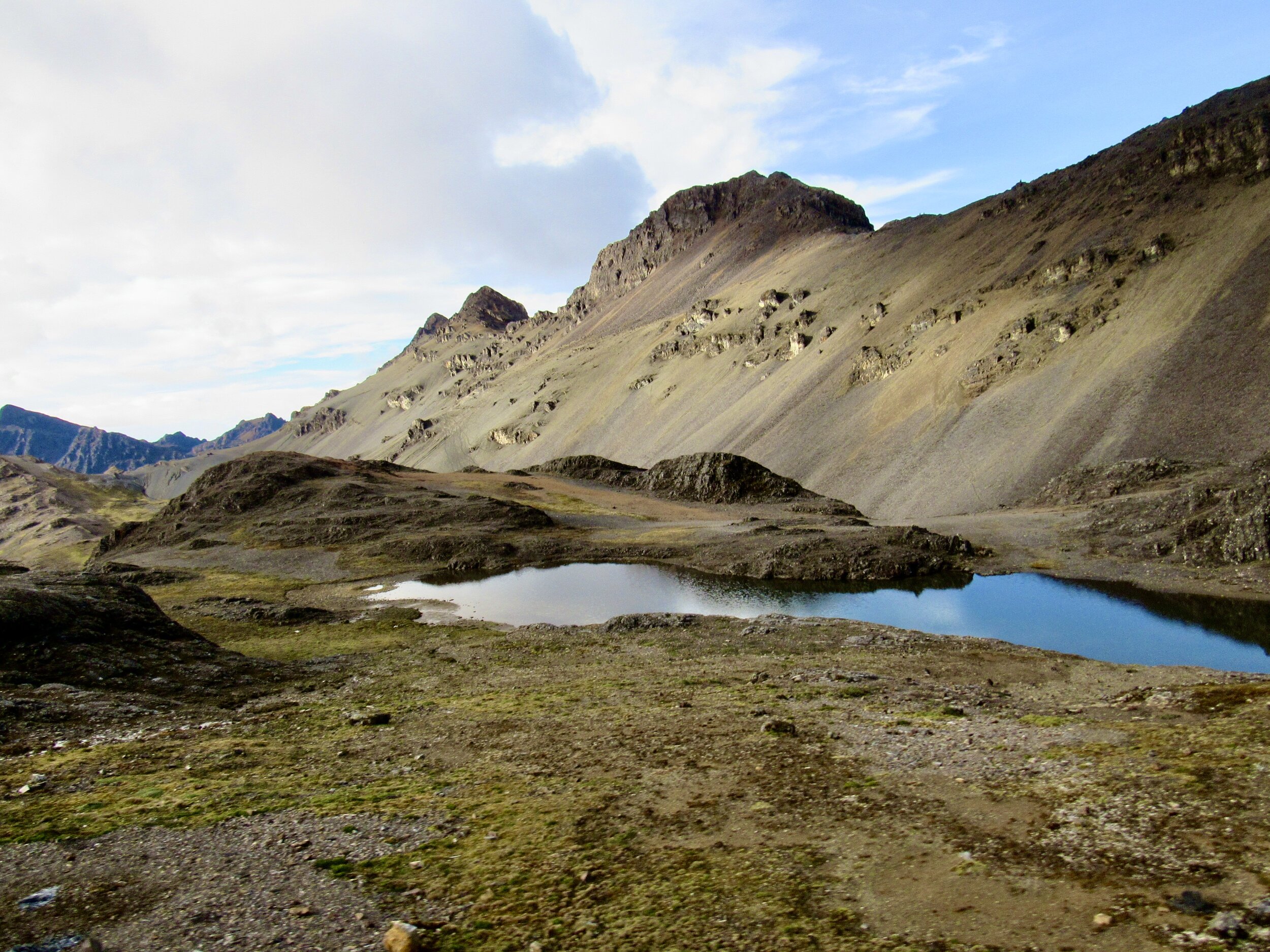
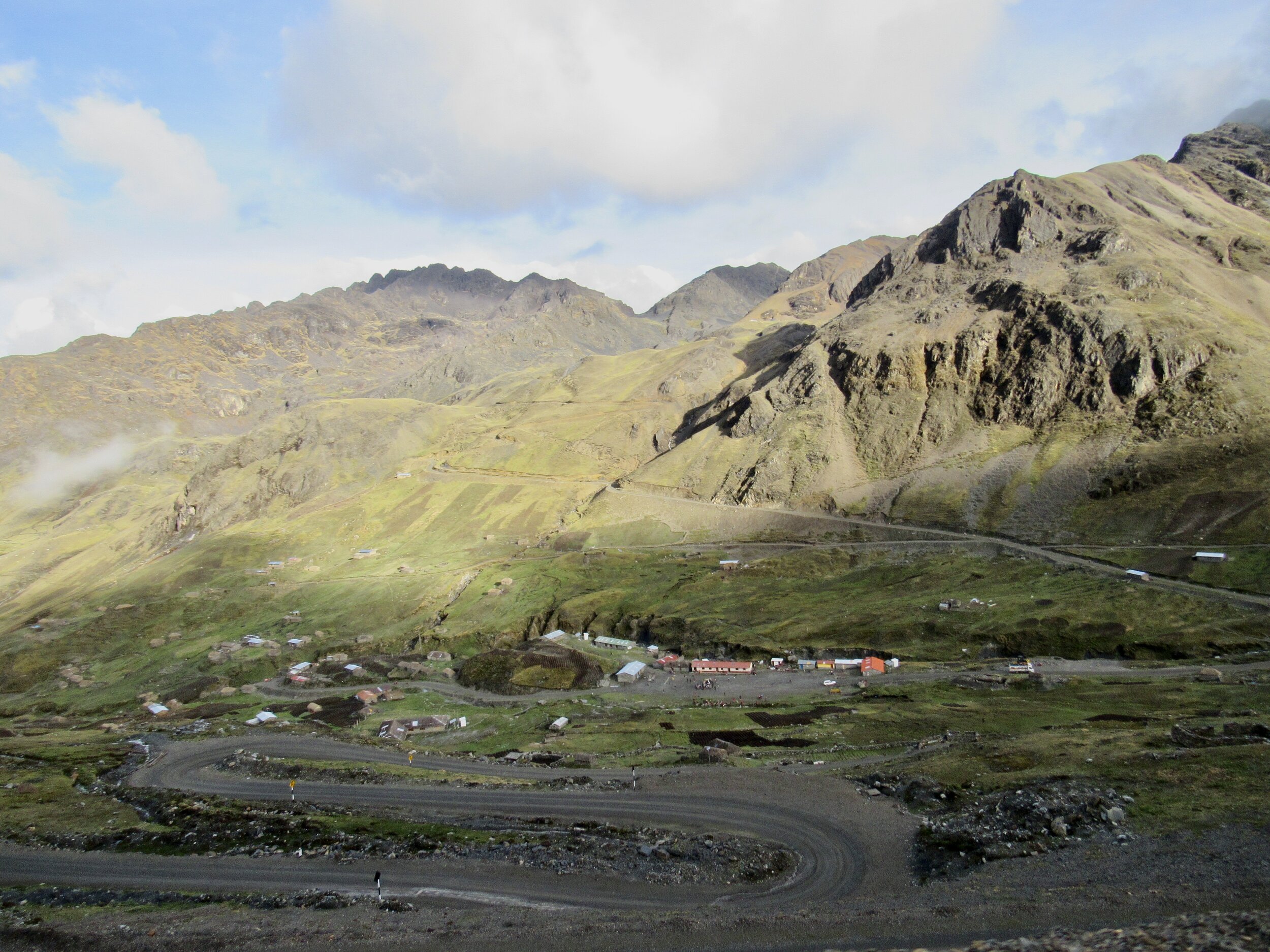
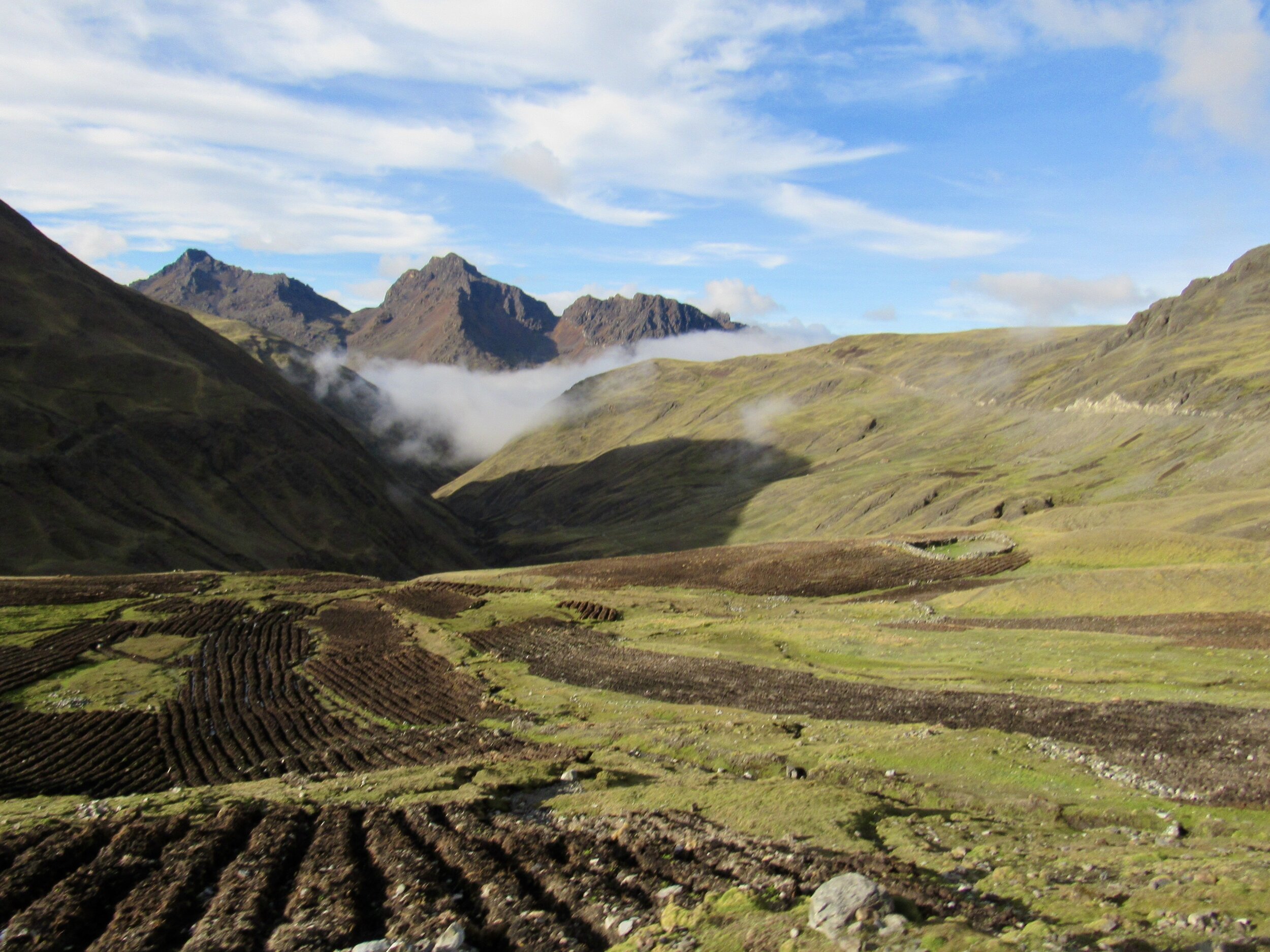
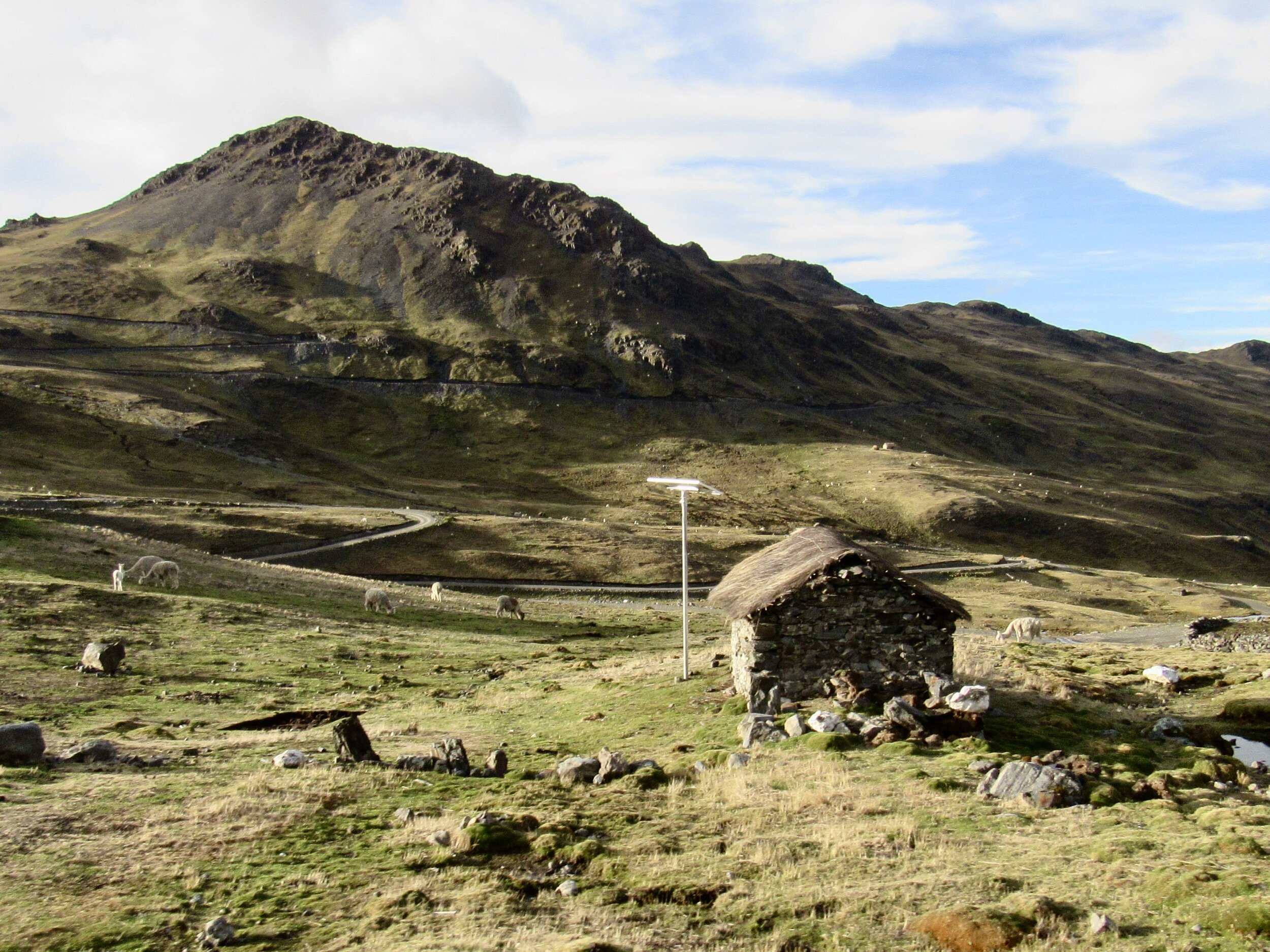
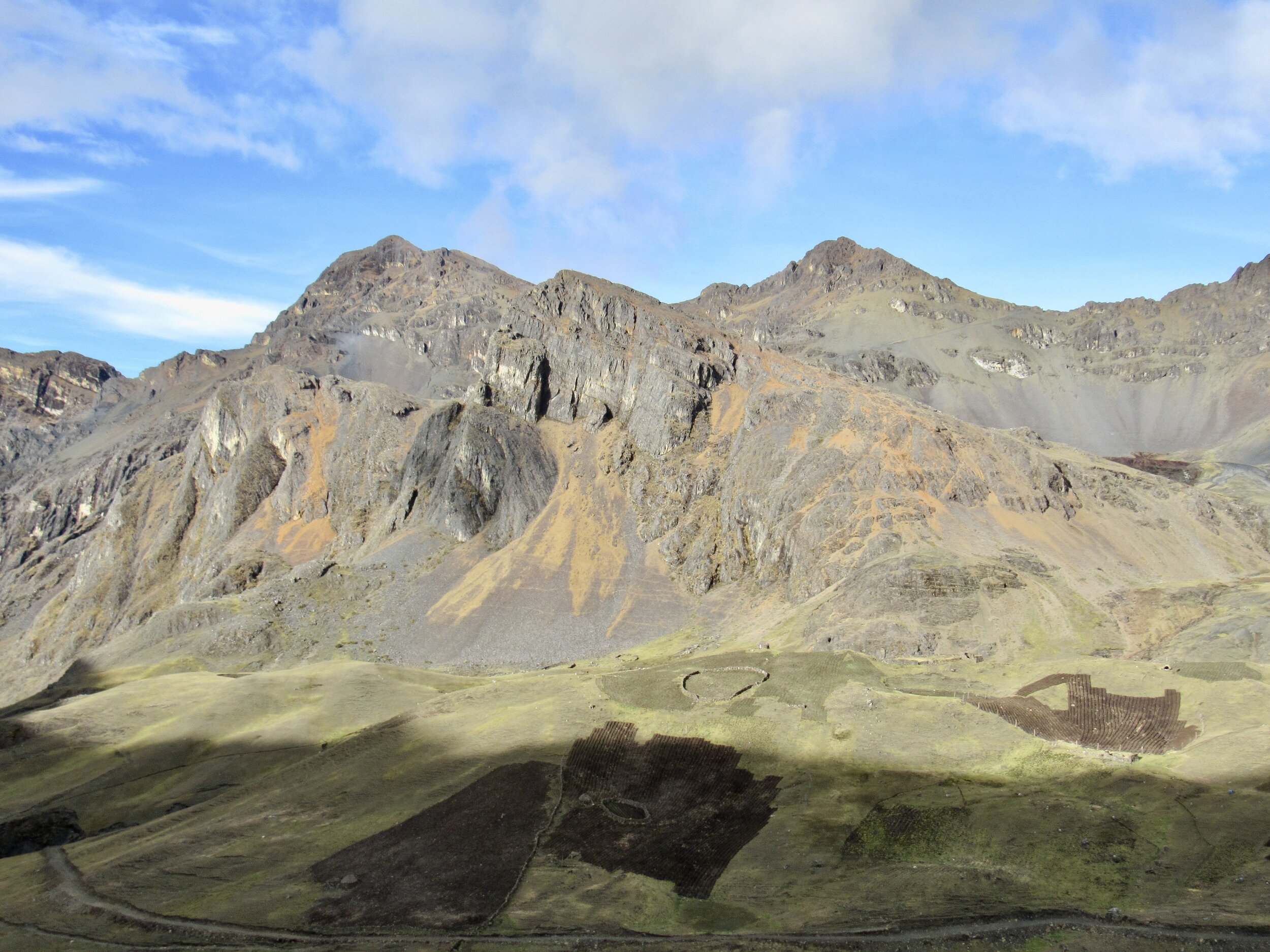
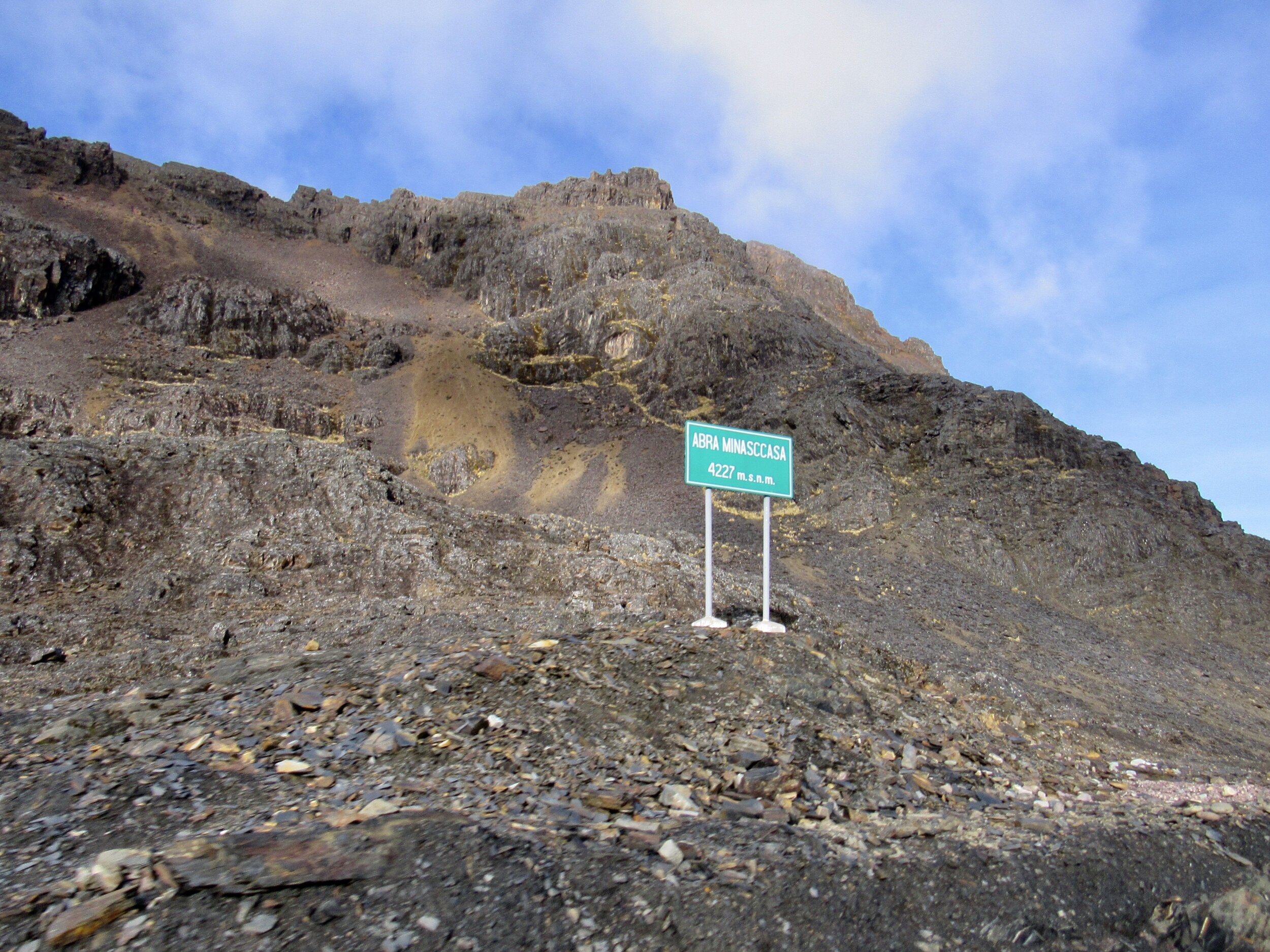
Monday, 21 December, 2020
Solstice is normally an important holiday for me, for my parents and for Peru. Growing up, my parents used to throw a Solstice Party and Mom would post sunrise and sunset times, so we could track the days getting longer. I loved December Solstice, because every day after that was longer, and therefore better. It was hopeful; it can only get better from here to summer.
Peru is too close to the equator for there to be a big difference between solstices, which is why last year I went to spend Solstice in Patagonia. The sun rose before 5am and set after 11pm. I got to see two species of penguins and lots of other wildlife. It was exactly what I was hoping for! Travel is still not really possible for me, so I am spending Solstice in Cusco this year.
While I’m hearing reports of countries ending lockdowns or starting lockdowns, ending or starting quarantines, Peru has mostly stayed the same. We still have a curfew. Masks are still required outside the home. Masks and face shields are both required on public transportation. Cusco is covered with posters about how to prevent Covid. Every business and all public areas like plazas and parks have handwashing stations. All of that has been the same since June, when we were finally allowed to leave our homes for more than just going to buy food or go to a pharmacy.
Except for the days I leave Cusco with the Covid Relief Project, or my backpacking trip around Mt. Ausangate, I still feel like I’m in an airport waiting room. It’s like the Bill Murray film Groundhog Day; nothing really changes. I can try to do different things, but it’s still the same day, every day.
Tuesday, 22 December, 2020
Today is day 282 of the state of emergency. Every once in a while I look at the Diresa website, to track the numbers in Cusco, but not as often as I was in September. We had a terrible outbreak in August and September, with over 2,000 new cases diagnosed every day. Thankfully, we have brought that number down significantly. Today, there were only 166 new cases and we’ve consistently had it below 200 for weeks now. In August and September we only had one ICU bed available, but now we have five available. There are only 23 ICU beds in the Cusco region, so we only have 18 people in ICU now.
Are those numbers low enough to have Christmas parties again? Probably not. Am I going to a Christmas party anyway? Well, yes. I’m going to risk it. Actually, I’m going to a big family Christmas Eve in Urubamba with Auqui, then to a Christmas day celebration with my expat family in Cusco. On the surface, that looks like a terrible idea. I am very aware that it only takes one person at either of those two events for all of us to get infected. I also realize that going from Urubamba to Cusco could take a Covid infection from one town to another.
I’m taking the risk because the numbers are currently very low and also because nobody in either of those circles has had Covid. I don’t know if that means I’ve gotten complacent or if I’m numb to the risk or if I just don’t care anymore.
Faced with the risk of travel in two months, a small part of me wants to just get Covid and get it over with so that when I’m traveling I won’t have to worry about getting infected. Even if post-infection antibodies decrease after four or five months, right now I’m worried about February, not June. If I just had Covid now, not only would I not have to worry about catching it in the Cusco, Lima, Mexico City, Seattle or Boise airports, I wouldn’t be contagious by the time I got to Boise. I really would have to get infected in the next week or two, so that I would for sure be recovered by February 17th, when I leave Cusco.
The probability that I would have a severe case of Covid is low. However, it’s one of those low risk, high consequence situations. It’s like wearing a seatbelt. Of the thousands of times that I’ve ridden in a car, wearing a seatbelt, I’ve only ever needed it once. That one time, it definitely saved my life. The probability of rolling an Isuzu Trooper is very low, but the consequence of not wearing a seatbelt in a rolled Isuzu Trooper is very high.
I know that it’s not really worth the risk. I need to try to be as safe as I have been the past nine months. In February, I’ll probably want to do a more serious self-isolation kind of quarantine.
For now, I’m going to be careful, but still go to two Christmas parties.
Wednesday, 23 December, 2020
There will be about ten people at Kerry’s Christmas party. She’s actually renting out an AirBnb with five bedrooms, a big rooftop with an incredible view of Cusco, and a big kitchen and dining room. My favorite part of the photos she showed me on AirBnb was the giant dining table with bench seating. It reminds me of the Frenchglen Hotel, in Oregon, which serves a Thanksgiving dinner every day, with family style serving around a giant table with bench seating.
Before the pandemic got bad, my friend Amanda managed to travel to Peru and visit me in February. She brought me a bag of Tollhouse chocolate chips. A giant bag of a whole pound, to be exact. Even though I was stress baking a lot in April and May, I stuck with apple pies. I didn’t want to waste something as special as real Tollhouse chocolate chips on myself. I wanted to make a giant batch of cookies for some occasion when there would be other Americans who would appreciate how amazing it is to have Tollhouse chocolate chip cookies in Peru.
I had hoped that by November the pandemic would be under control enough that I would be able to have a big birthday party. That didn’t happen. Then Thanksgiving was deemed too dangerous and I made an apple pie for my one guest. But Christmas, with Kerry’s party, is too good to pass up.
My oven is small and my cookie sheet is so small that I can only make six cookies at a time. The first six were strangely flat. I tried refrigerating the dough, thinking that maybe that was the problem. A dozen cookies later I called my Mom, who reminded me that I live at 11,000 feet and that even 3,000 feet of altitude is enough to require recipe modifications. I added some flour and turned up the temperature.
It took me about four hours, baking six cookies at a time, to get through all of the cookie dough - and I saved some in the freezer for topping ice cream. I’m going to keep it a surprise for Christmas. There will be three other Americans there and I know that they will appreciate how special it is to have Tollhouse chocolate chips in Peru.
Baking at altitude
The bottom cookie was made by following the recipe on the Tollhouse chocolate chip bag. The top cookie was made with additional flour and baked at a higher temperature to compensate for the altitude.
Thursday, 24 December, 2020
Yesterday was the cookies and today is the apple pie. I promised to bring dessert to Kerry’s Christmas party tomorrow partly because that’s what I’m good at and partly because this afternoon I’m going to Urubamba and I hope to be back in time for her Christmas dinner tomorrow, but transportation might be complicated on Christmas.
All Granny Smith apples in Peru are imported from Chile. There are some apple varieties that grow in Peru, but I really don’t know why Granny Smith don’t grow here. Regardless, I won’t make apple pie with any other variety, if I can help it. Last night I mixed up the pie crust, cut it in half and left the two balls of dough in the fridge overnight.
Lemons are also hard to find here. There is a sweet variety of lemon, that barely looks like lemon and currently isn’t in season. Limes are ubiquitous in Peru, but I prefer lemon juice to keep the sliced apple from turning brown before I get the pie in the oven. Just like the recipe modifications for the cookies, pie has to be cooked longer and at a higher temperature at this altitude.
After I finally got the pie out of the oven, I took a taxi to the bus stop for Urubamba. Taxis are usually s/4 but for Christmas everybody had jacked the price up to s/6. That’s still only about $1.60, so I’m not complaining. Where usually there are several vans trying to get people to go to Urubamba, today there was a line of people waiting for the next van to get back to Cusco. Apparently there are a lot more people traveling on Christmas Eve than there are people willing to drive back and forth from Urubamba.
When I finally got there, it was already getting dark and Urubamba was lit up with Christmas lights. It’s a very cute little town, with a nice green park with statues and fountains in the middle of the main plaza. The town hall had a big nativity scene set up, with baby Jesus wearing a traditional Quechua outfit, similar to the people I met on Sunday in Hatun Q’ero.
Auqui’s family also has a large nativity scene set up in an outside area that has a roof over it. There are lights around the nativity scene and their baby Jesus is much more traditional, wearing a little satin gown with lace.
At about 11:00 we had chicken and potato soup, followed by hot chocolate and panettone. Chocolatadas are not only for charity events like the Covid Relief Project. All Peruvians hold chocolatadas with friends and family, coworkers and neighbors and the hot chocolate is always made with pure cacao. With about twenty people for the chocolatada, Auqui’s sister Griselda used a one kilo brick of cacao, just like the ones we had bought for the Covid Relief Project. Just like every rural village we’ve been to, she boiled water with cloves, cinnamon sticks and the chocolate, then added milk and sugar.
After the chocolatada, we went outside to the nativity scene for some family traditions and the confetti. This is probably my favorite part of holidays in Peru. For birthdays, Christmas and New Year, you get a big handful of confetti and put a little on everybody’s head as you give them a hug and wish them Merry Christmas or Happy Birthday or Happy New Year. By the end of the hugging, everybody has a pile of confetti on top of their head. Except for holding the event outside, there were no other modifications for the pandemic. We weren’t wearing masks while we were hugging everybody in the family, even for Auqui’s father who is 83. Considering that so far nobody in the family knows anybody who has had Covid, they are clearly willing to take some calculated risks.
Peruvian nativity scene
There is no plastic made in China in a traditional Peruvian nativity scene. The decorations are natural mosses and plants gathered in the nearby cloud forest. This presents it’s own environmental challenge, but at least it’s not plastic. The most traditional baby Jesus is actually made from corn flour. Most are ceramic now, but they are still made locally. The monkey hanging upside down to the left of Jesus is a family inside joke and certainly not traditional. Under the white veil is a second baby Jesus that is usually taken out on Christmas Eve and taken to the church for mass. This year, with the pandemic, only one person from the family went to mass.
Friday, 25 December, 2020
This morning I had a traditional Christmas breakfast with Auqui’s family, which included a soup similar to our 11pm meal last night. We walked around town a bit, masked because we were in public. Urubamba currently has between 0 and 5 new cases per day, so people are pretty relaxed, even if they’re all still required to wear masks.
Around noon I left Urubamba to go back to Cusco for Kerry’s party. After a quick stop by my place for the pie and cookies, I walked up to the rented party house. It’s actually a hotel named the Blue House, just above the San Blas viewpoint. The view from the rooftop is amazing and as soon as the sun came out we all went upstairs to enjoy seeing Cusco laid out at our feet.
Sonia organized a gift exchange game, which required each person to bring three gifts. Since a roast dinner takes a very long time, we played the gift game before dinner. After the game, Kerry put my presents from Mom under the tree. Two weeks ago, when a box of presents arrived from my Mom, Kerry wrapped each one for me. It’s easier for customs if nothing in the package is wrapped, but obviously more fun for Christmas if everything is wrapped. I got six books, rose hand lotion and a Mark Twain quote on a little dish: “Forgiveness is the fragrance at the violet sheds on the heel that has crushed it.”
Kerry got up at 6am today to get the turkey in the oven, then she started on the sides: roasted carrots, crispy roast potatoes, mashed potatoes, mashed sweet potatoes, green beans, braised red cabbage in balsamic vinegar, cheesy leeks and pigs in a blanket. She had also bought a smoked ham, which barely fit on the table. It was an impressive spread, which I loved except that we all ate so much that even two hours after dinner nobody was able to eat the apple pie or cookies. They’ll make a great breakfast.
Saturday, 26 December, 2020
Despite our best intentions, there will be no chocolatada today. All week we couldn’t get anybody to answer our calls or messages. Since the Covid Relief Project is dependent on local government to provide transportation, there’s really nothing we can do about people taking vacation for Christmas. New Year will probably also be a challenge for us. I’m hoping that we will be able to get it together to do our last chocolatada on Sunday, January 3rd.
Since I unexpectedly had today off, I decided to apply for new job. Besides Hannah, who sells sweaters, all of my other expat friends in Cusco have turned to teaching English online during the pandemic. Kerry used to teach English in person and Sonia used to teach yoga in person. So, I’ve decided to join the bandwagon. After hearing all of them complain about various aspects of several different companies, I decided to go with Cambly. It’s currently Kerry’s favorite, is based in San Francisco and pays in US dollars. If I decide to work with Cambly, they’ll pay me about twice what I’ve been charging people here for in person lessons. Considering that I plan for the Covid Relief Project two wrap up in the next week or so, I should have some time soon to actually get a job.
Since this is my first Saturday in Cusco since November, I went one last time to the used clothes market Baratillo. With only s/73 ($20) I bought three large sacks of warm coats and sweaters. However many families are at this next village, the clothes we have will just have to be enough. I’m always worried that we won’t have enough clothes, although at the past five villages we have had extras that we ended up taking back to Cusco. As our last chocolatada, I am determined to bring nothing back to Cusco after this next village.
If I continue to receive donations, I’ll organize a school supplies drive and take it to one or more of the villages that I already know. The places we visited on December 5th, along with both communities I’ve seen in the Q’ero Nation will all need school supplies when school starts again in March. The 2020 school year wrapped up just before Christmas for students, although teachers here have a lot of reports and end of year paperwork to get through. We are all waiting for the government to decide if school will be in person next year, or if kids will have some sort of hybrid learn from home with a little time in school. I highly doubt that school in 2021 will look like school in 2019, but there’s still no telling what next year will bring.



